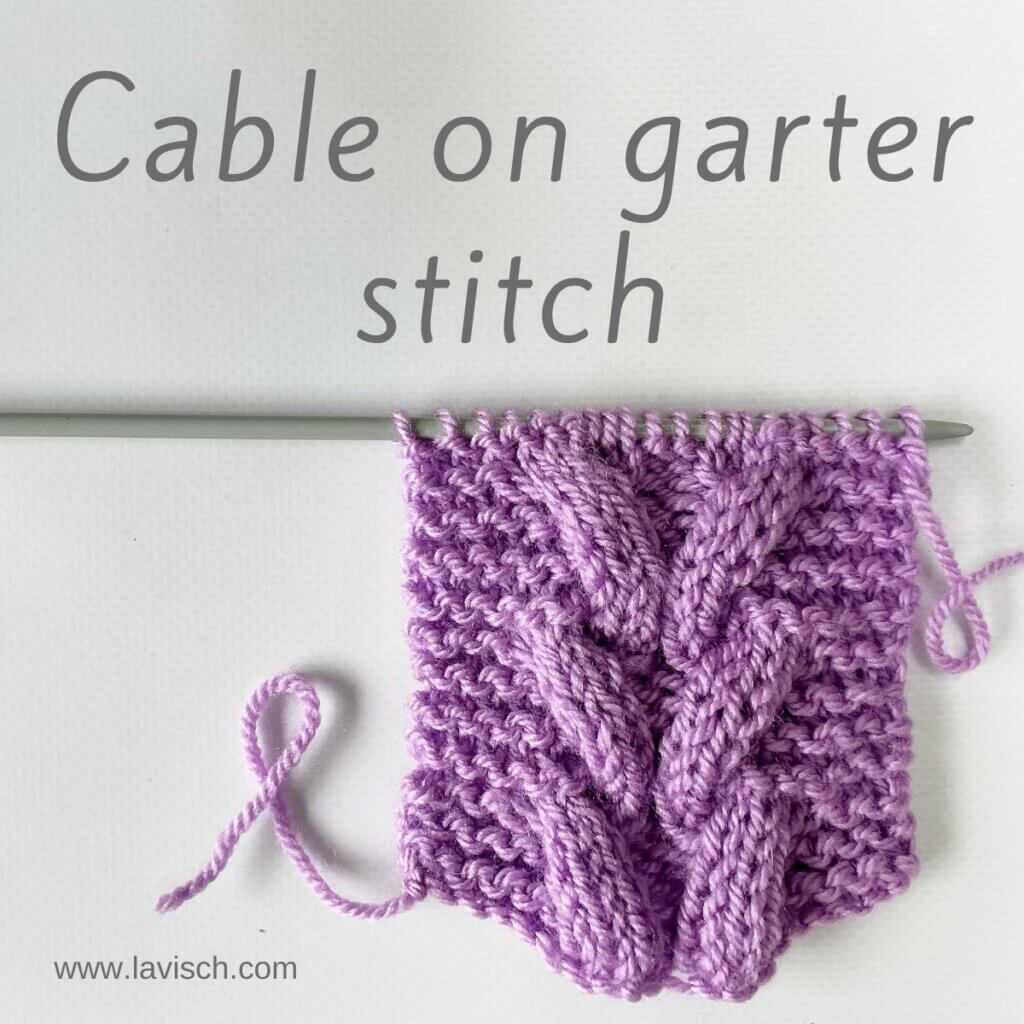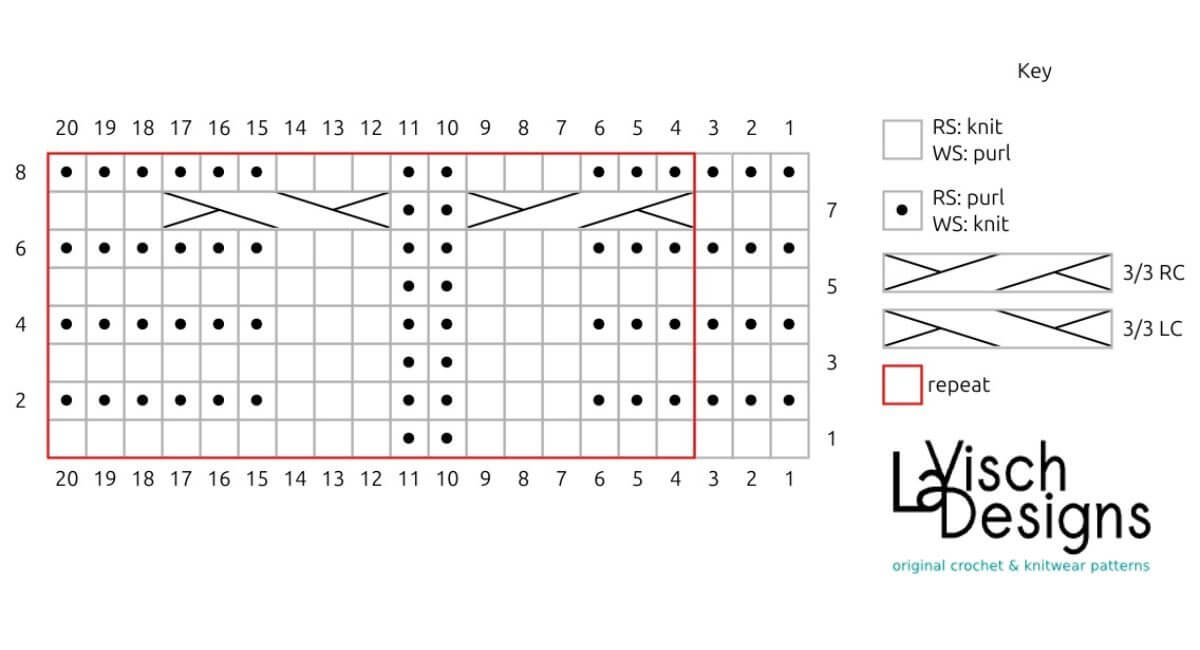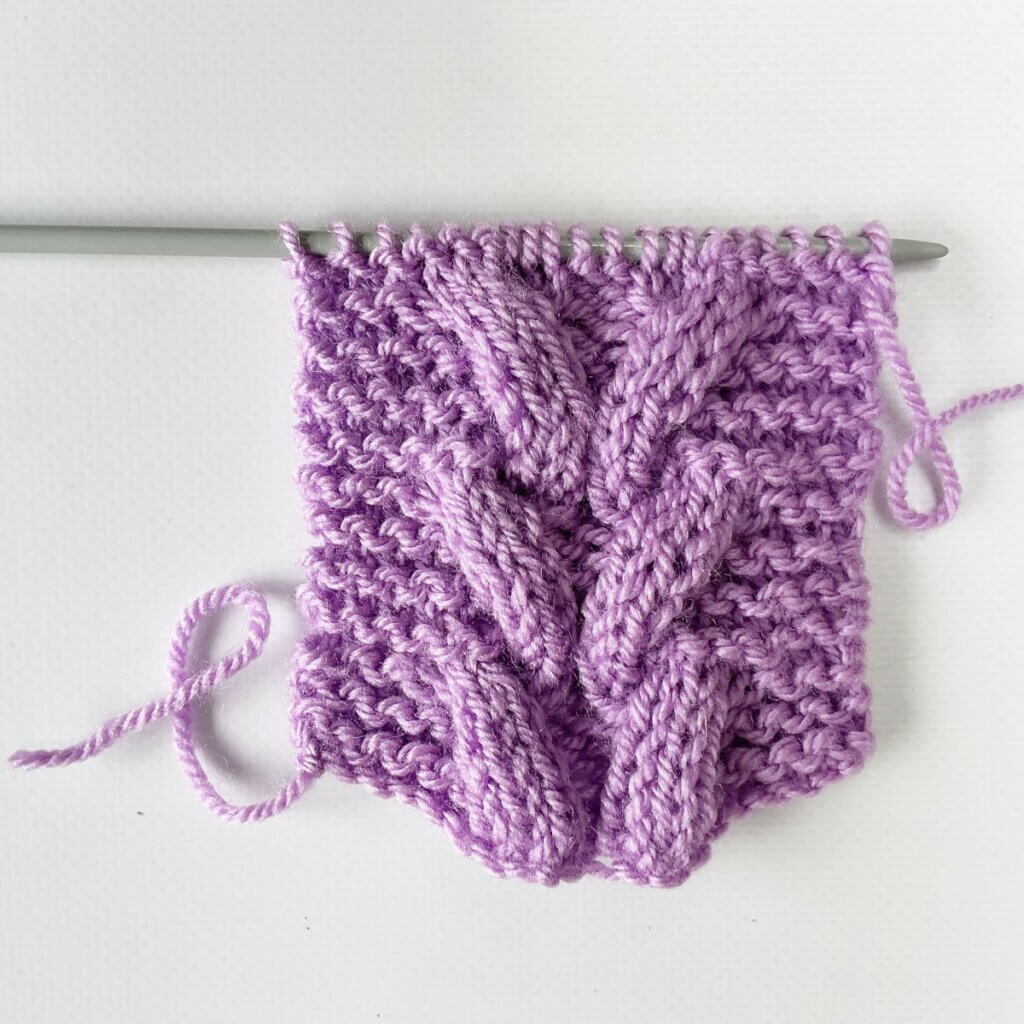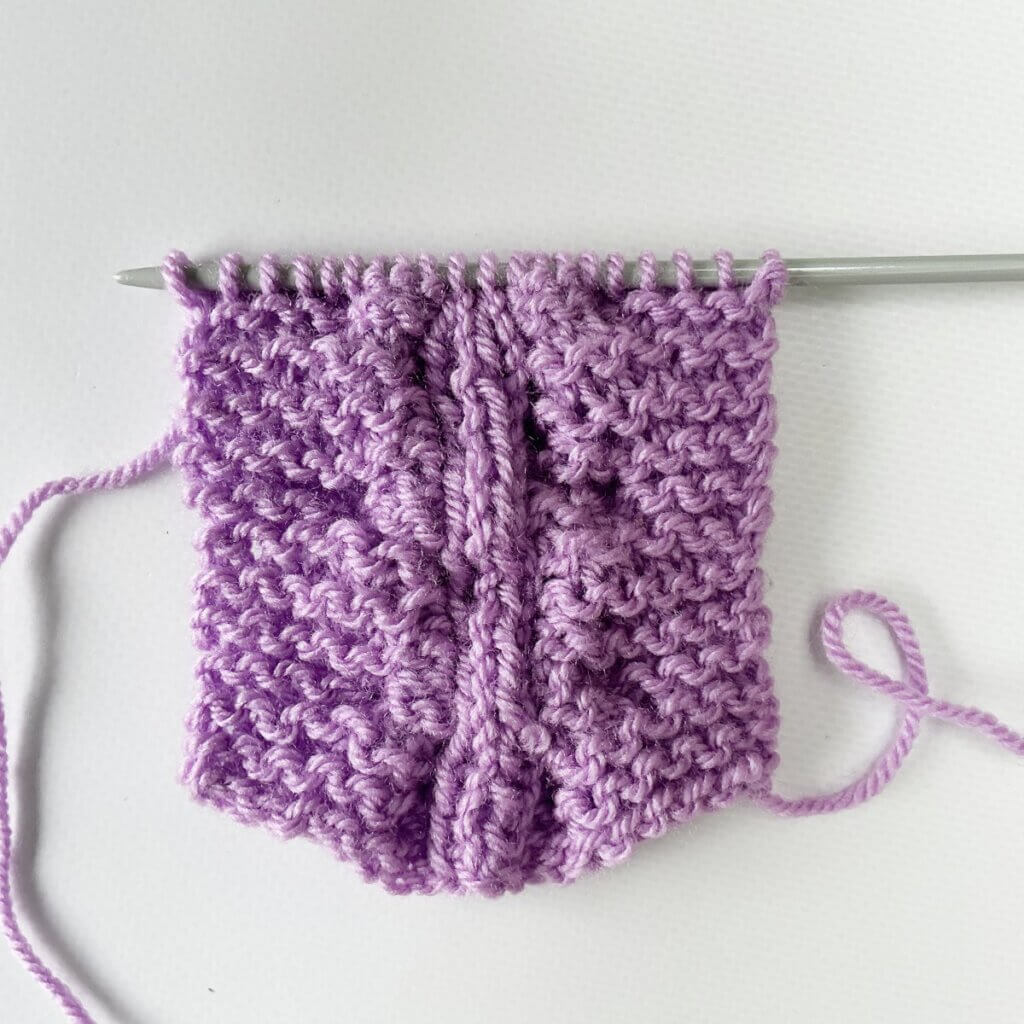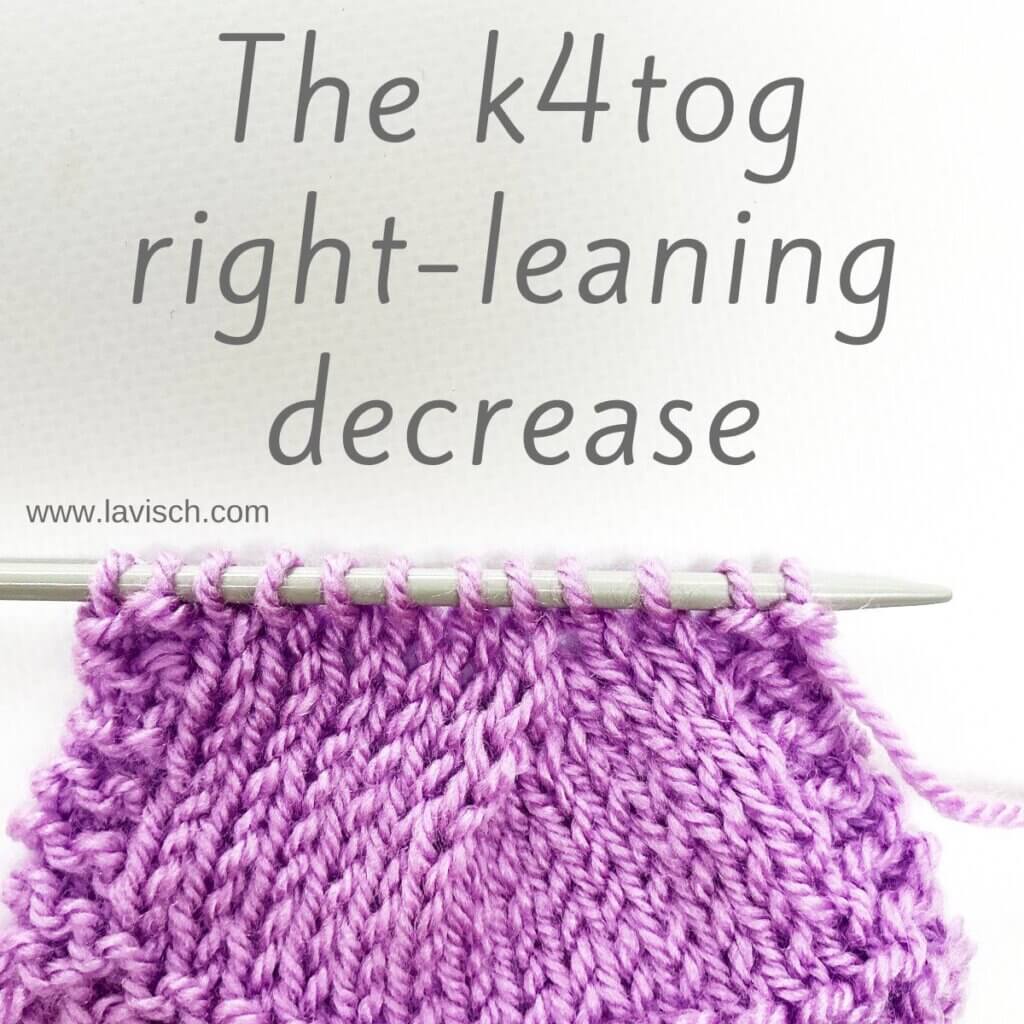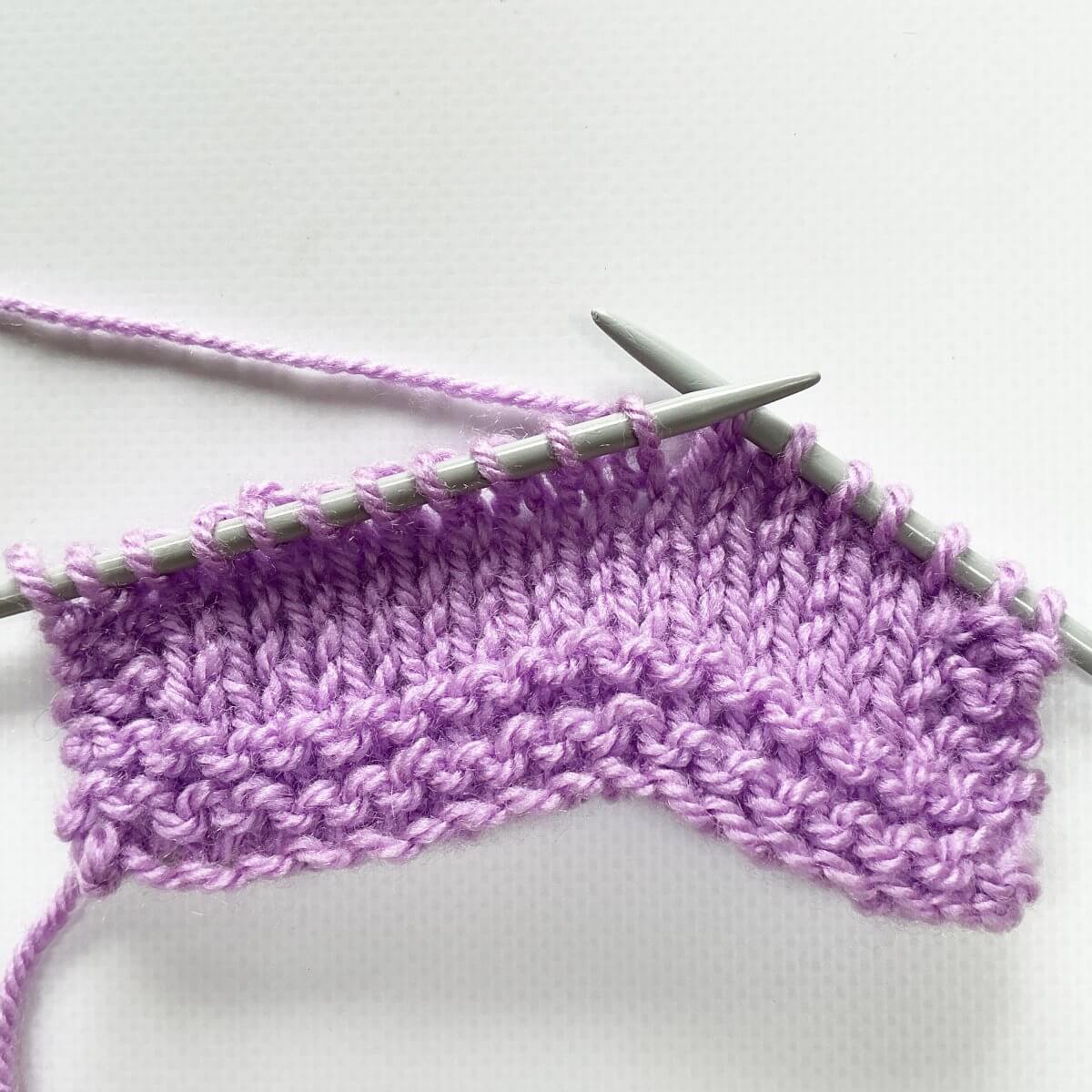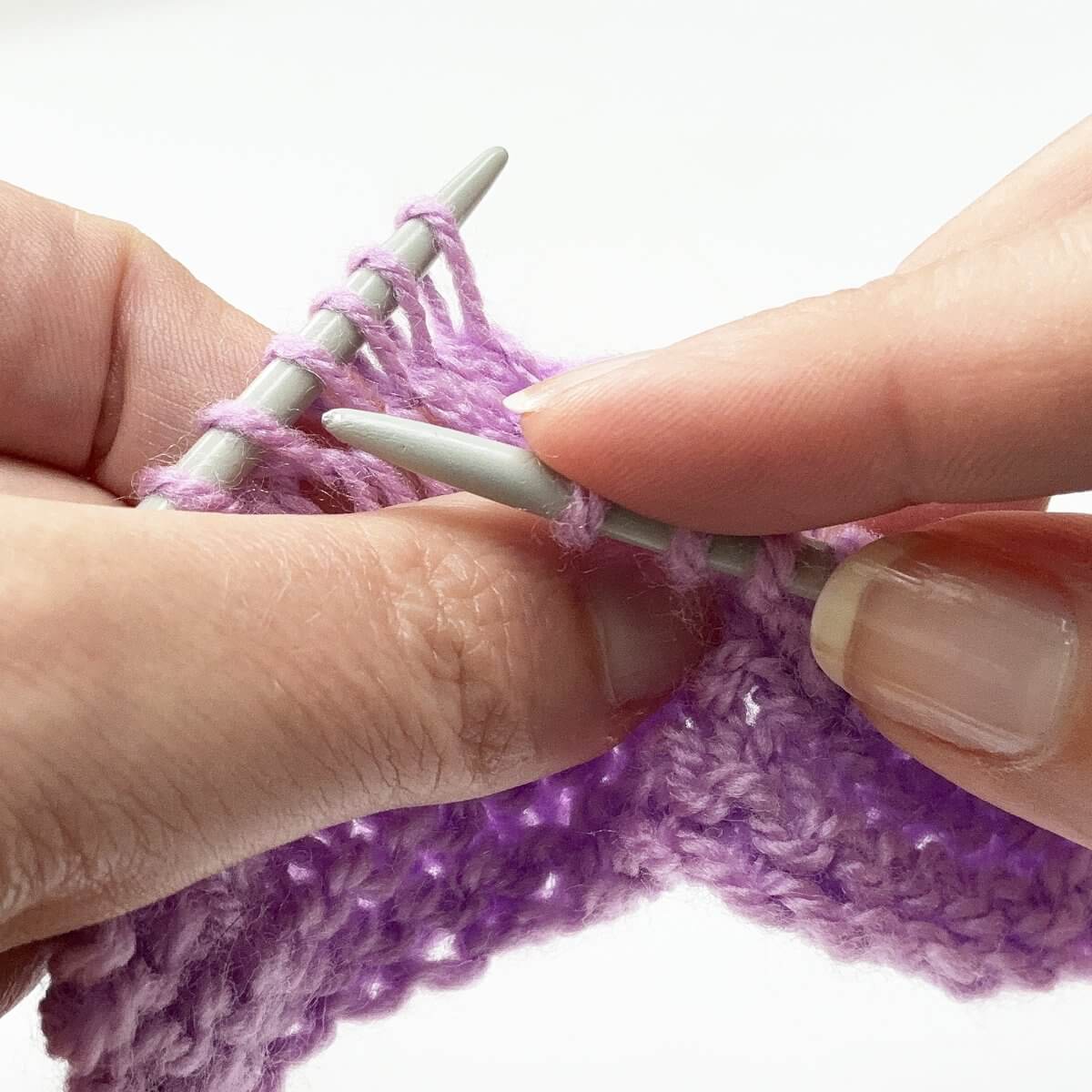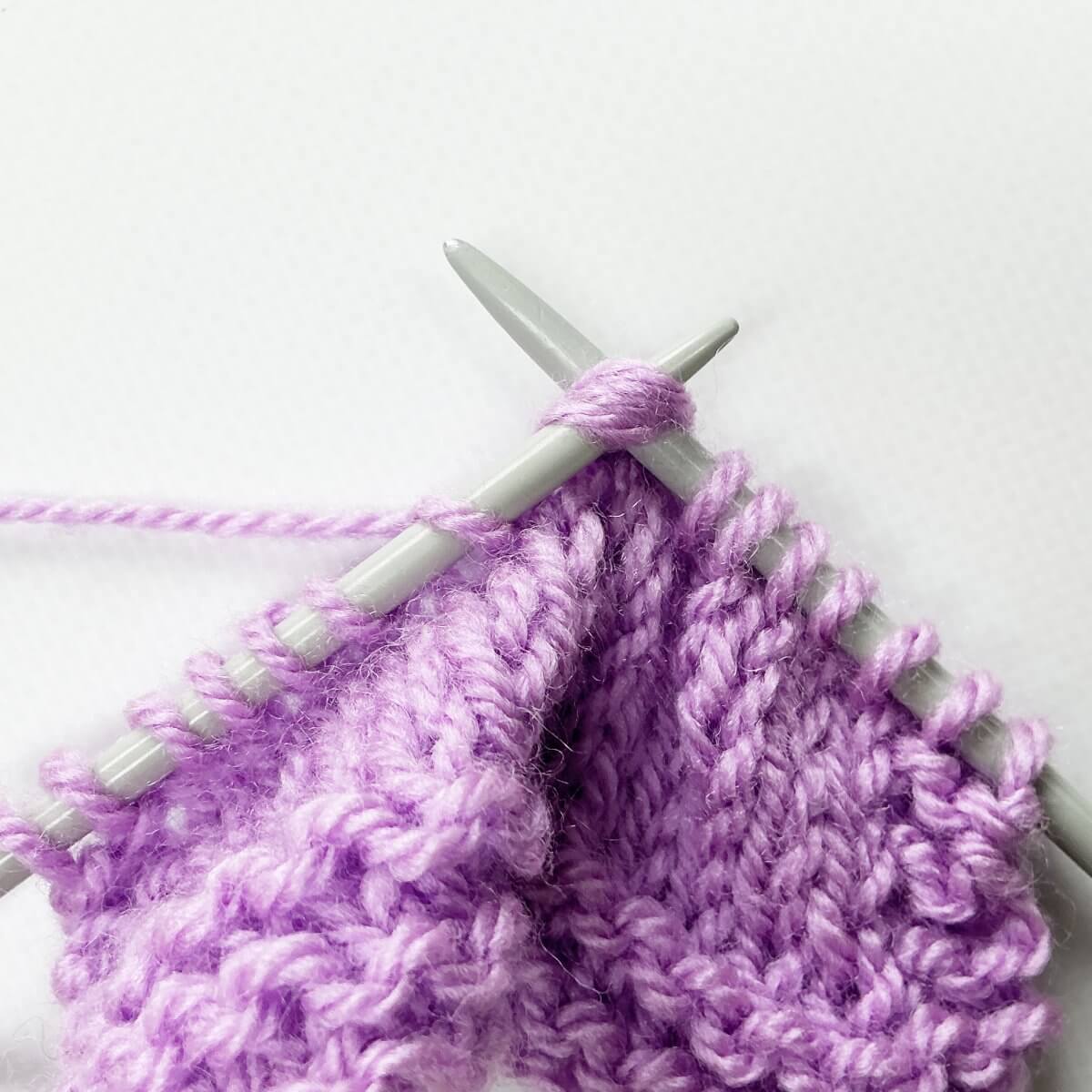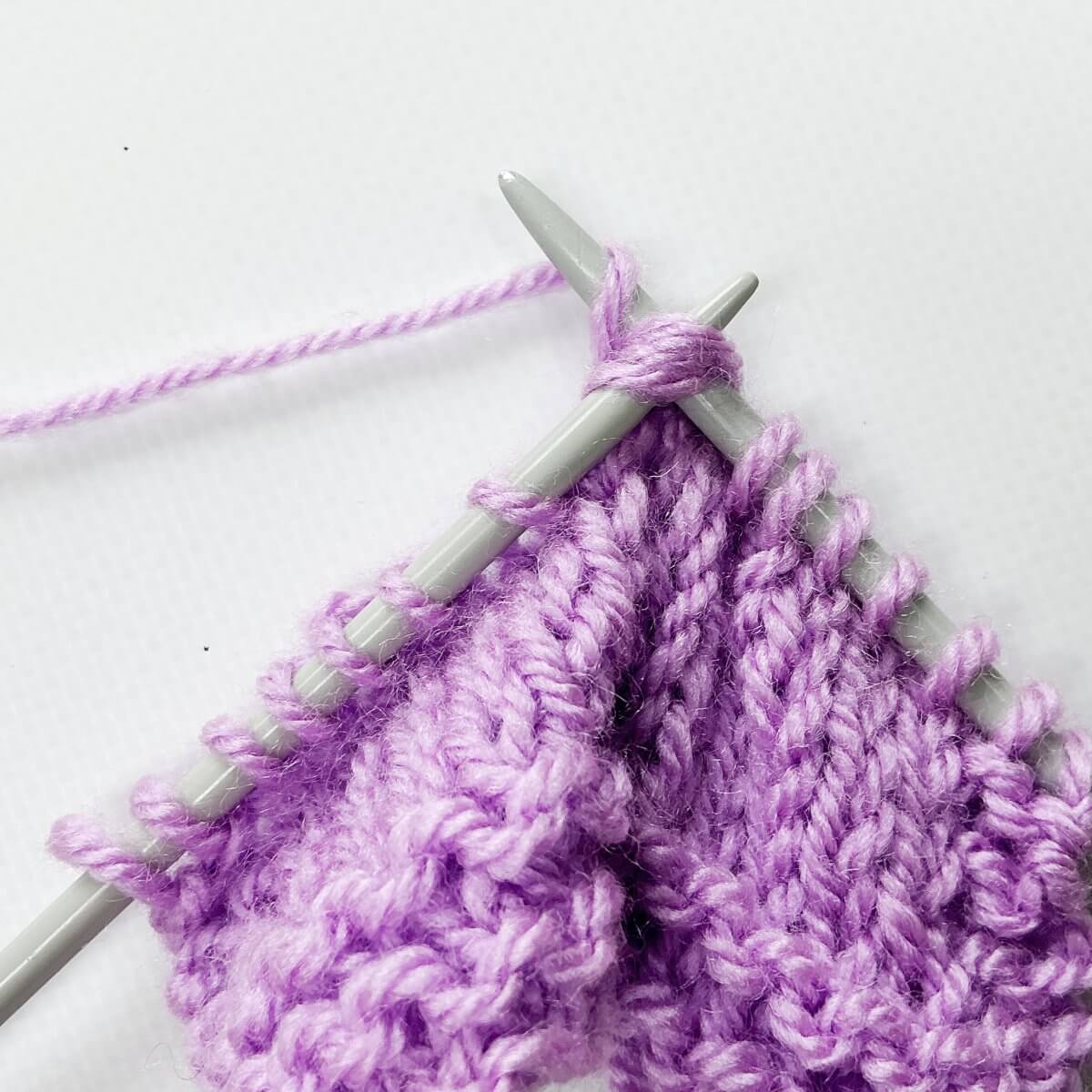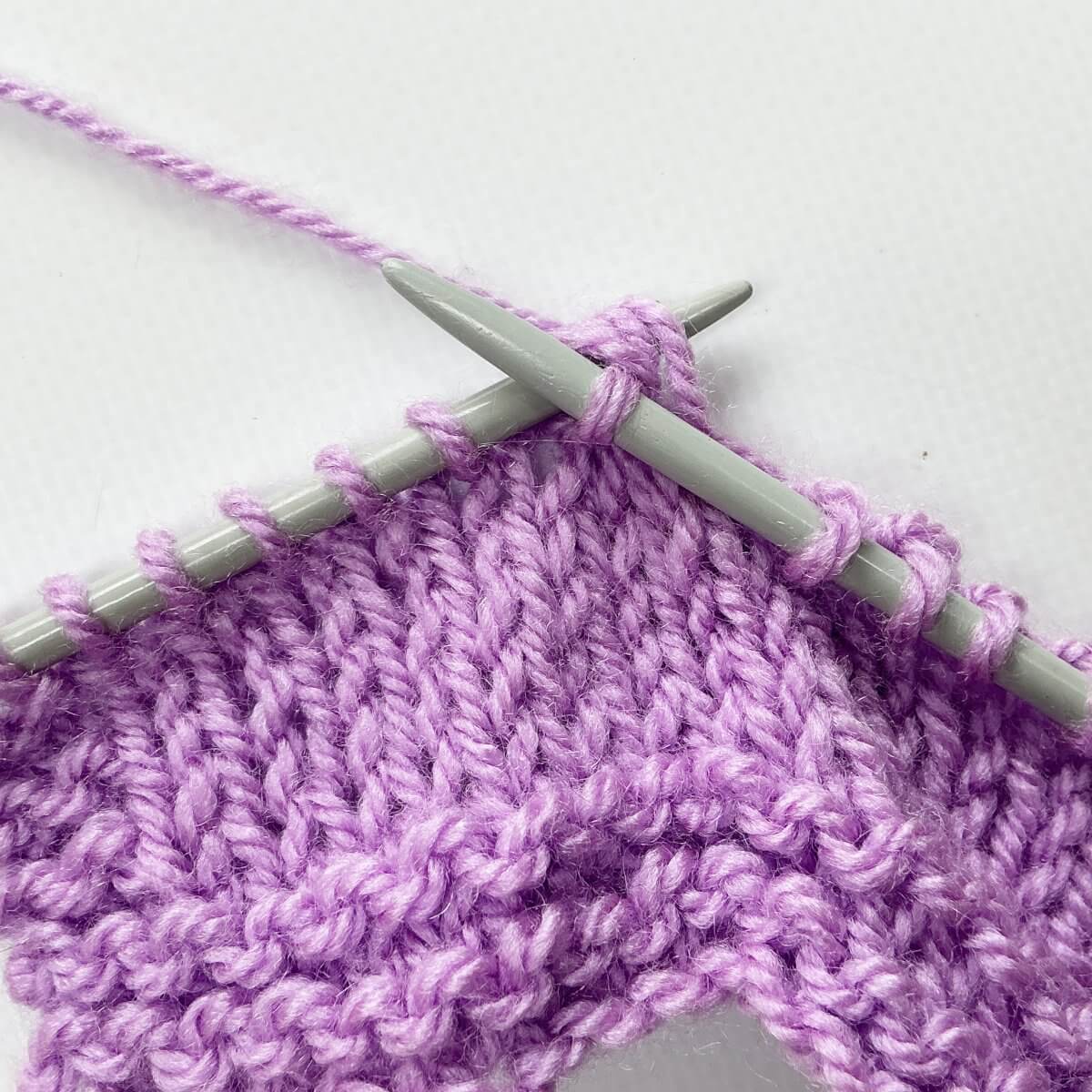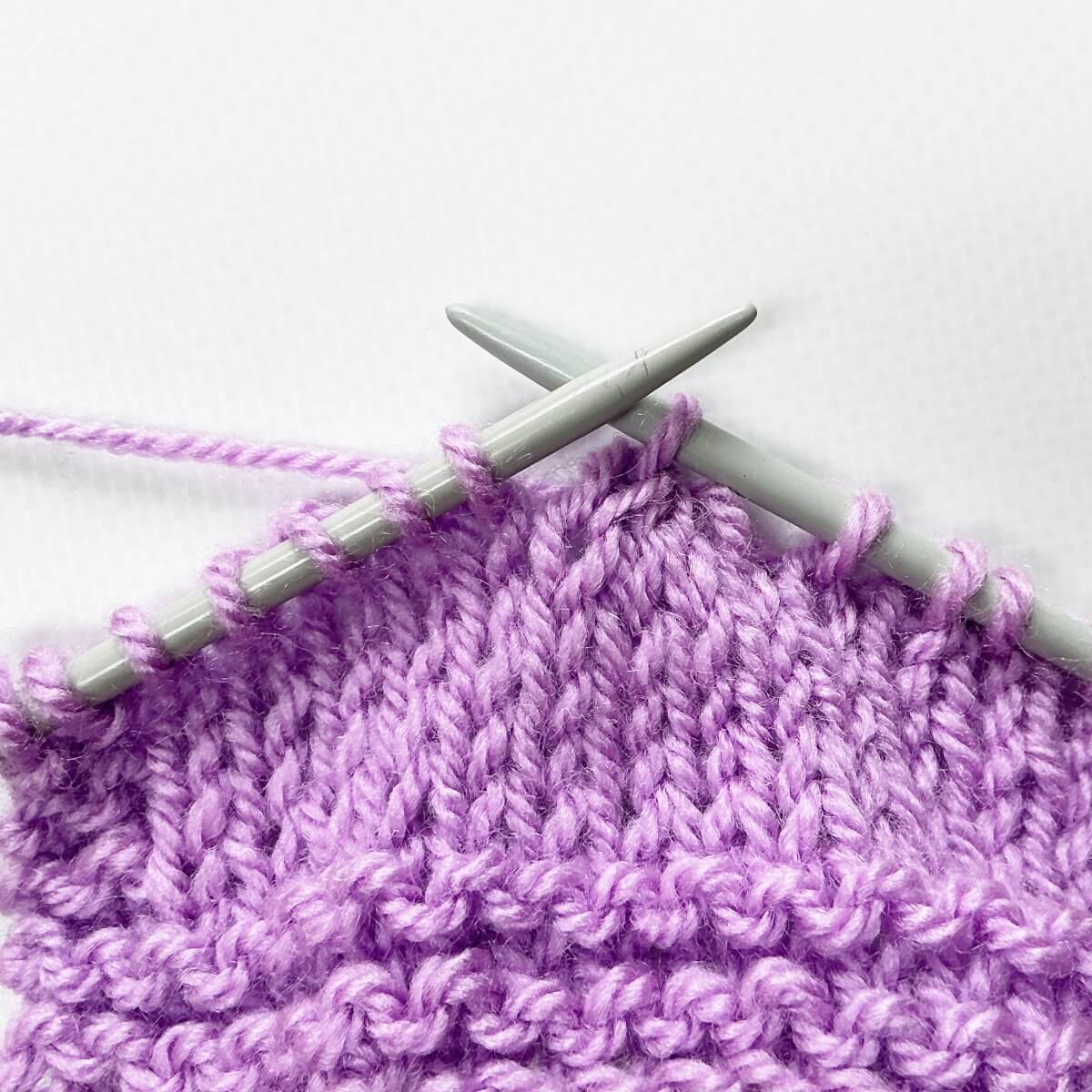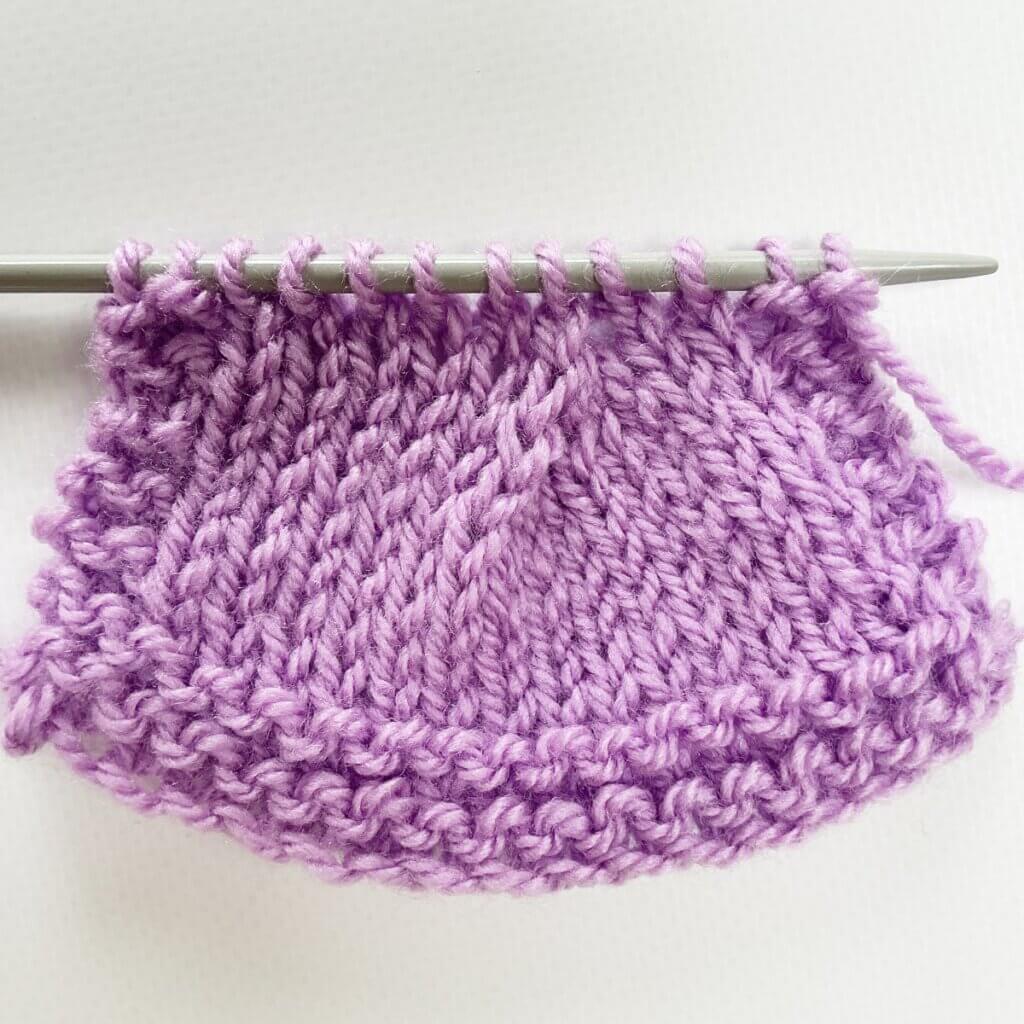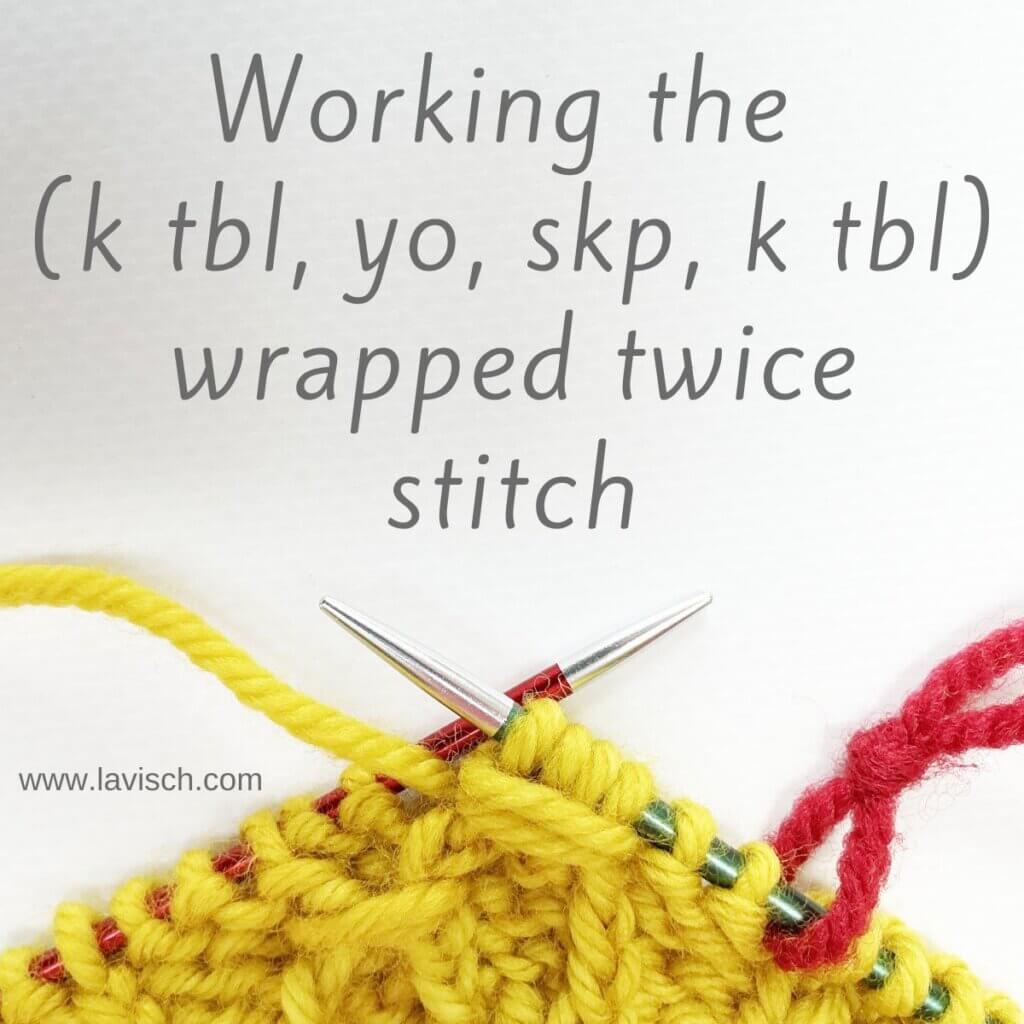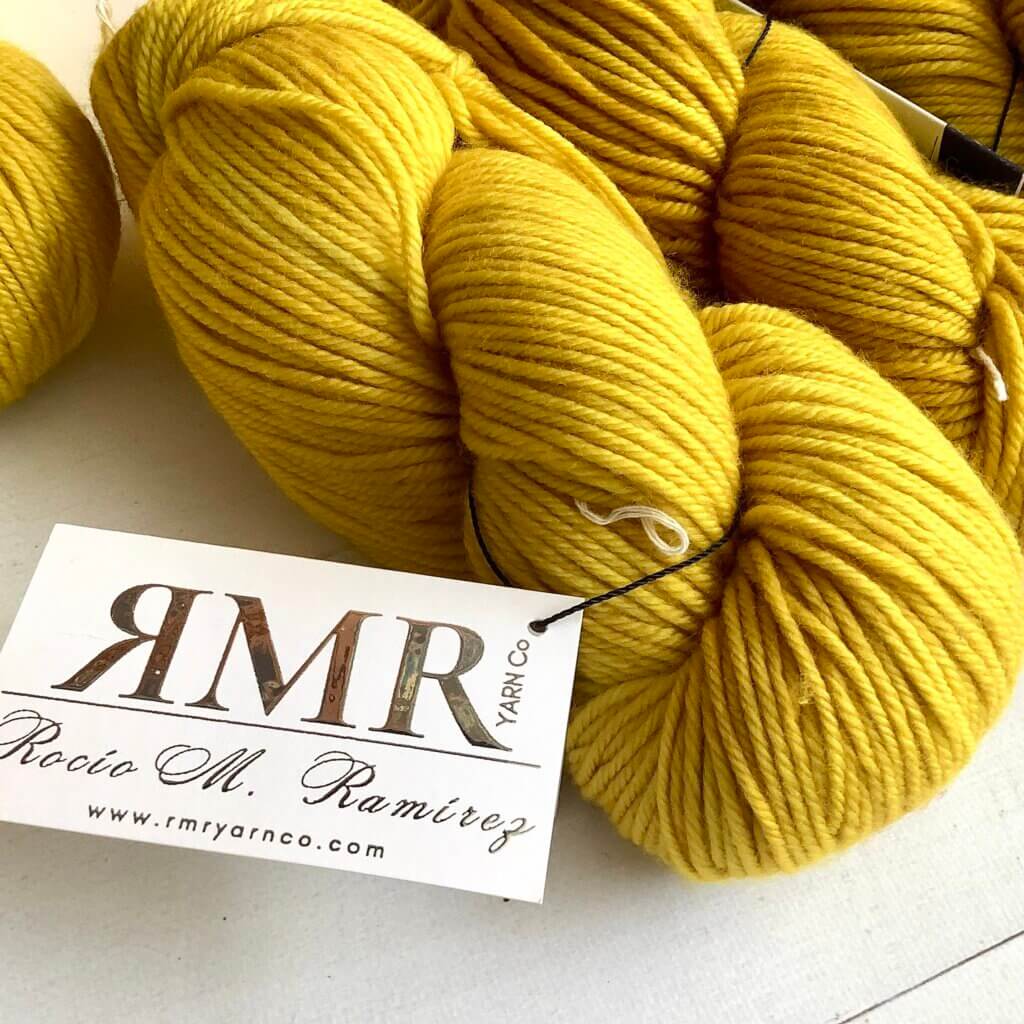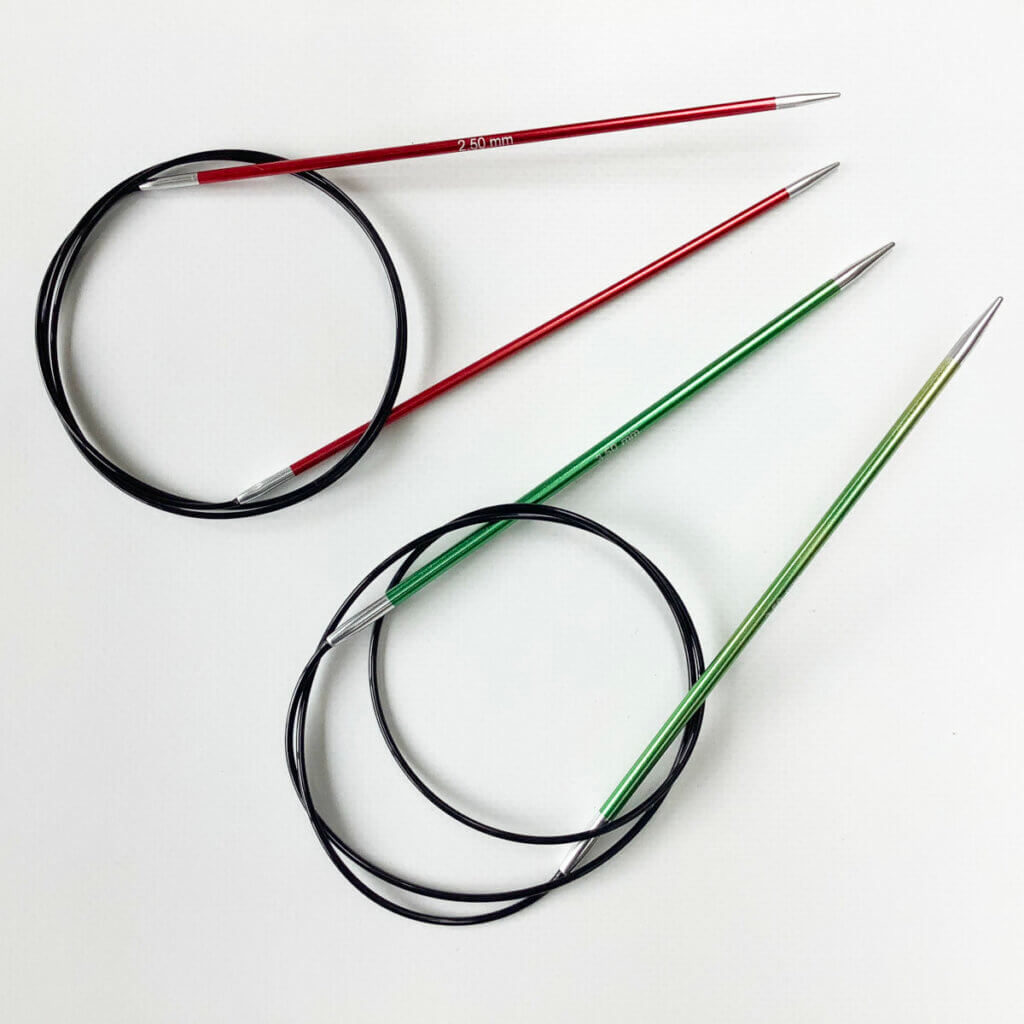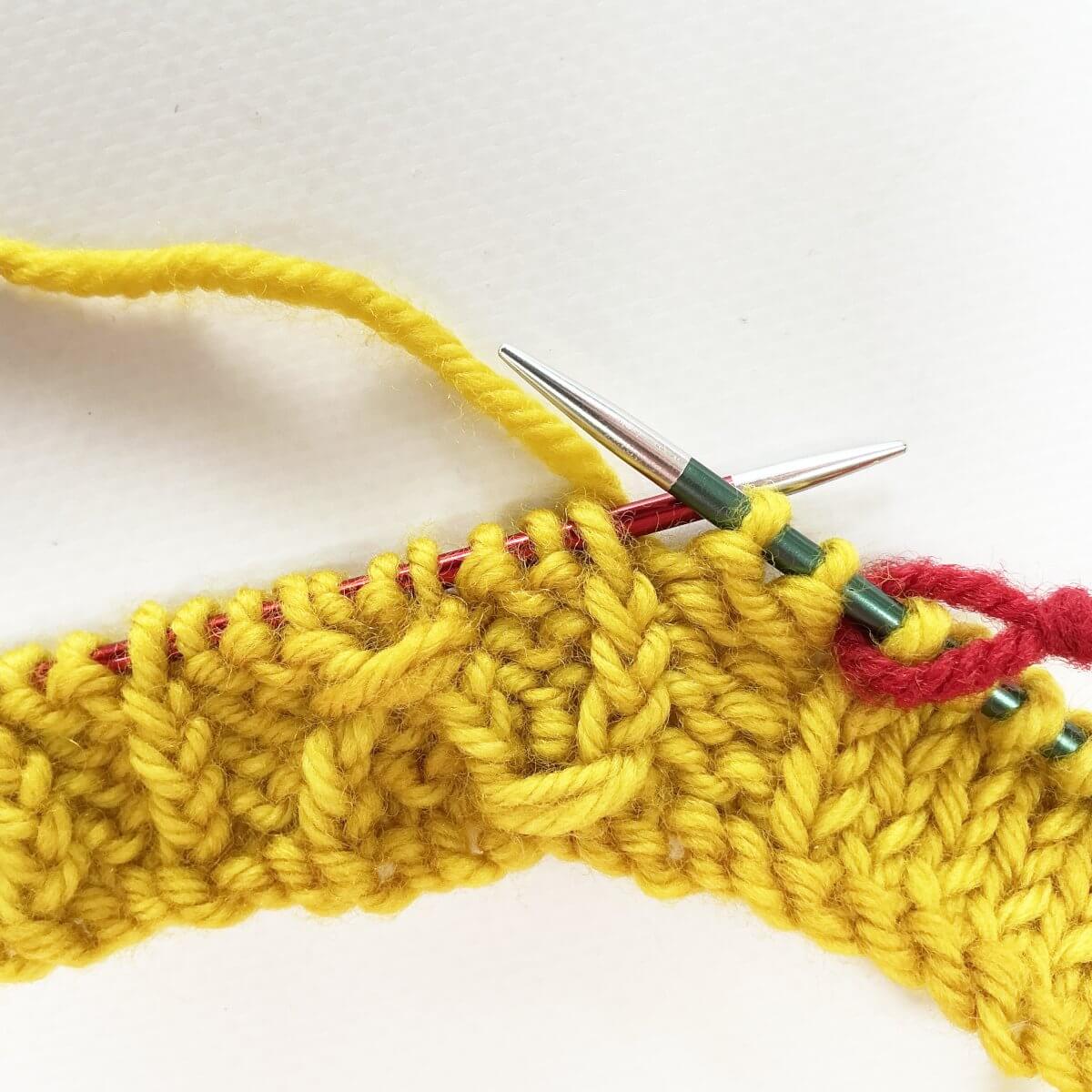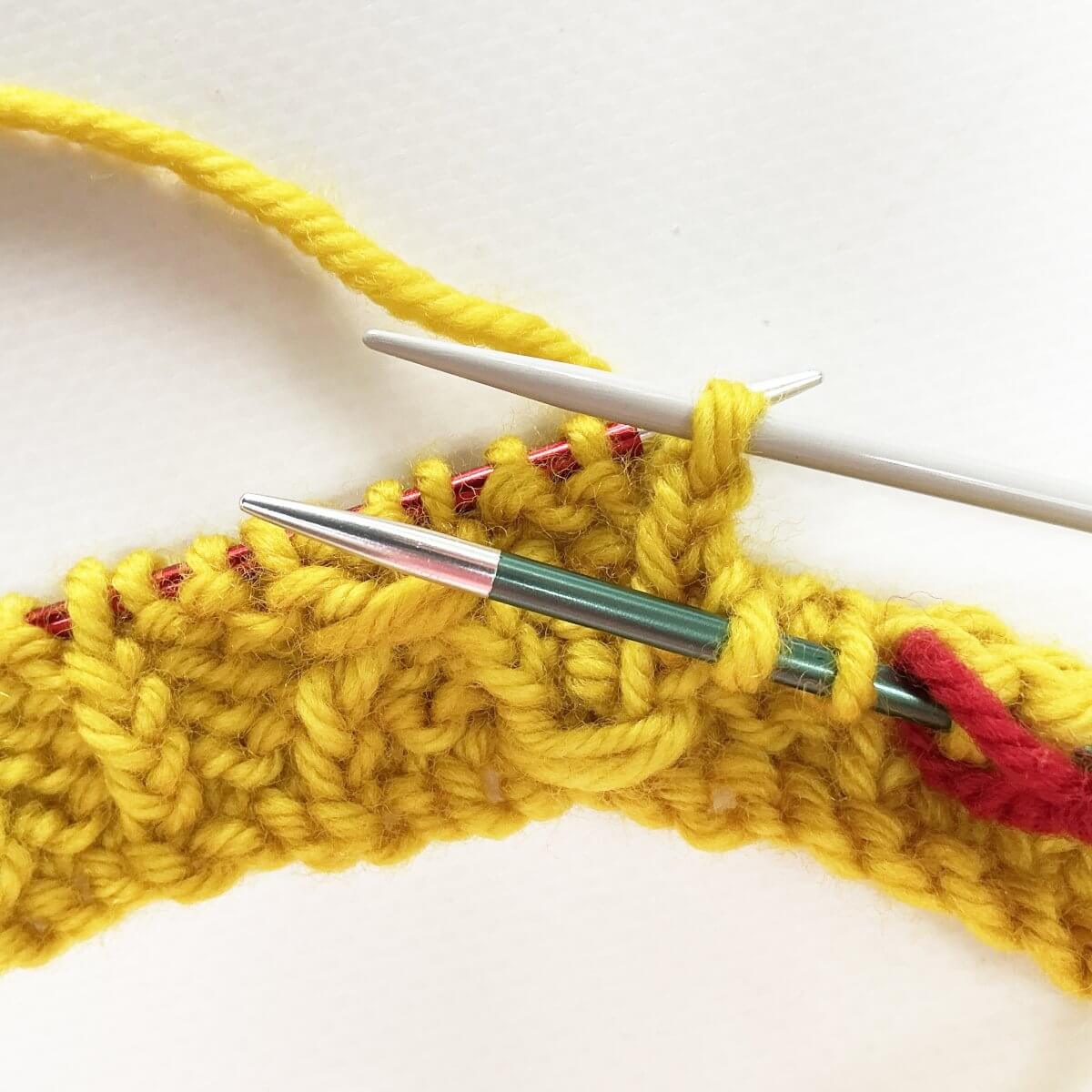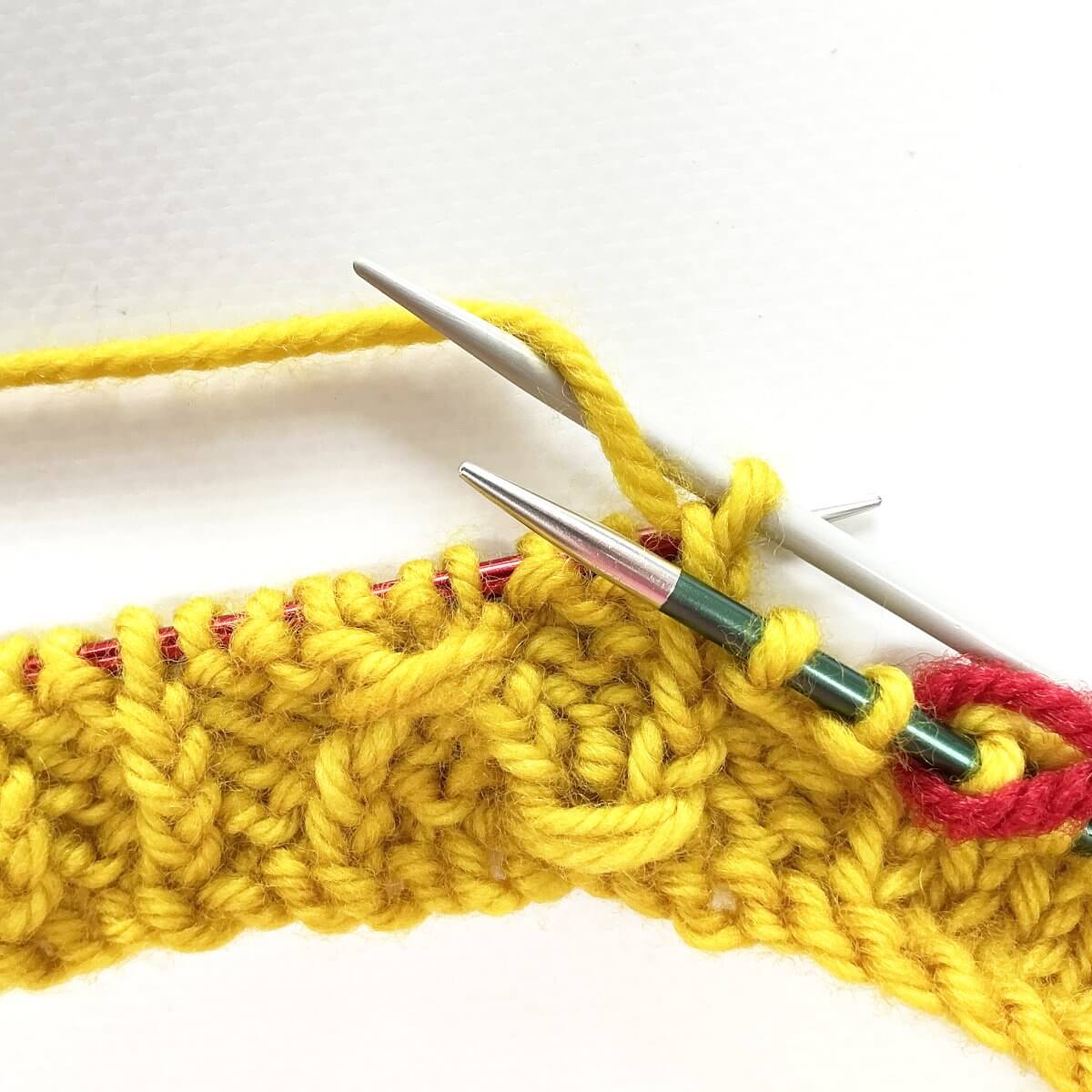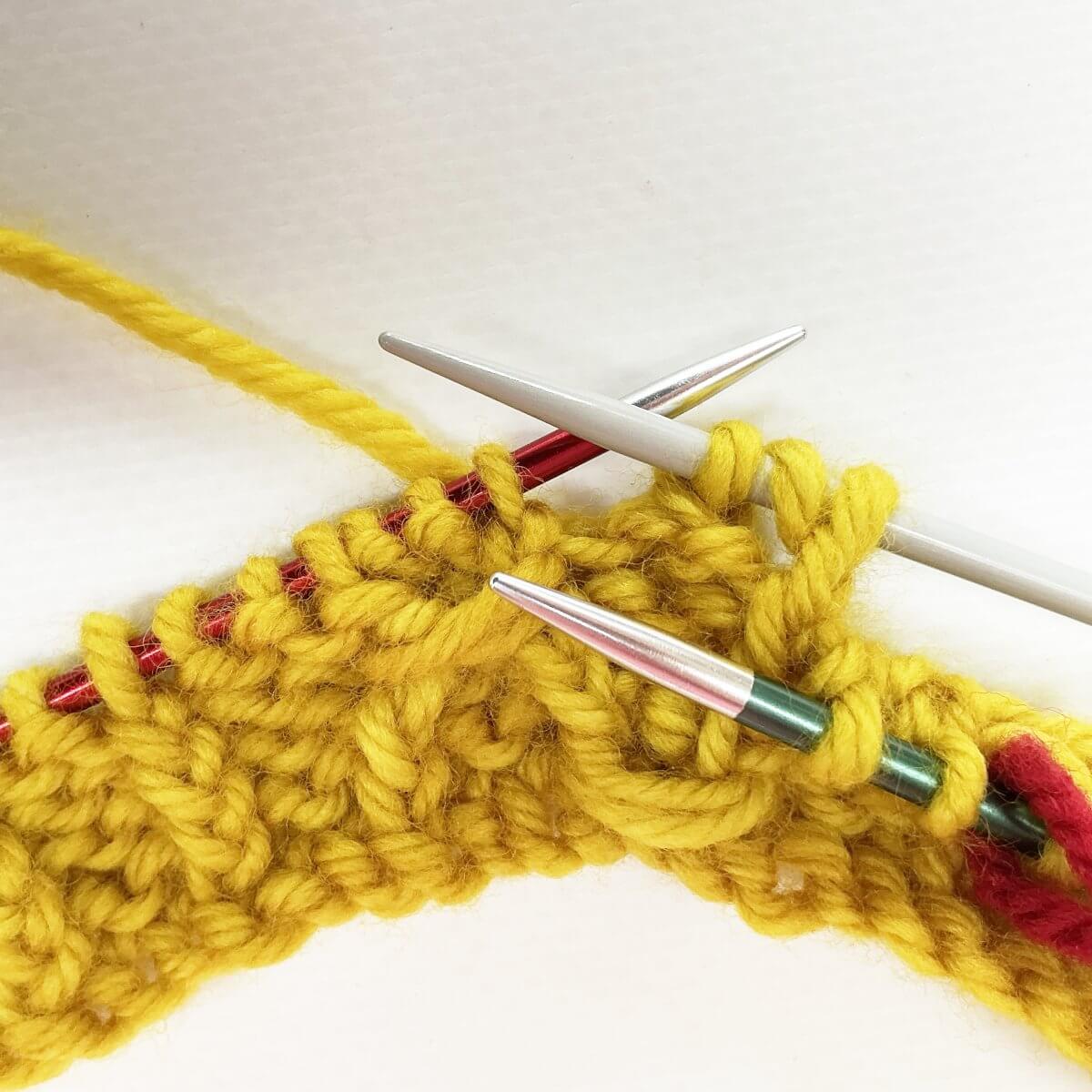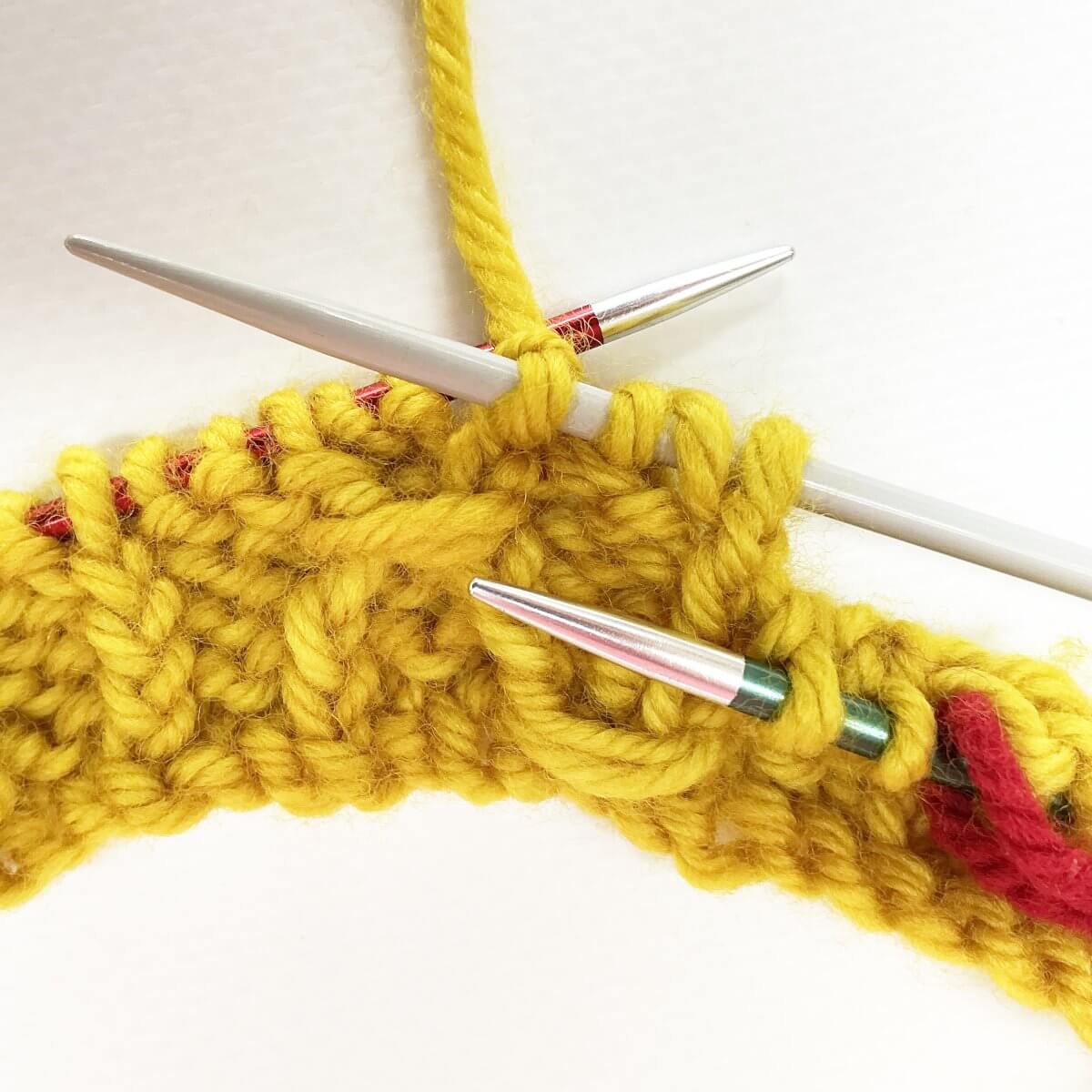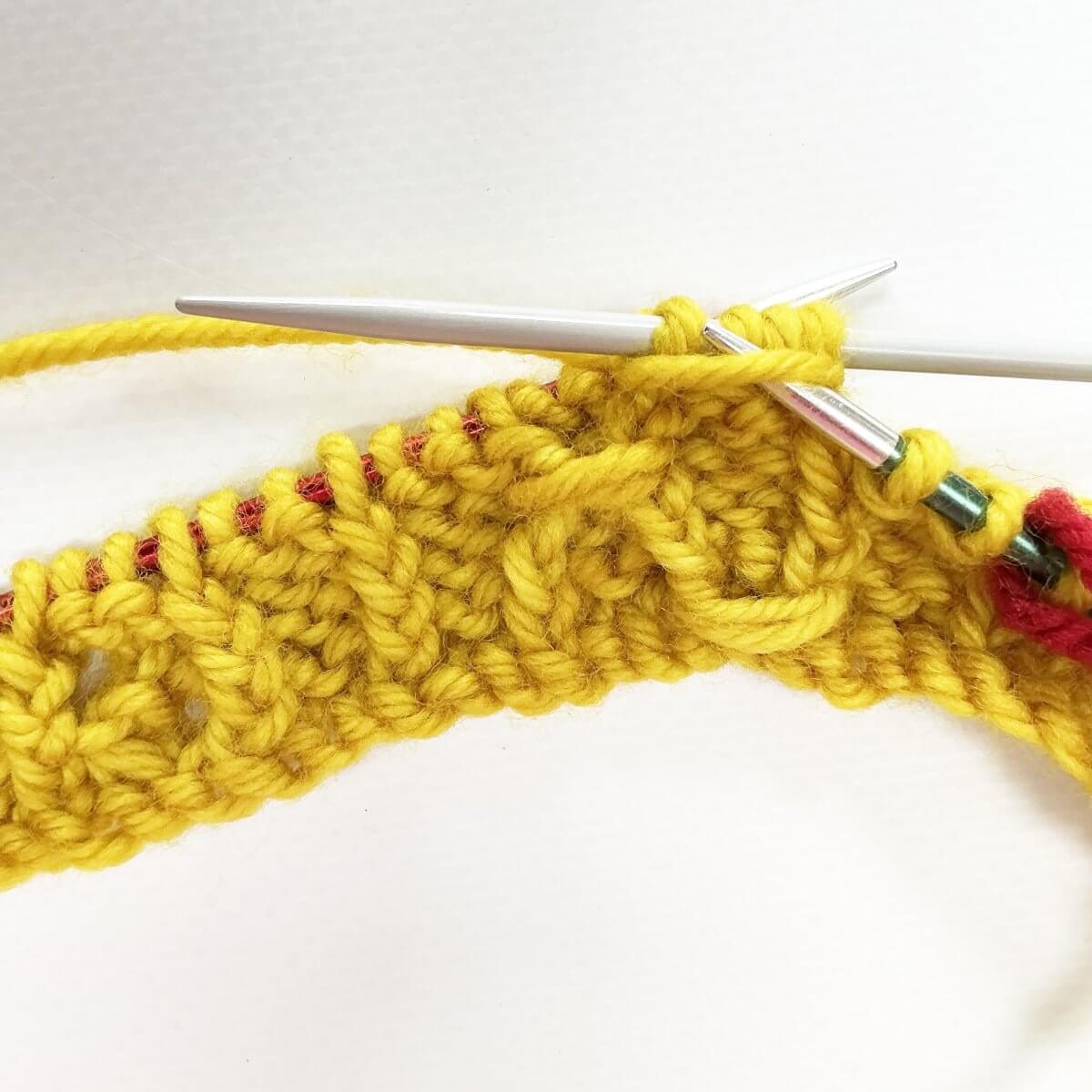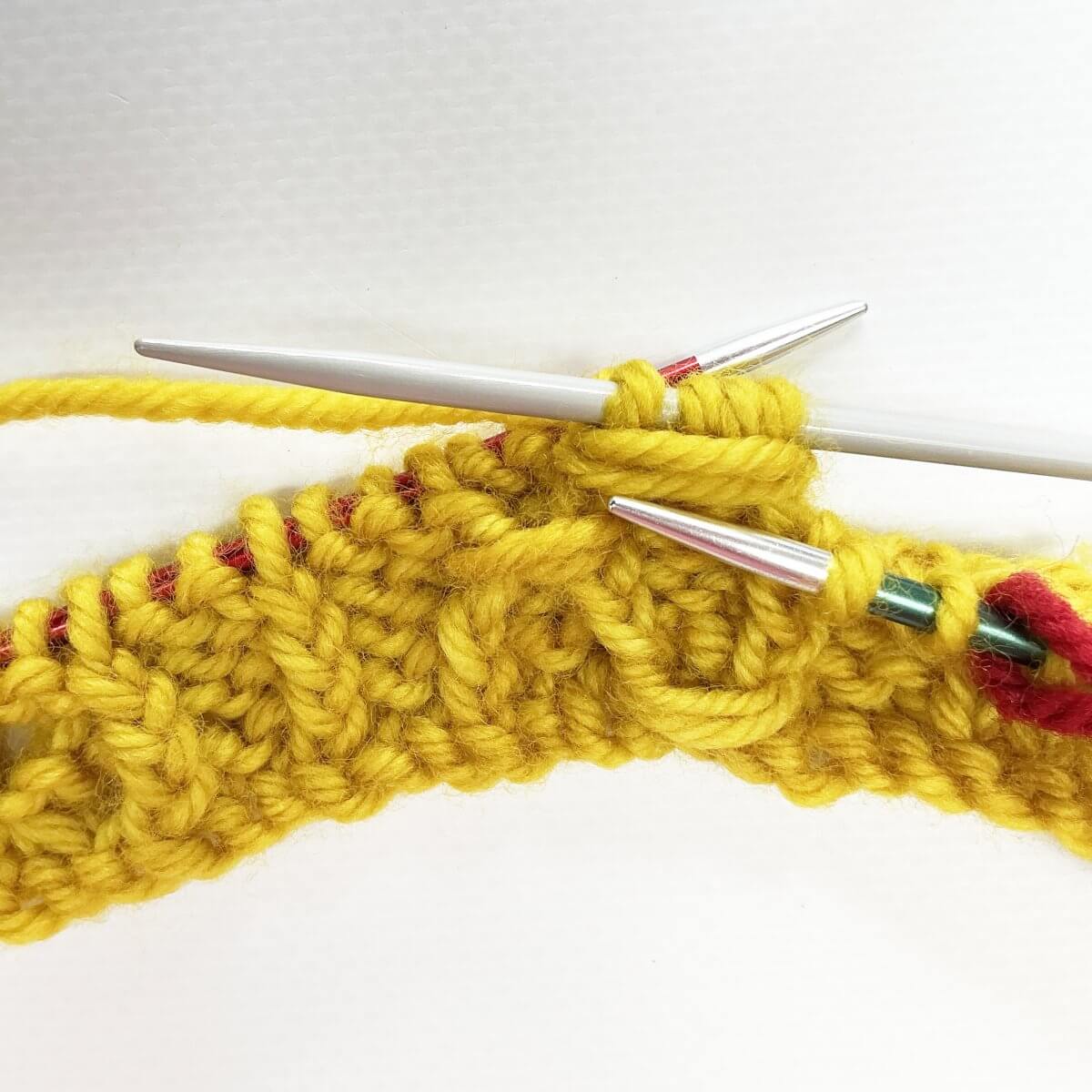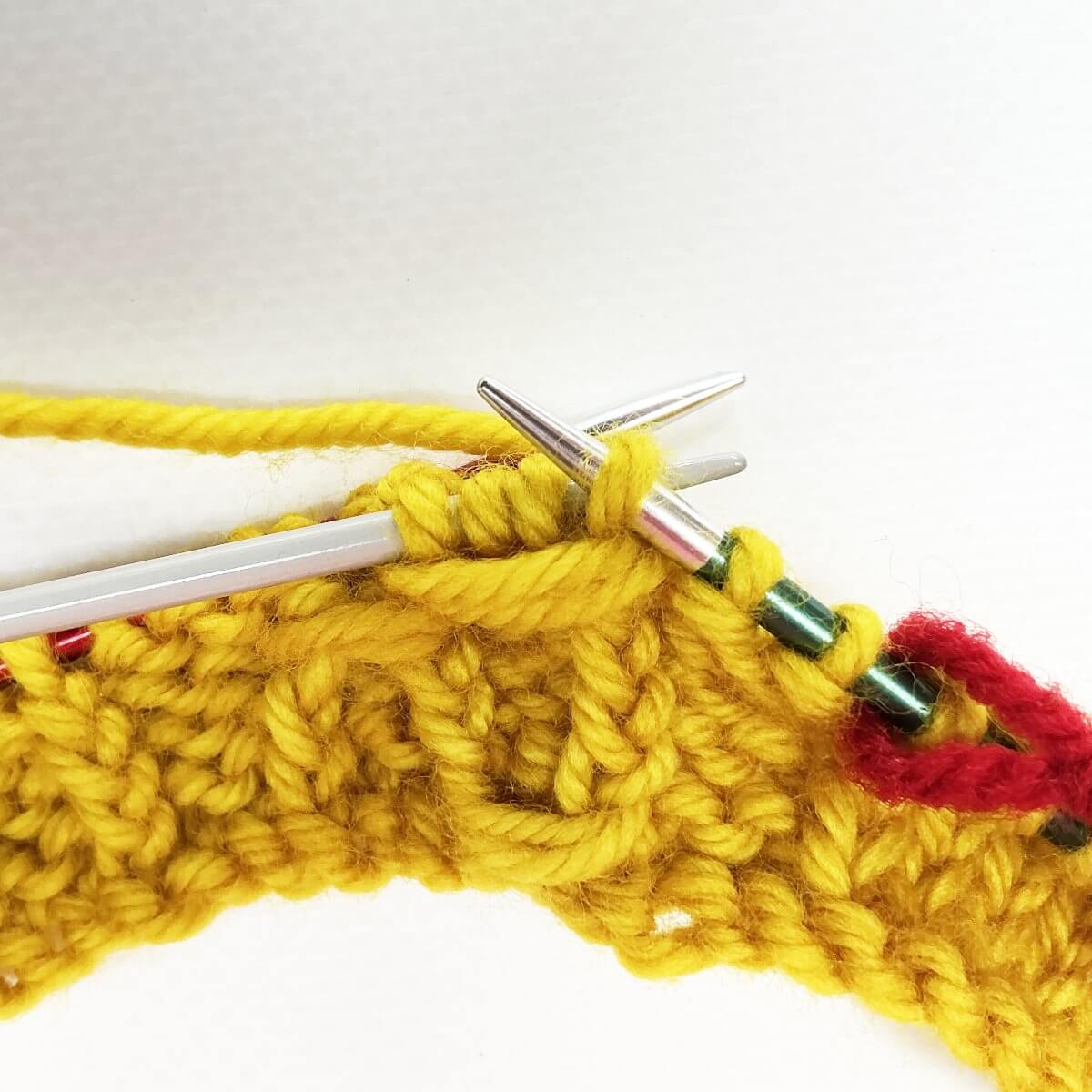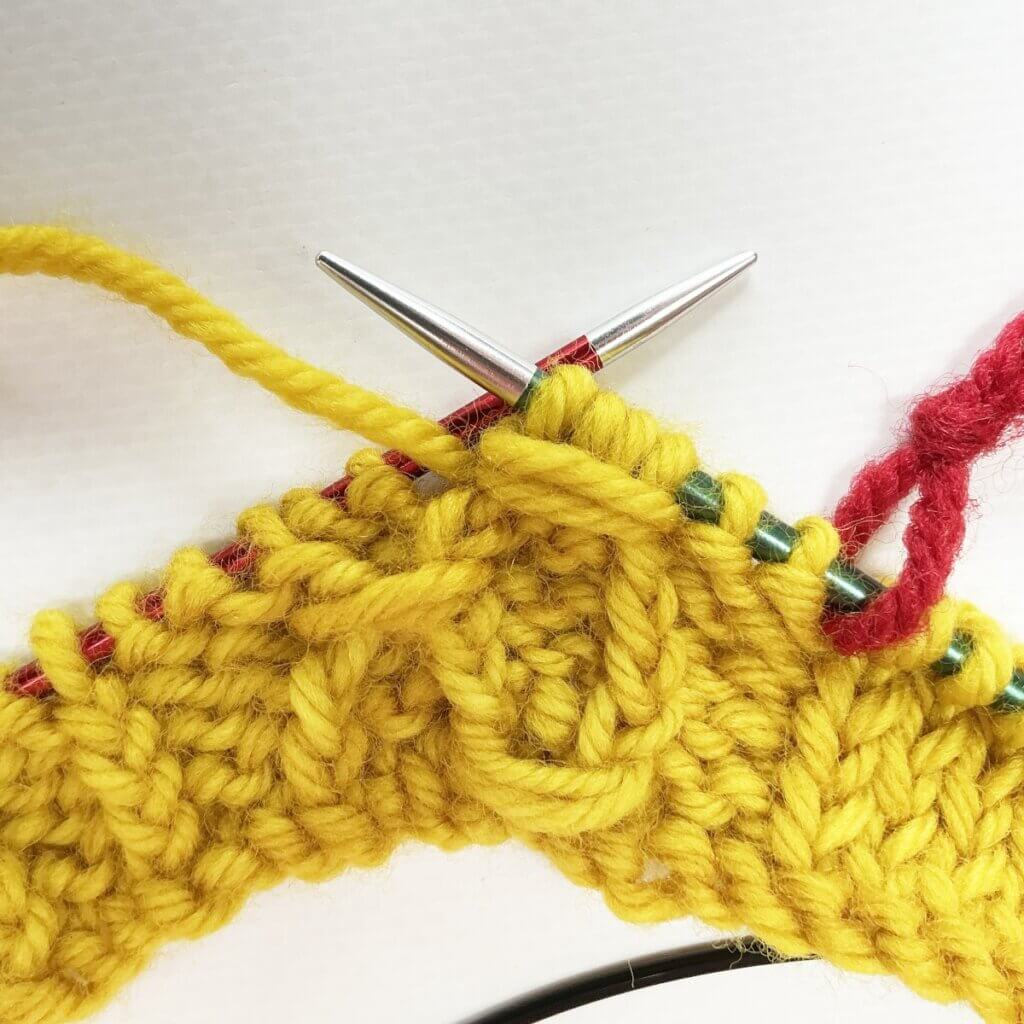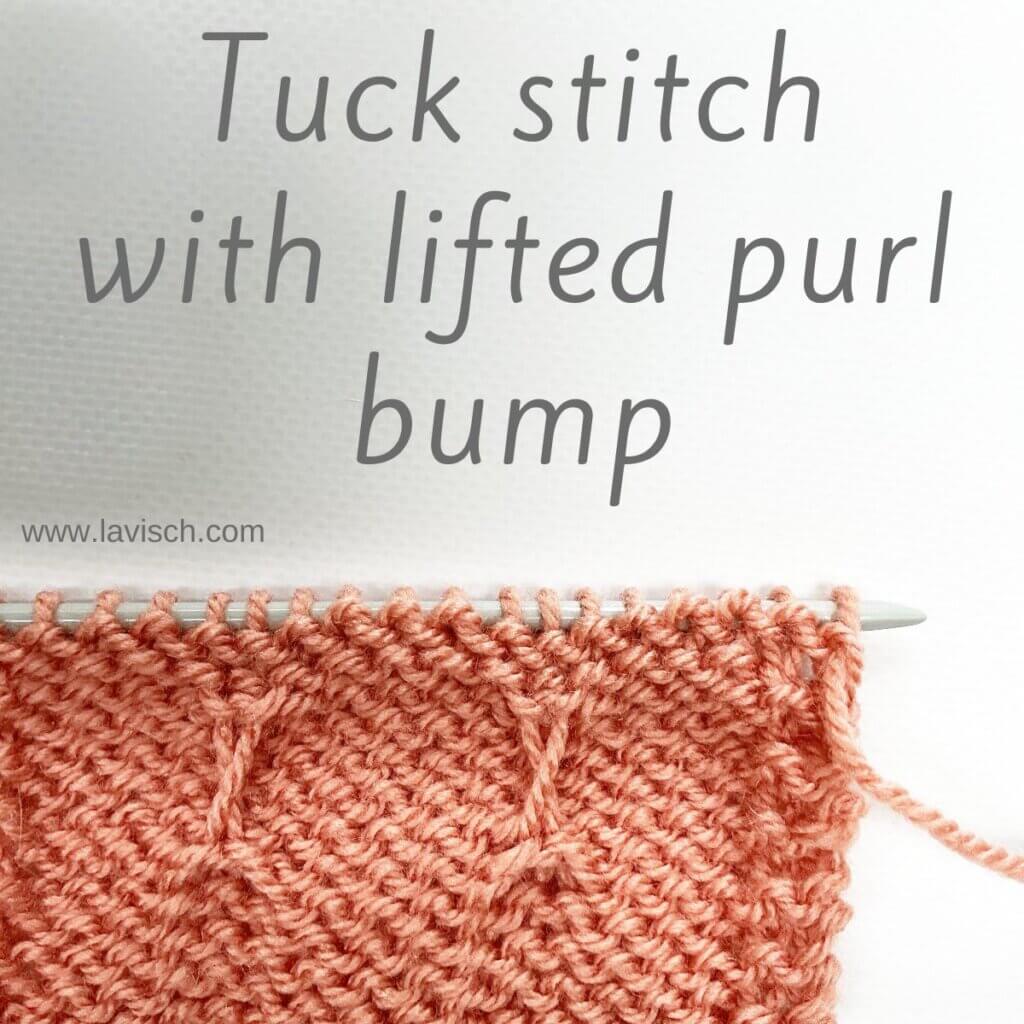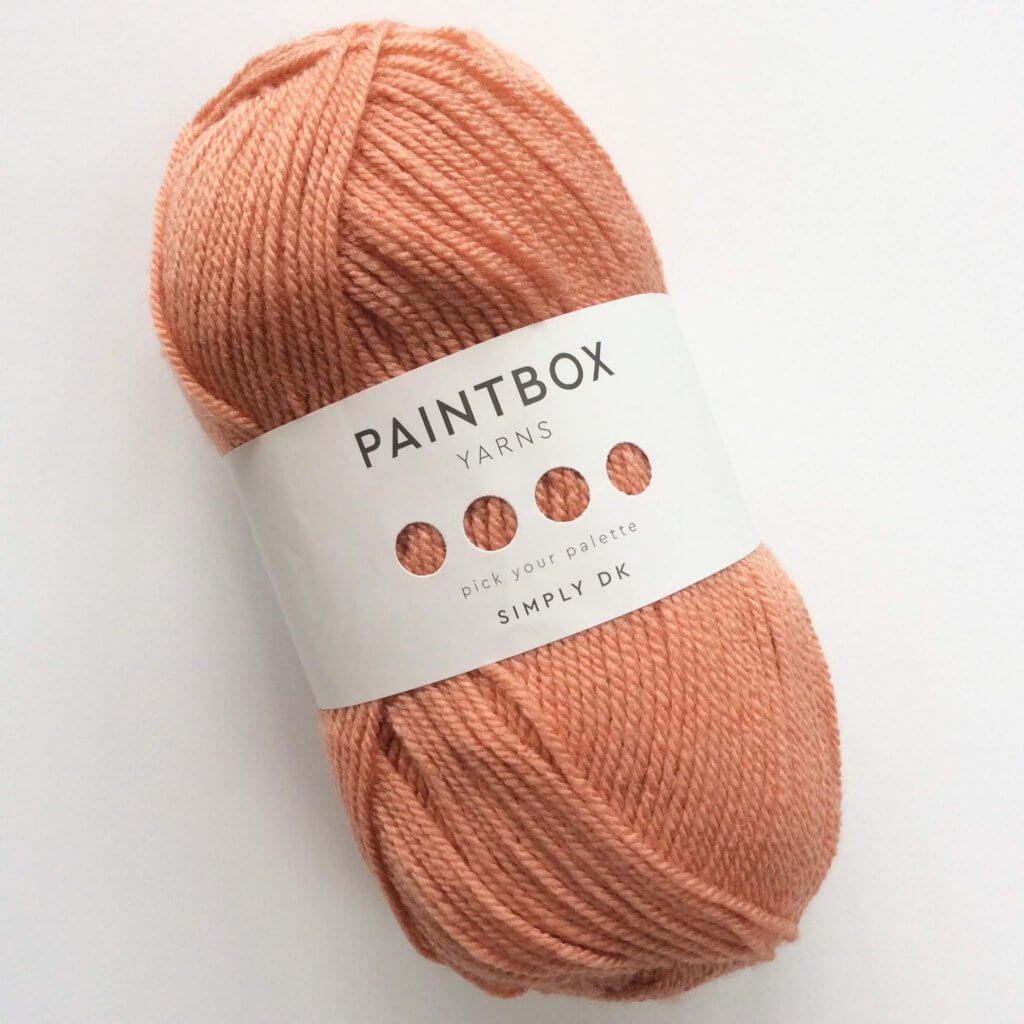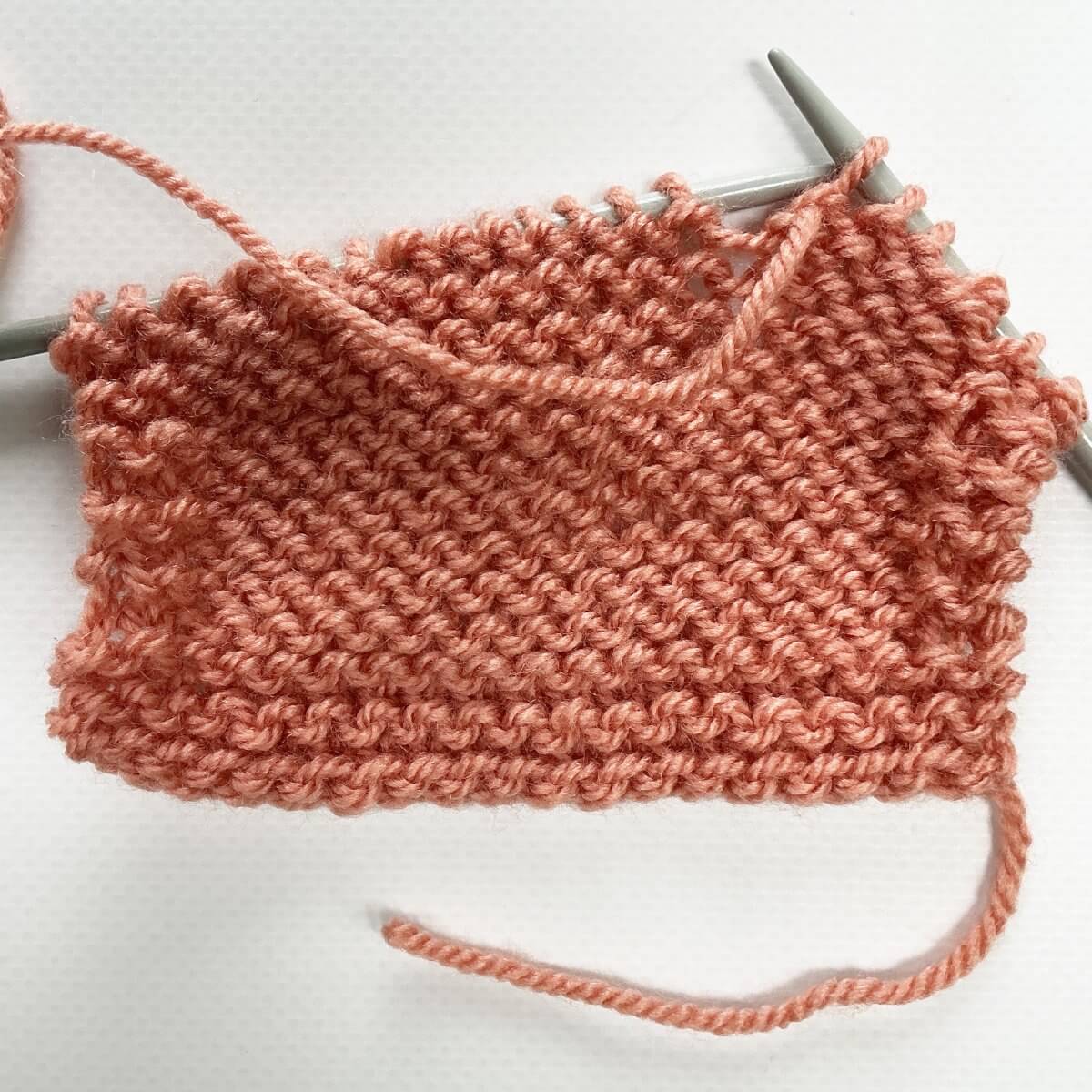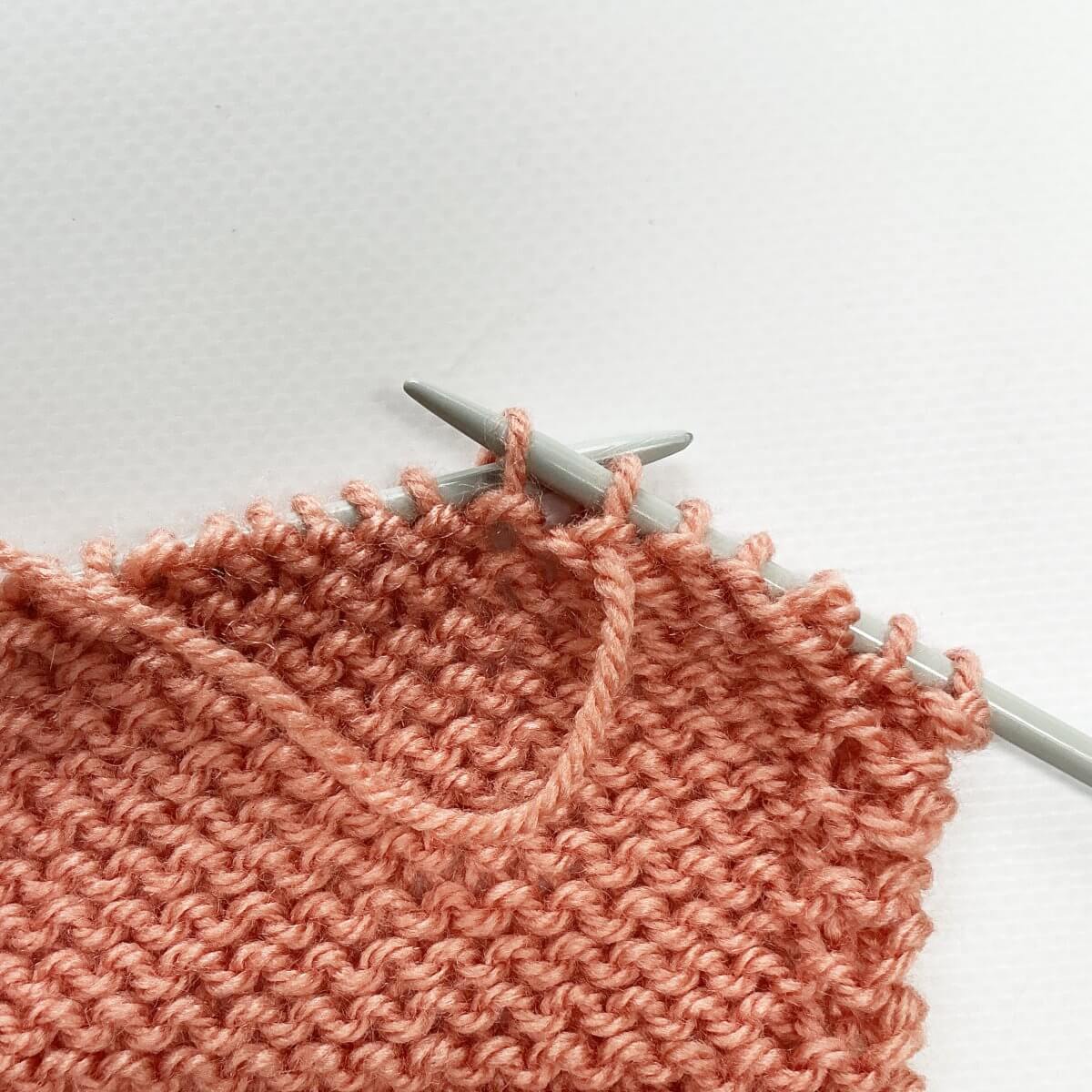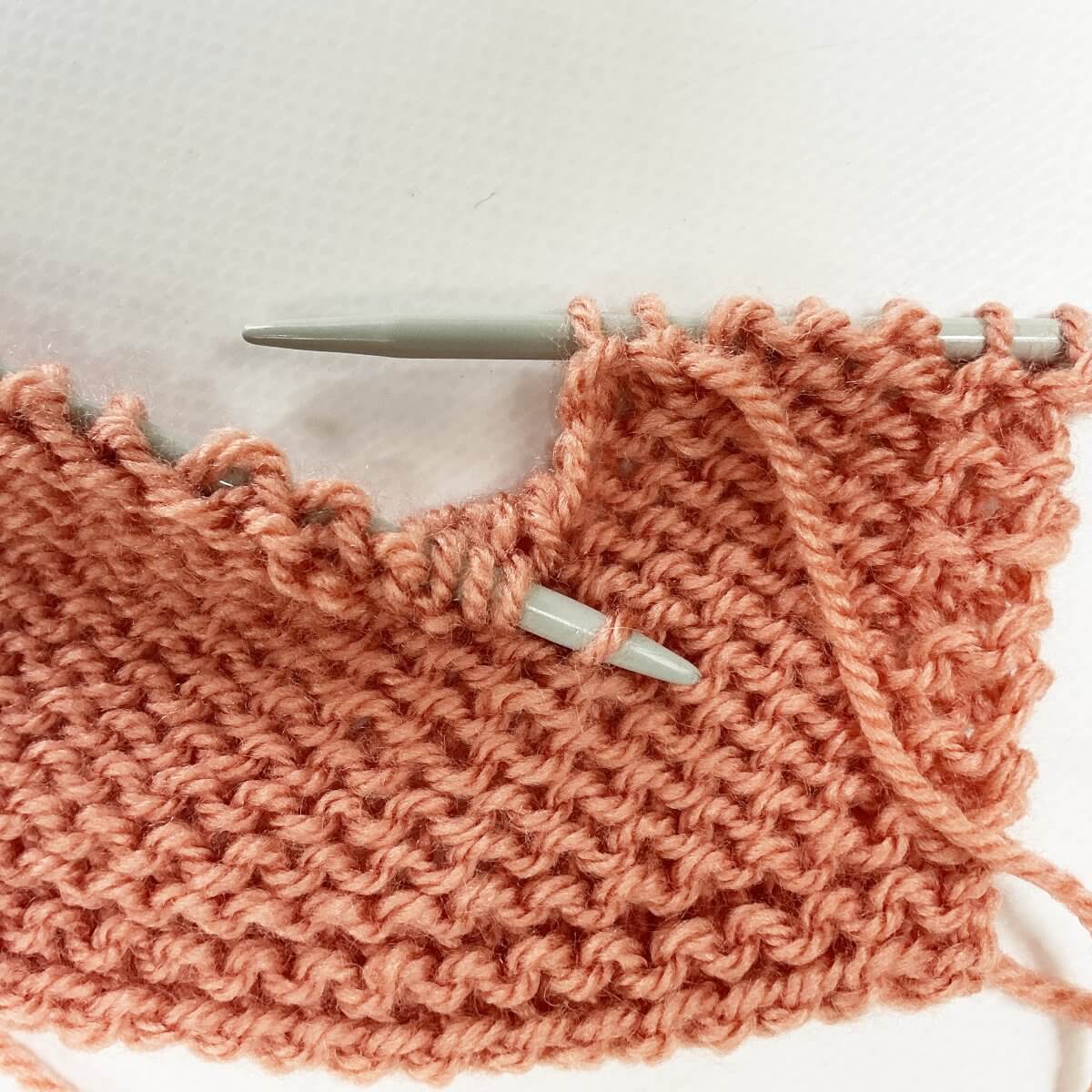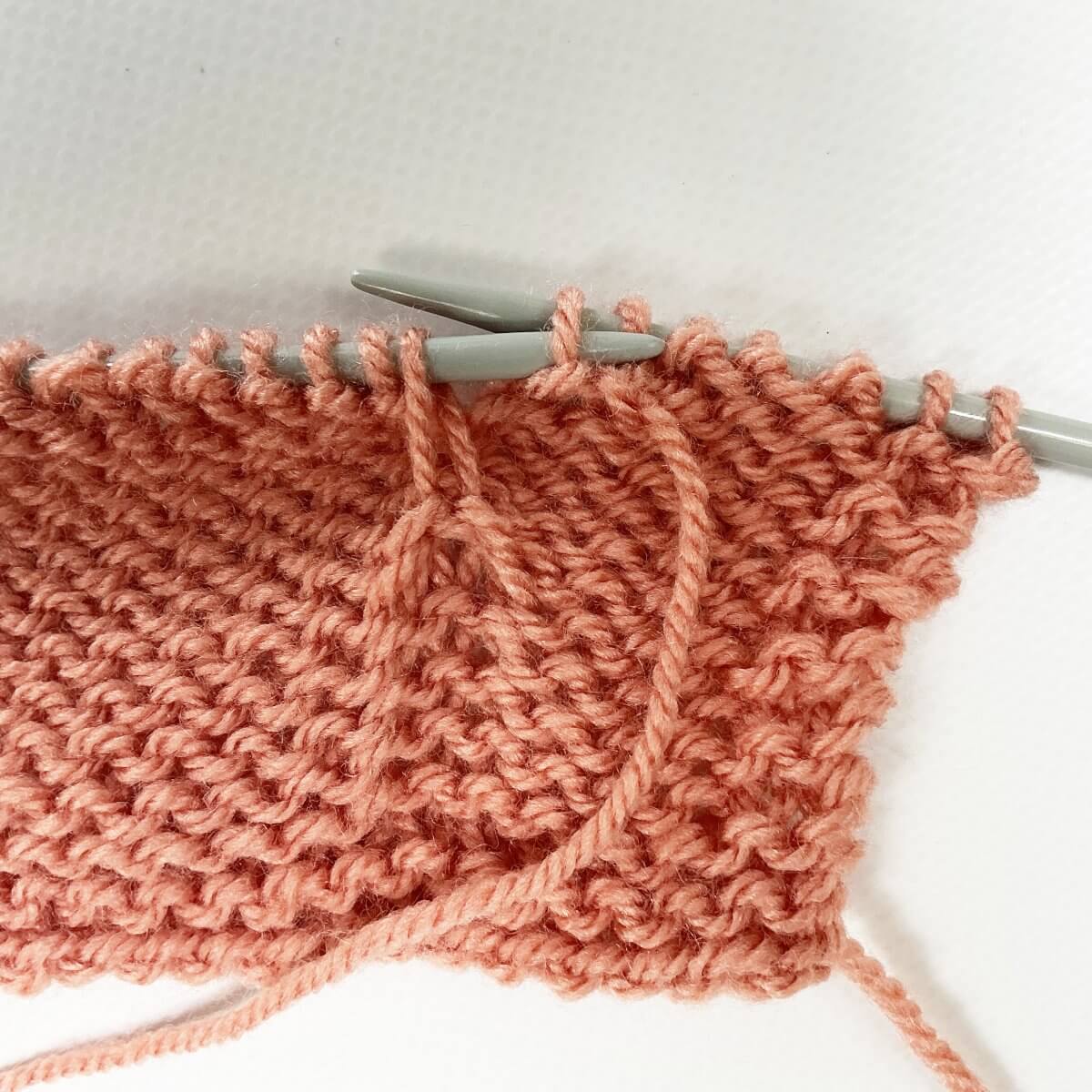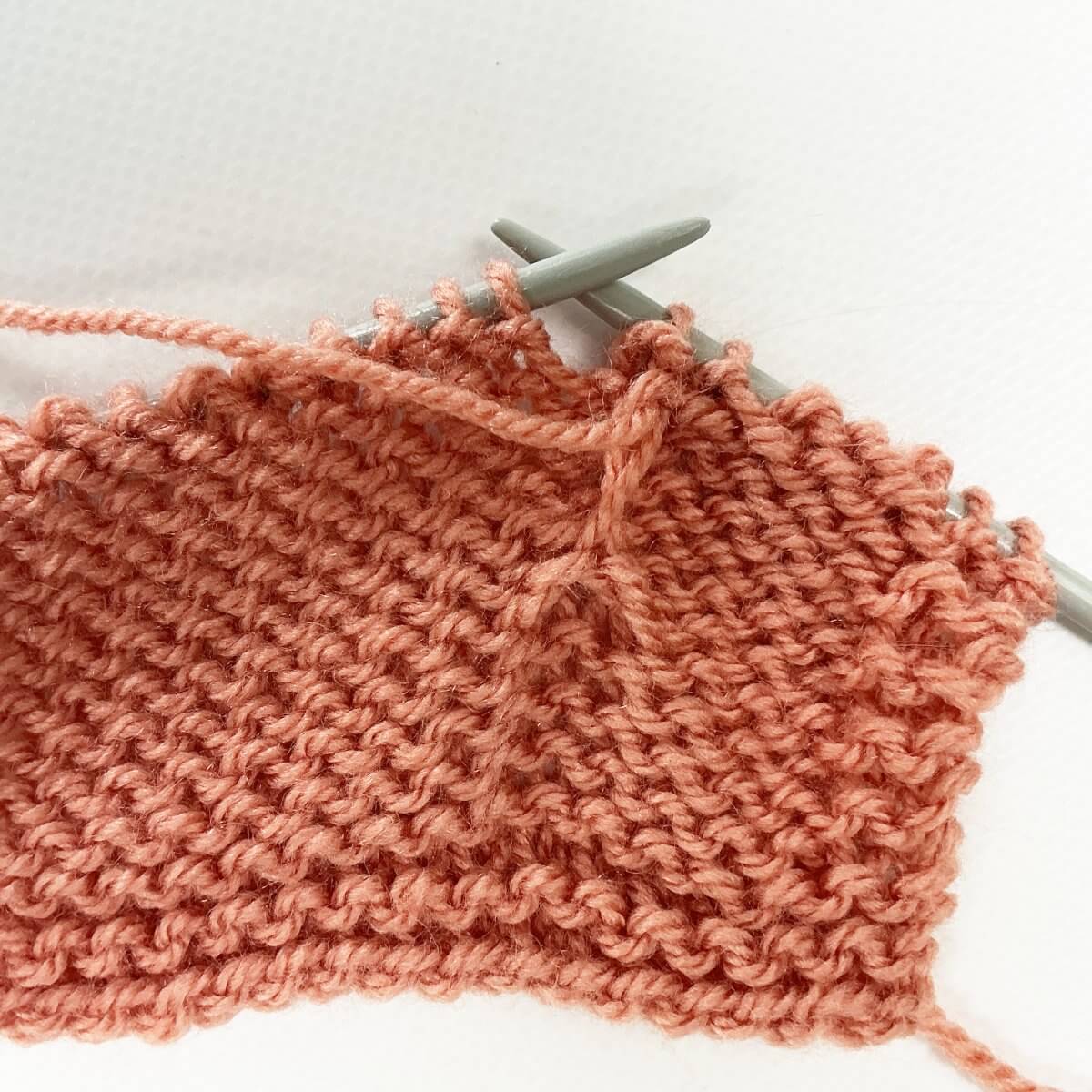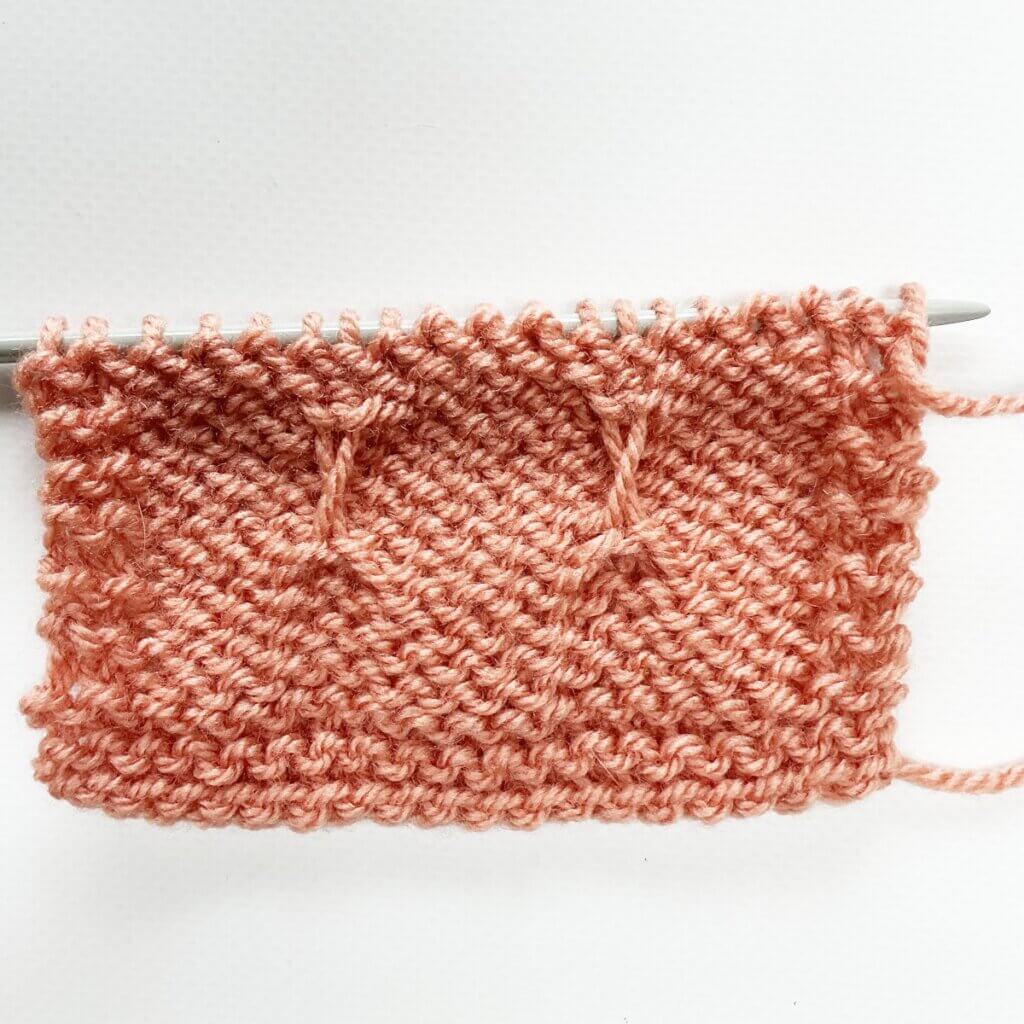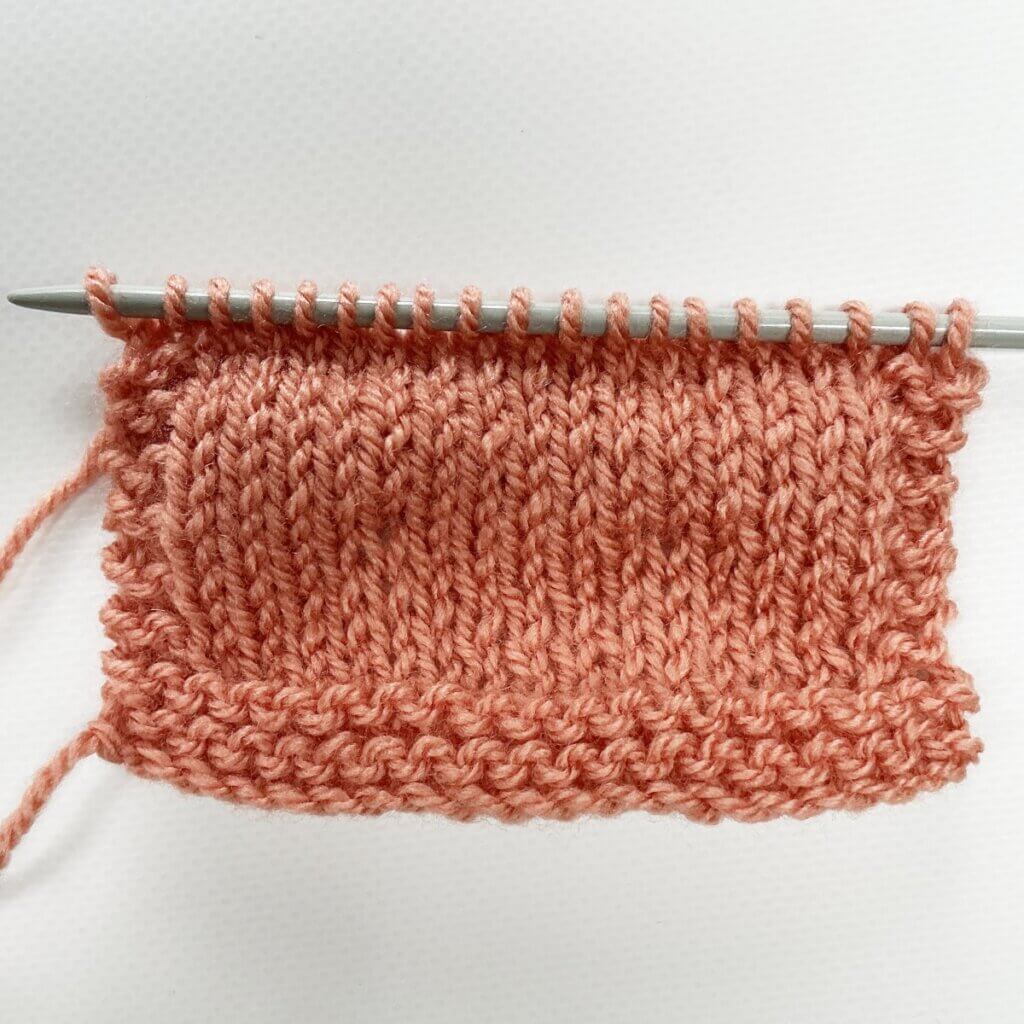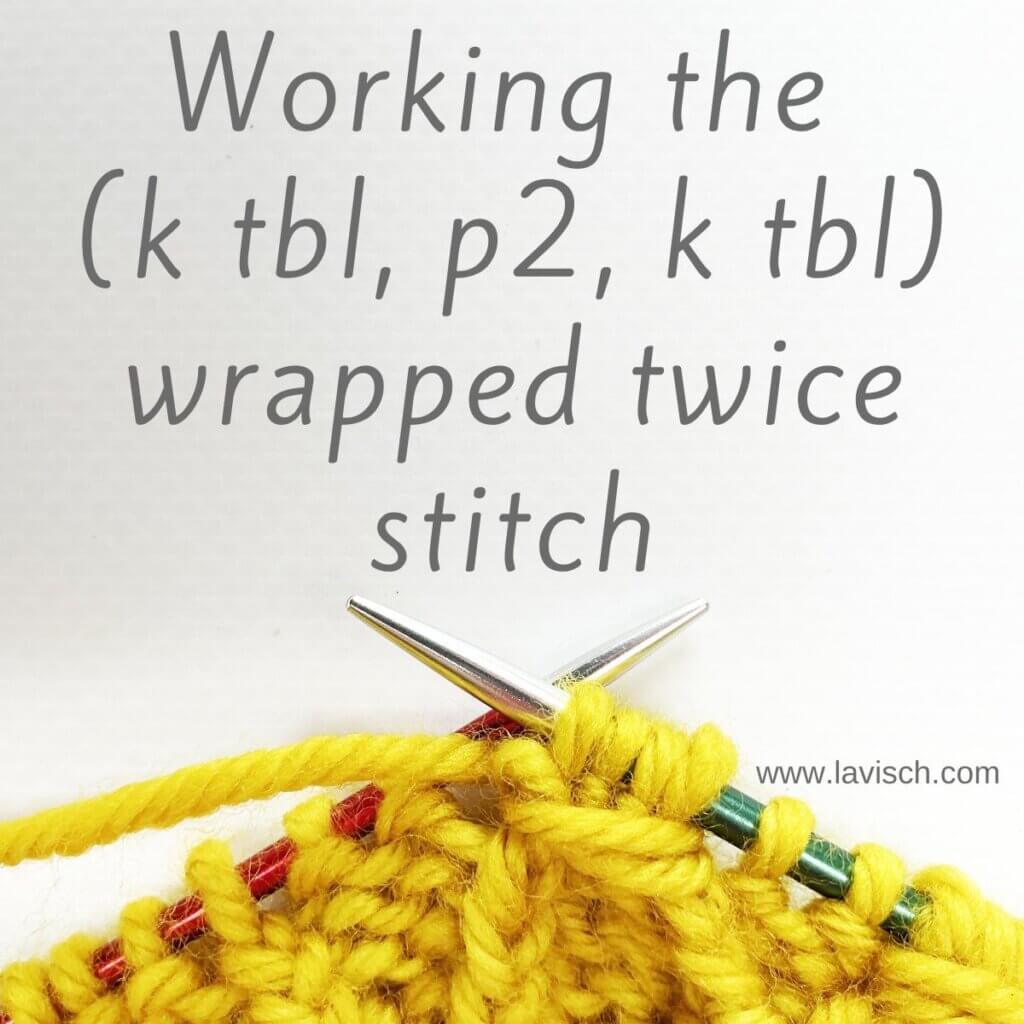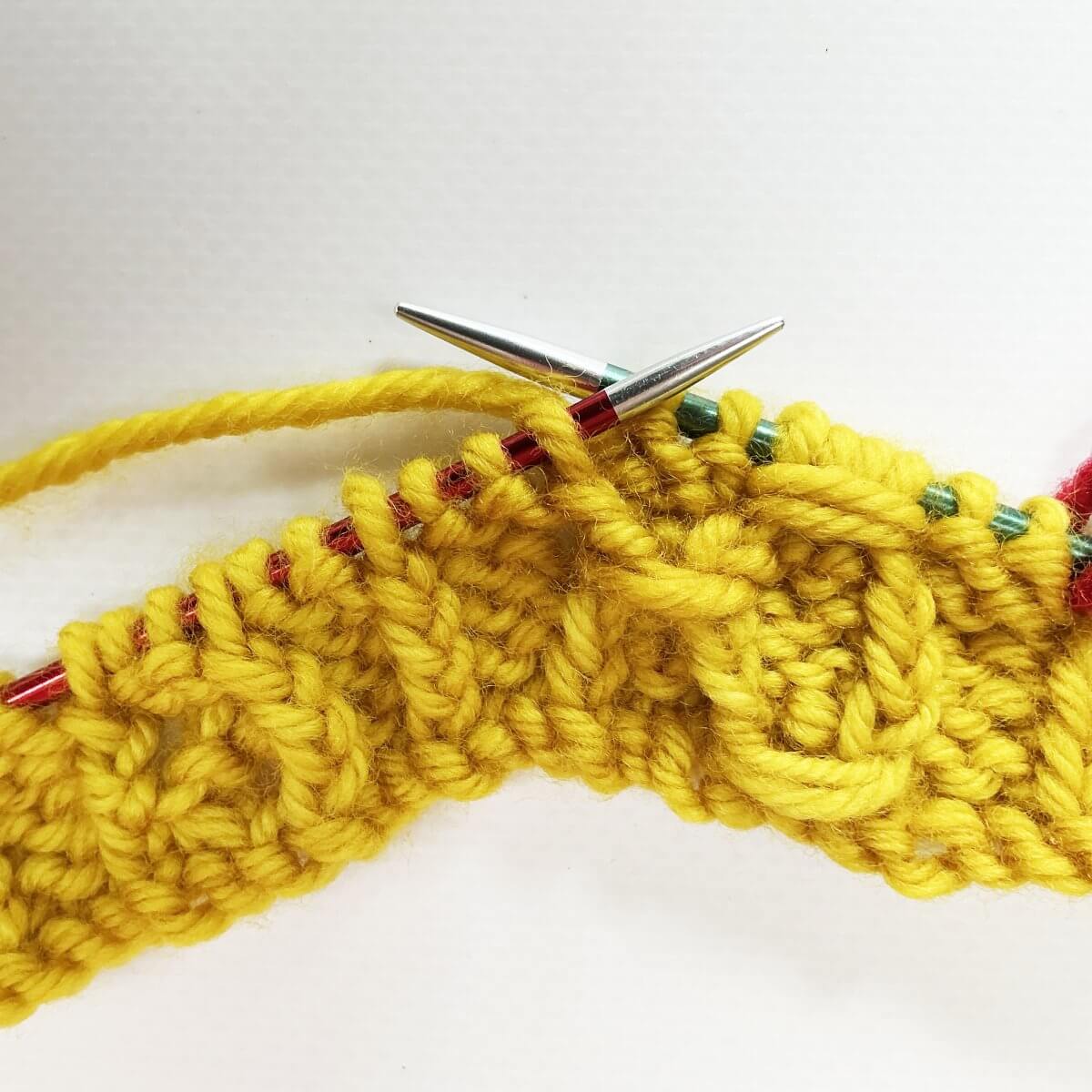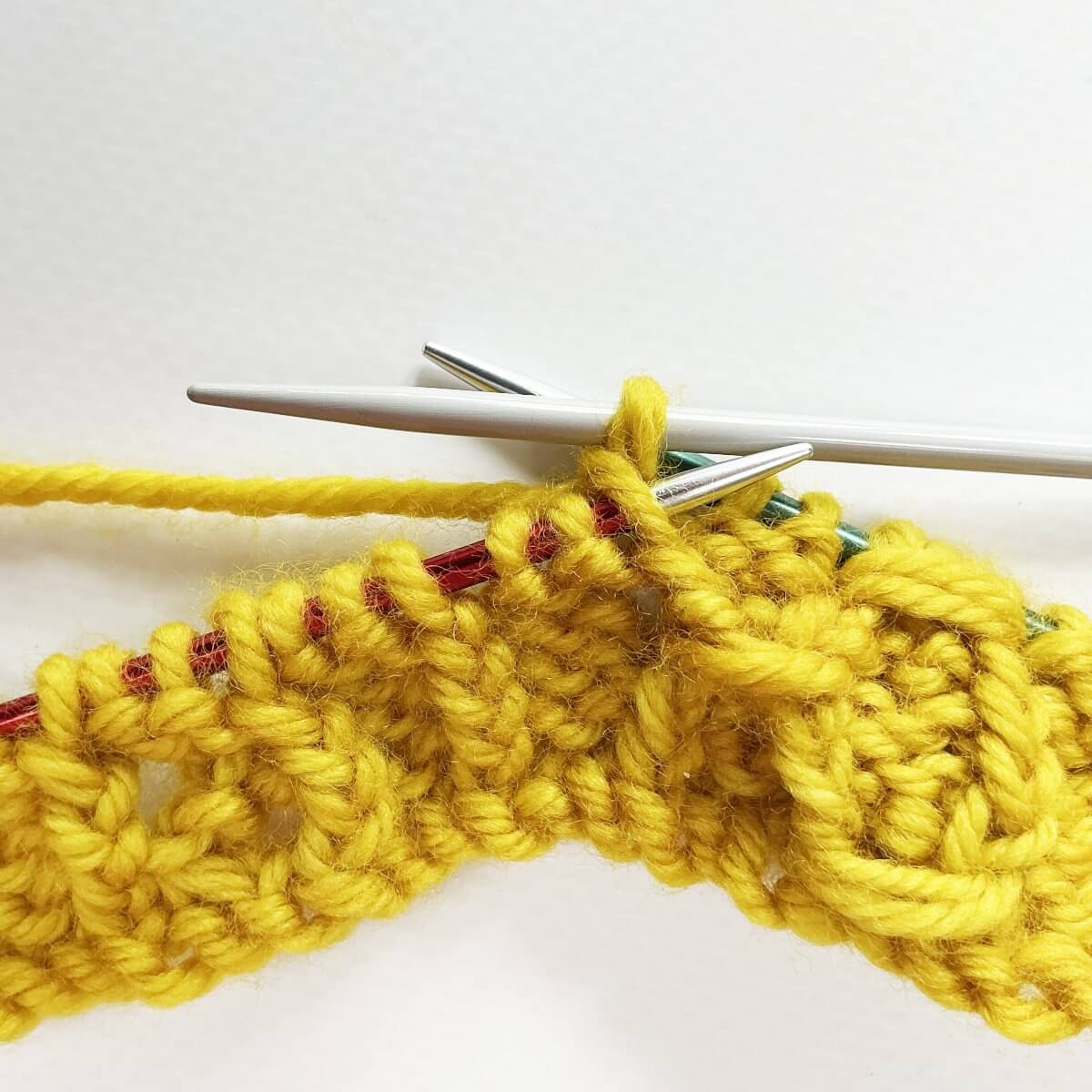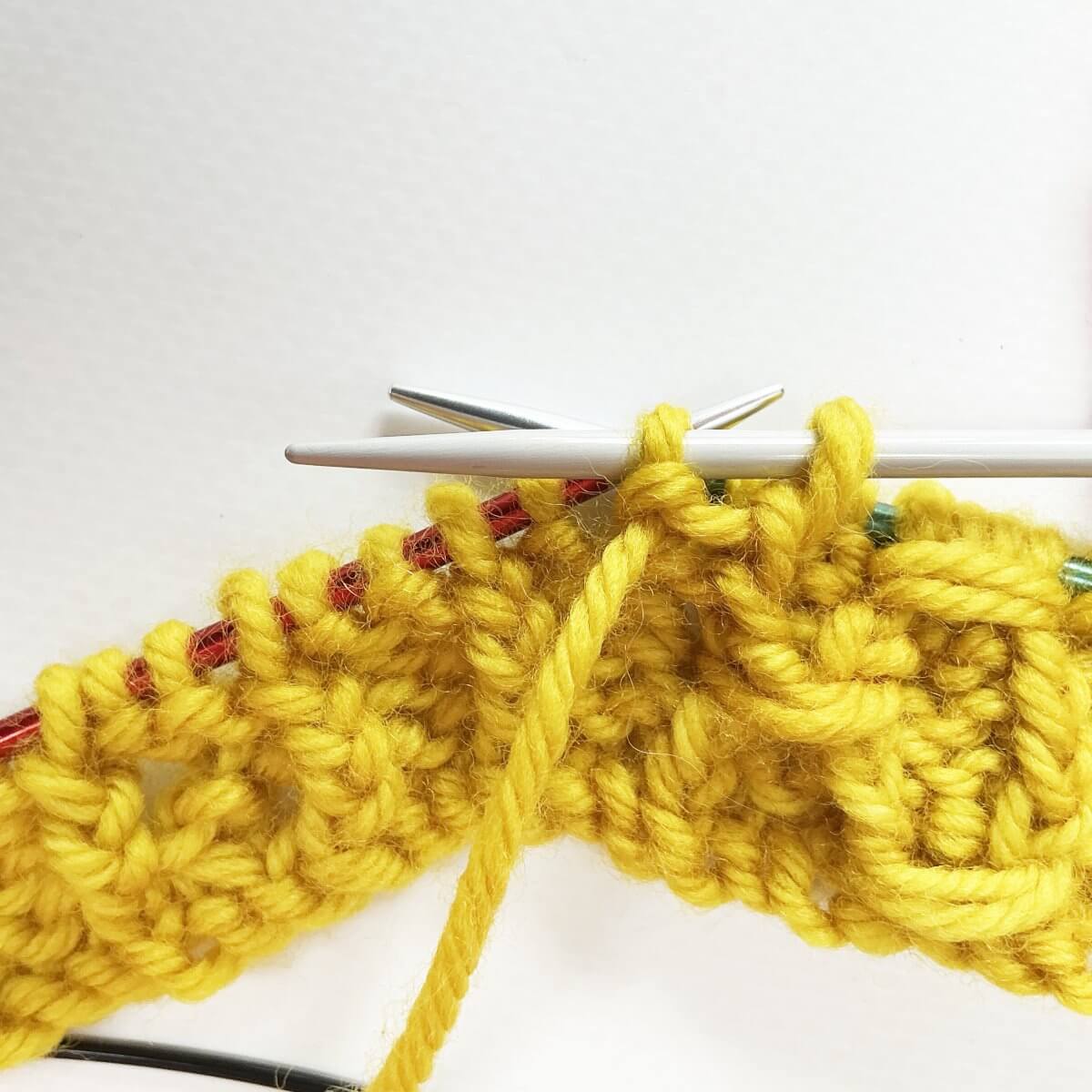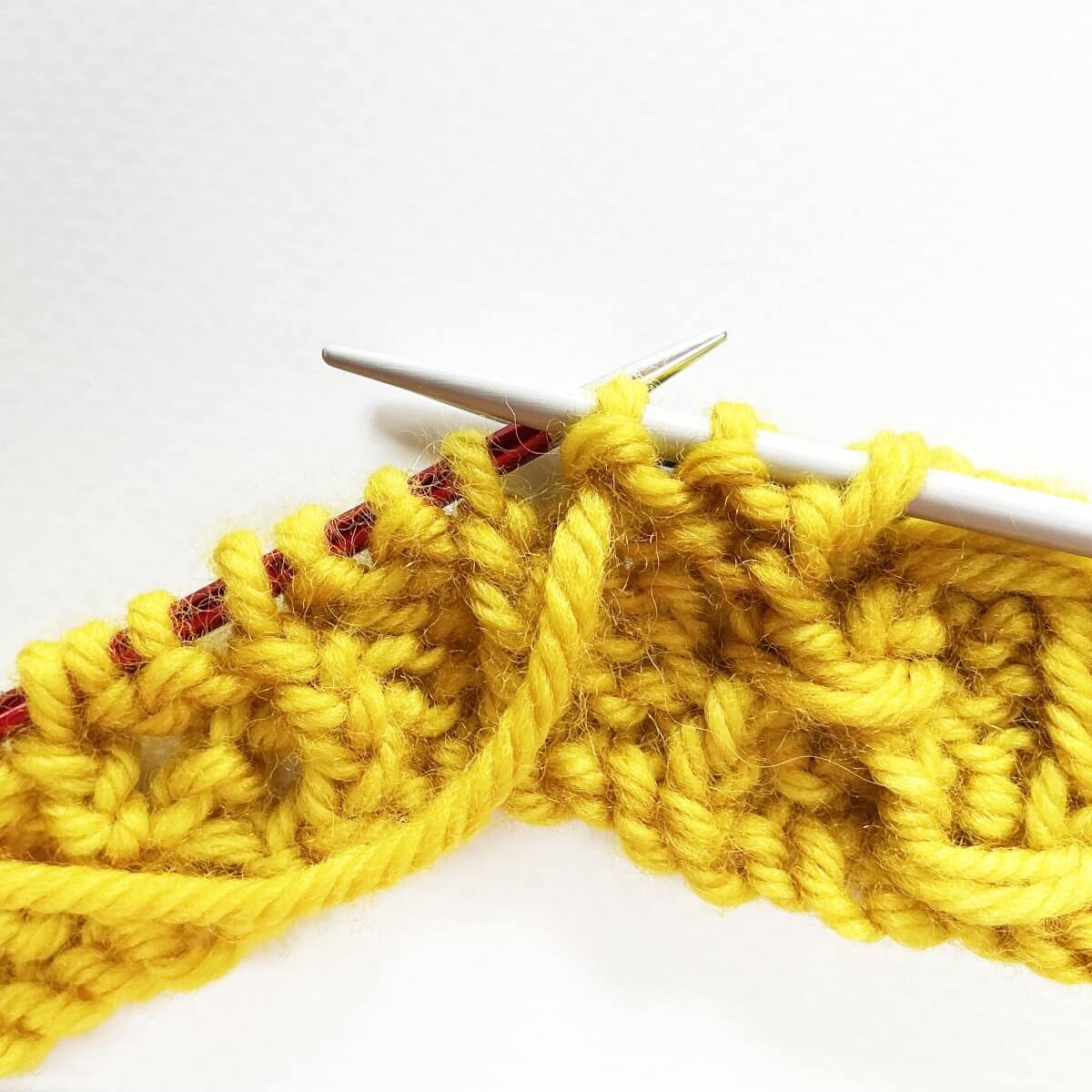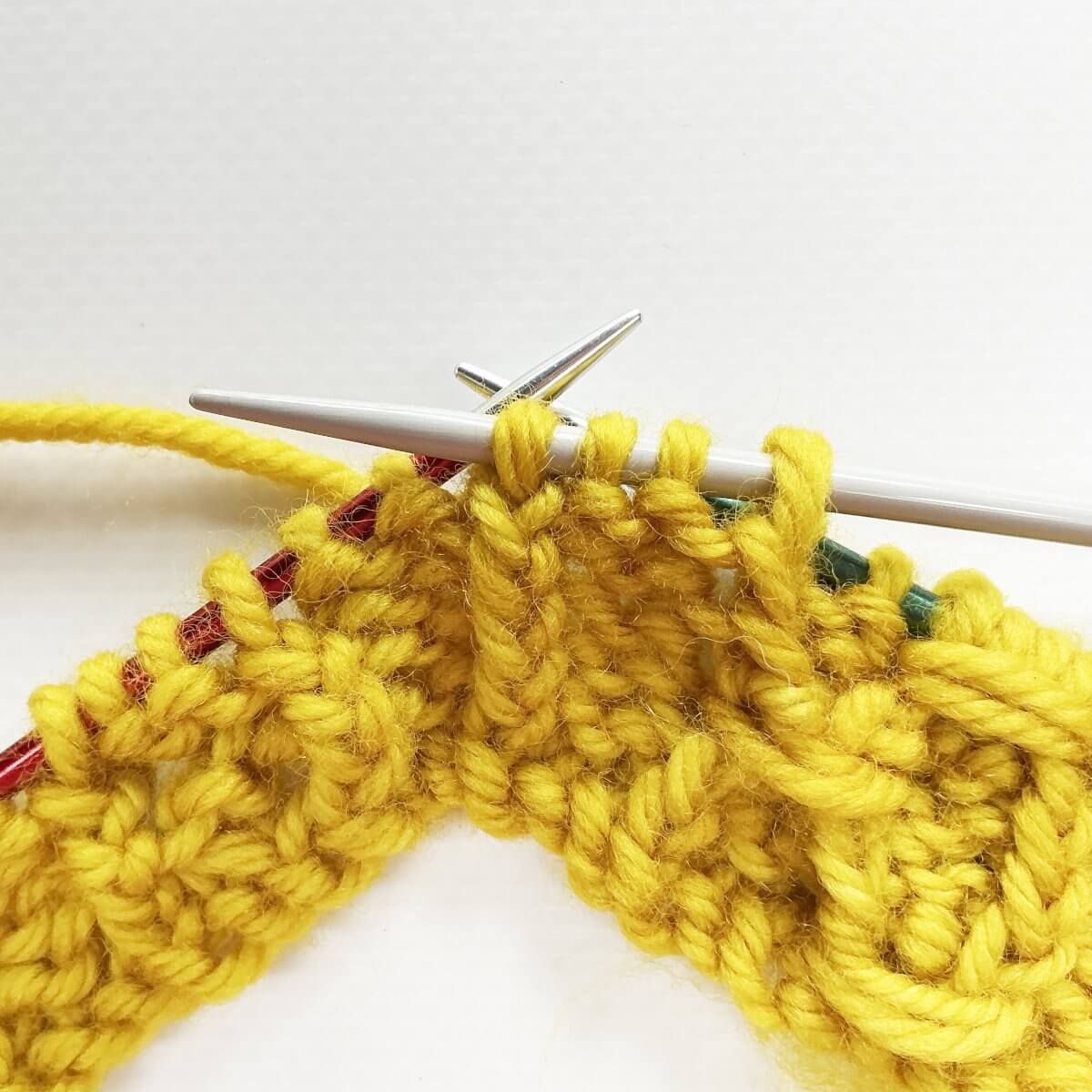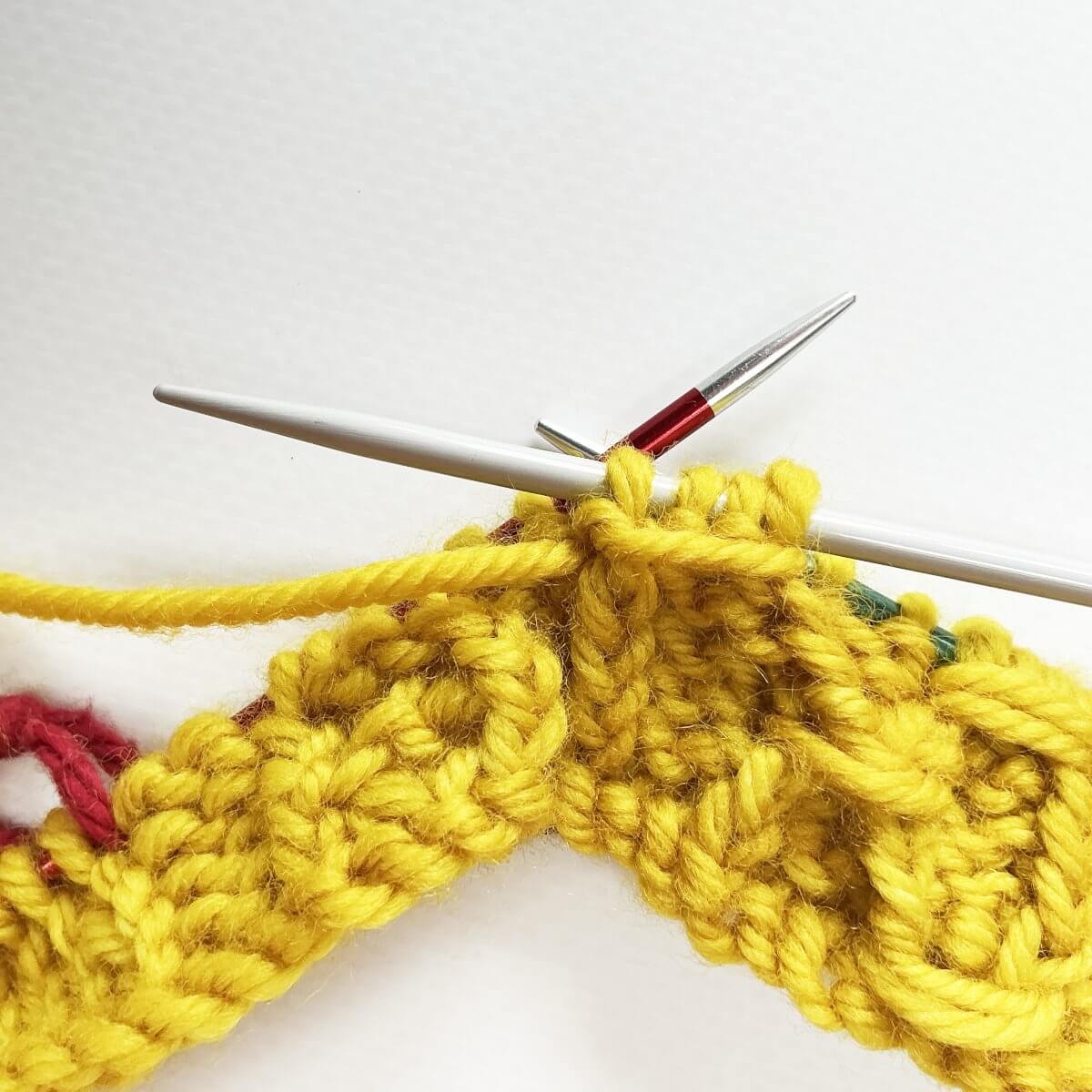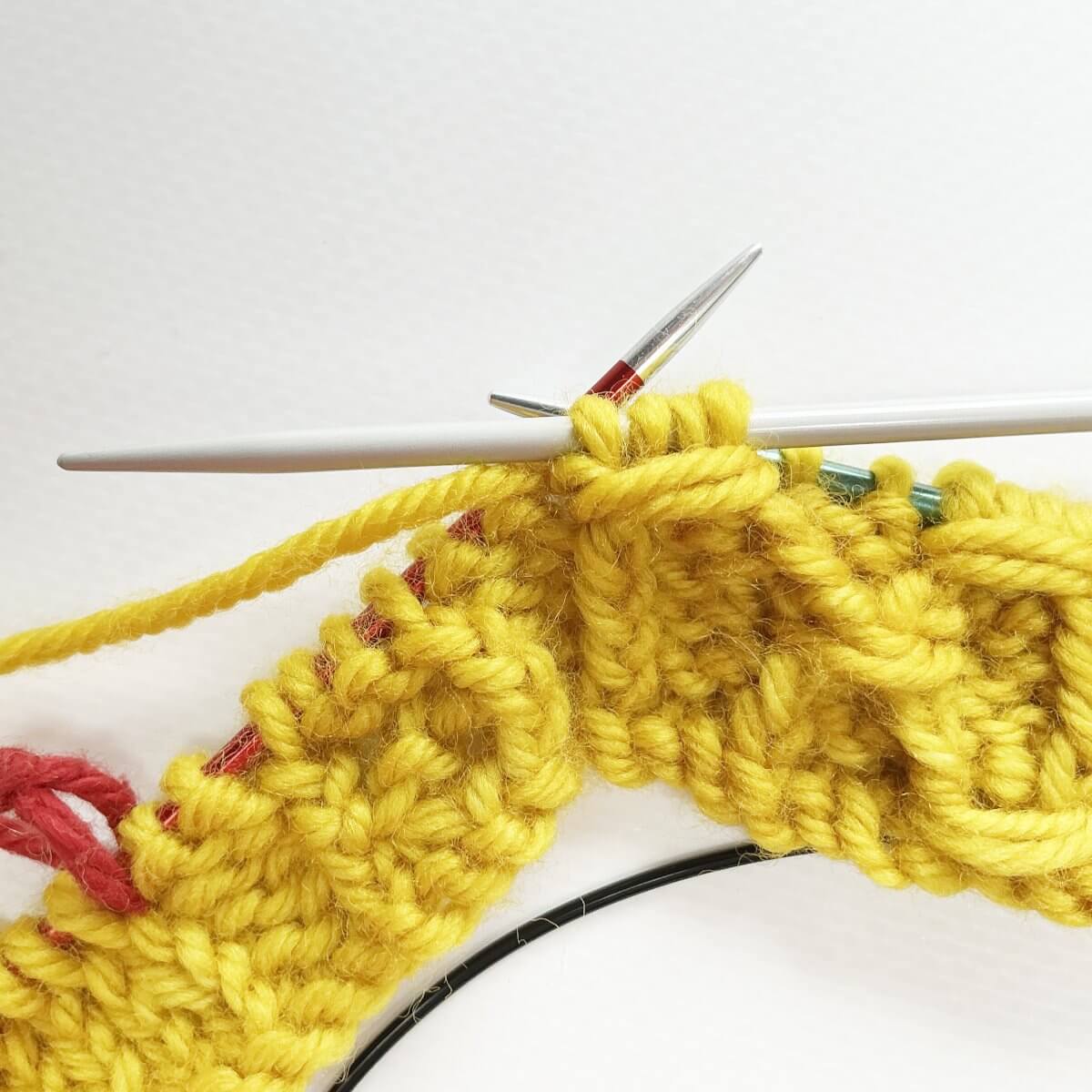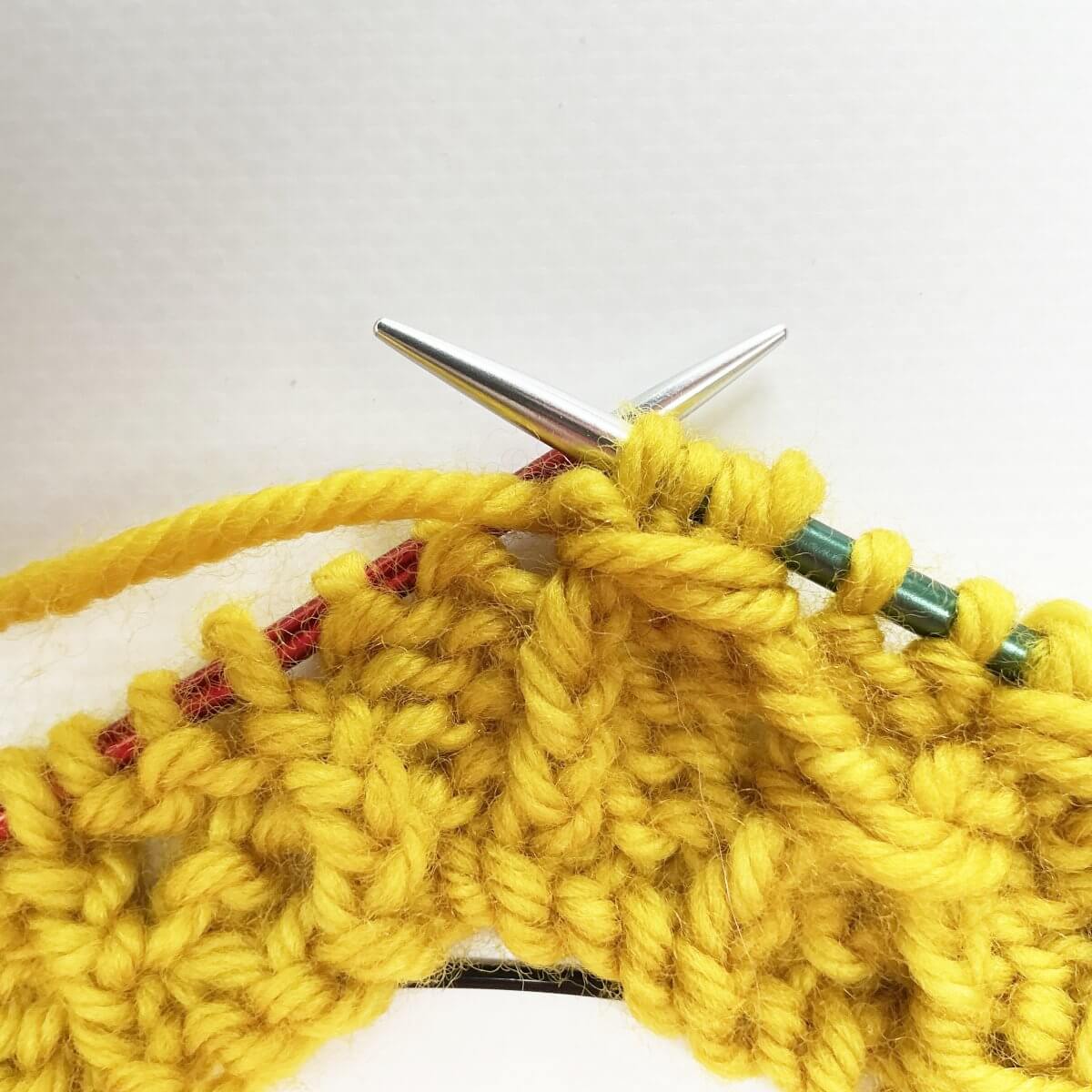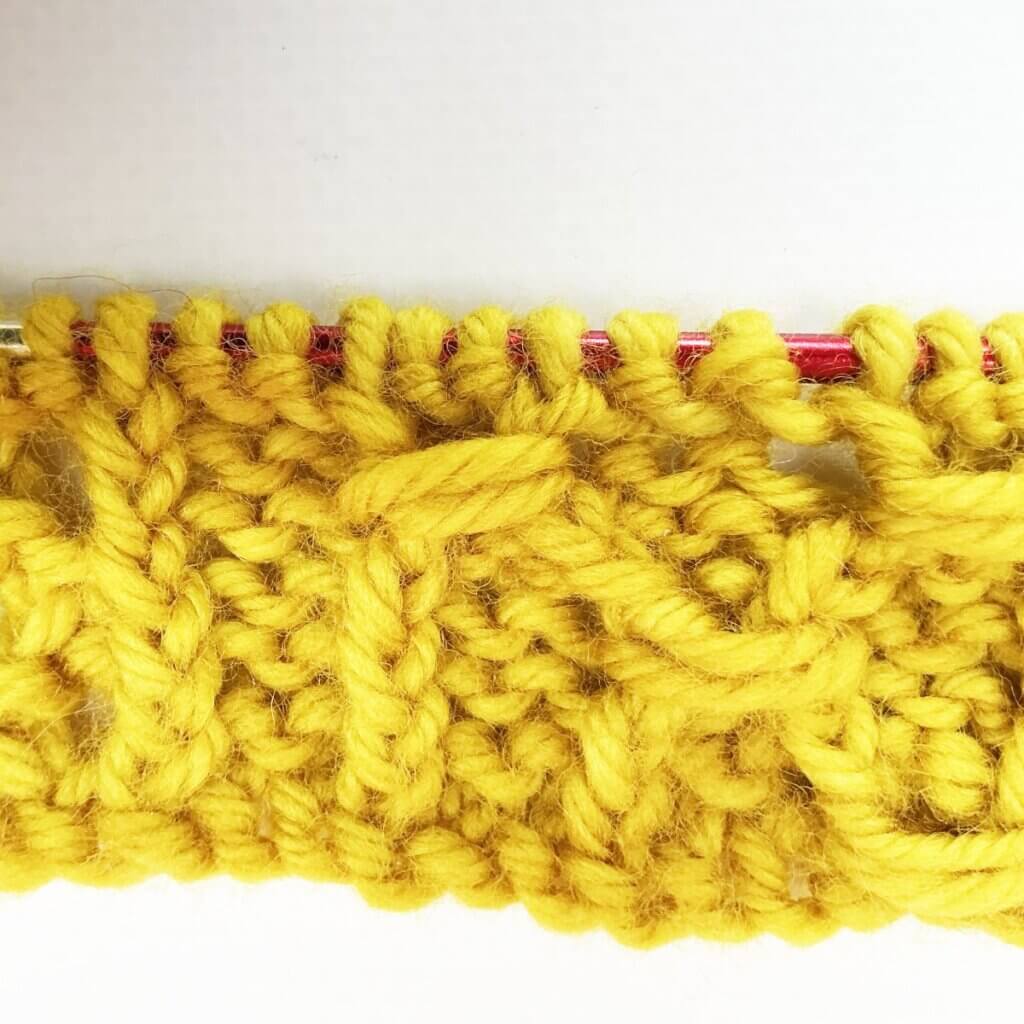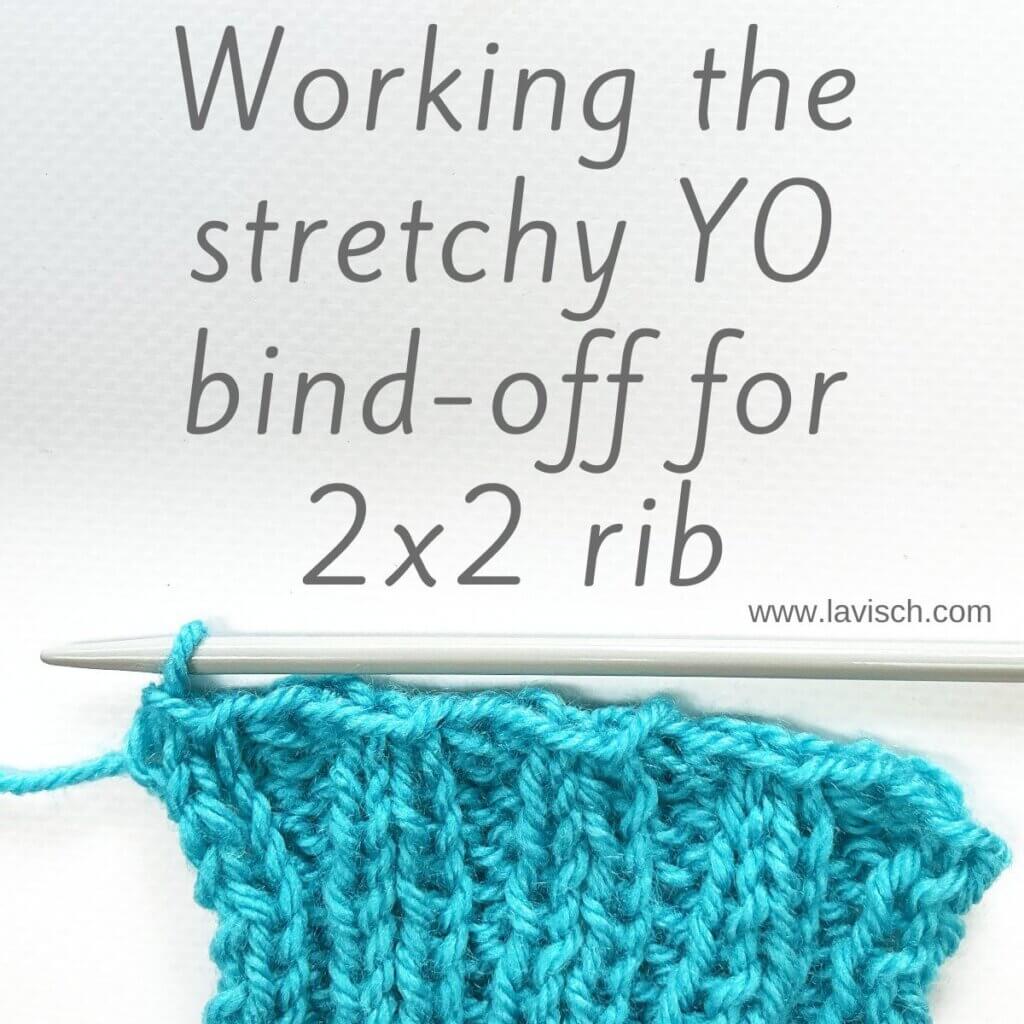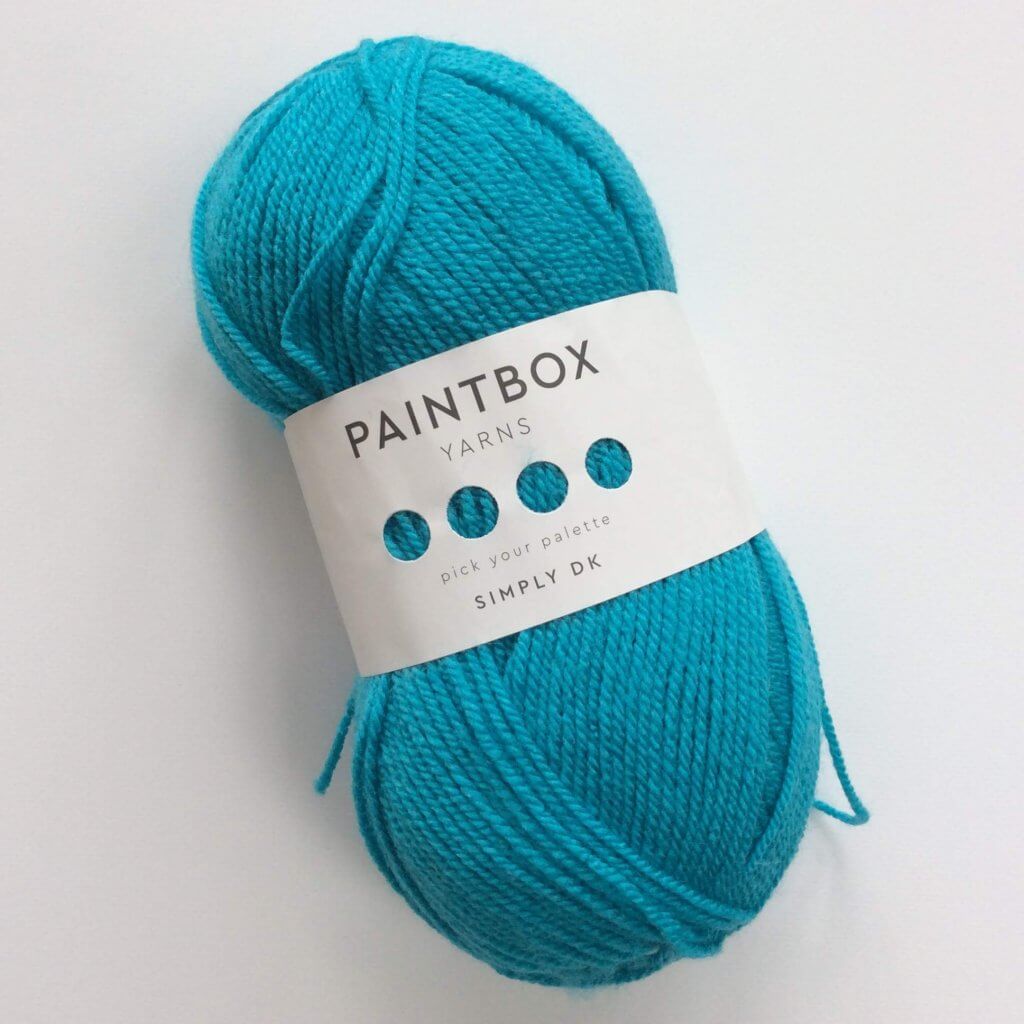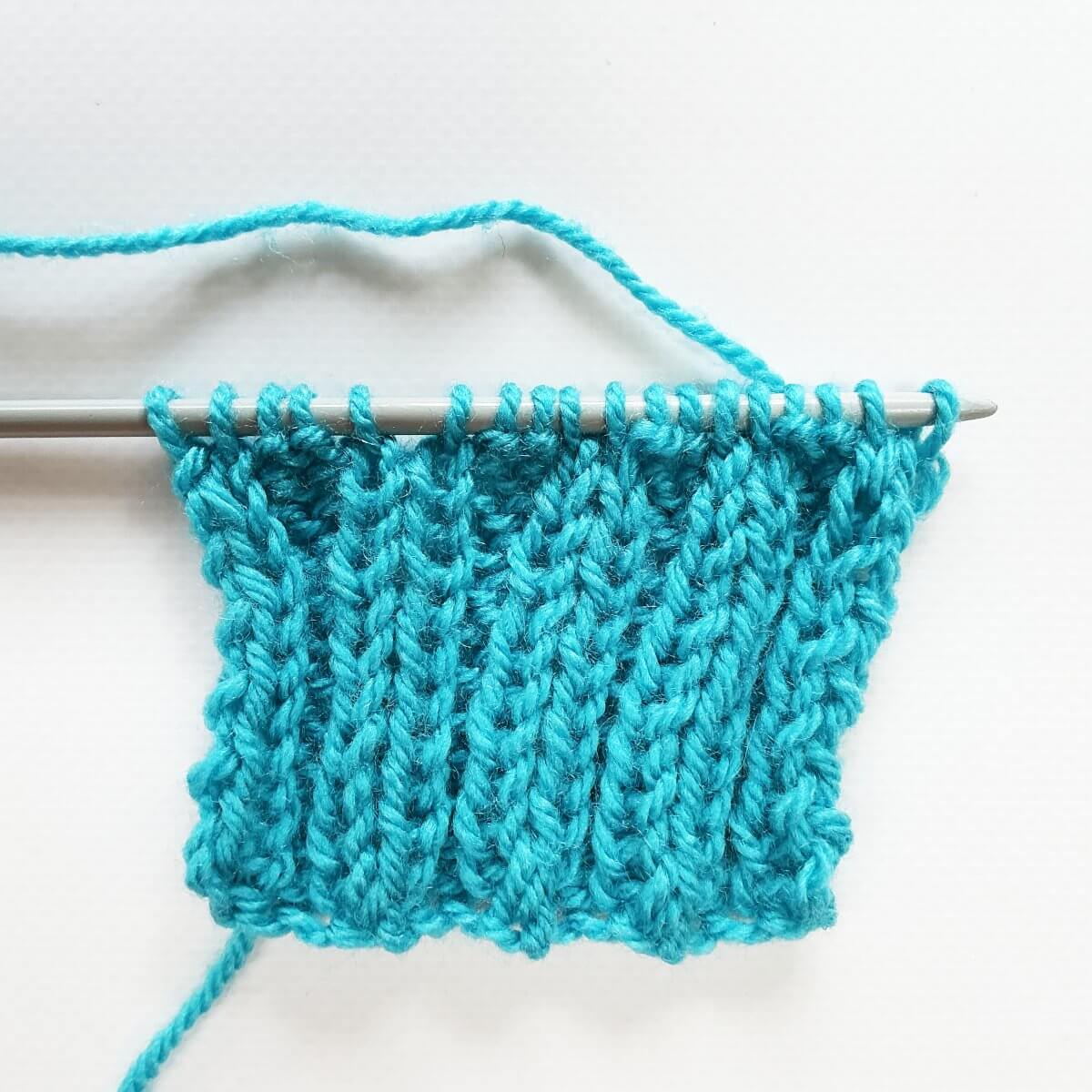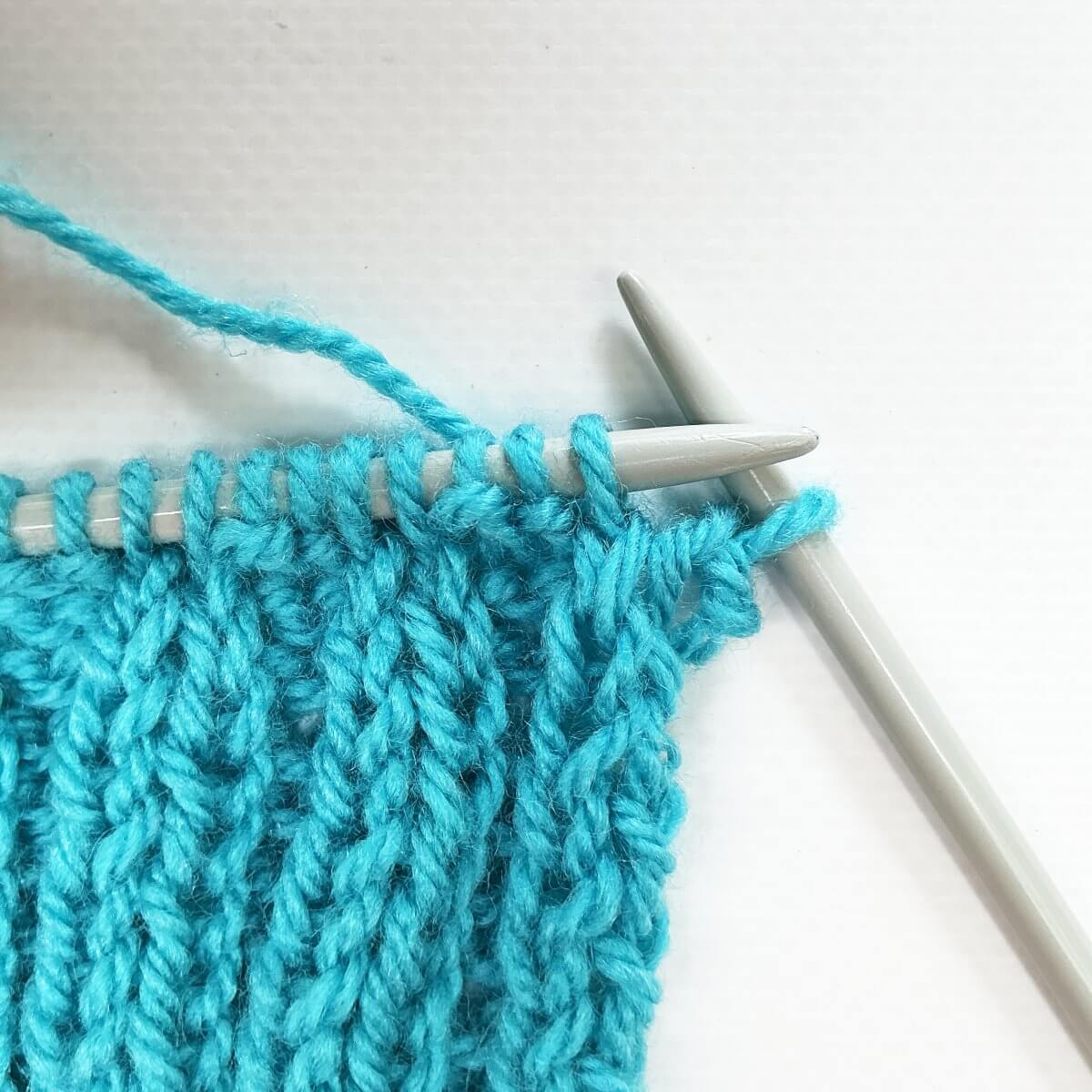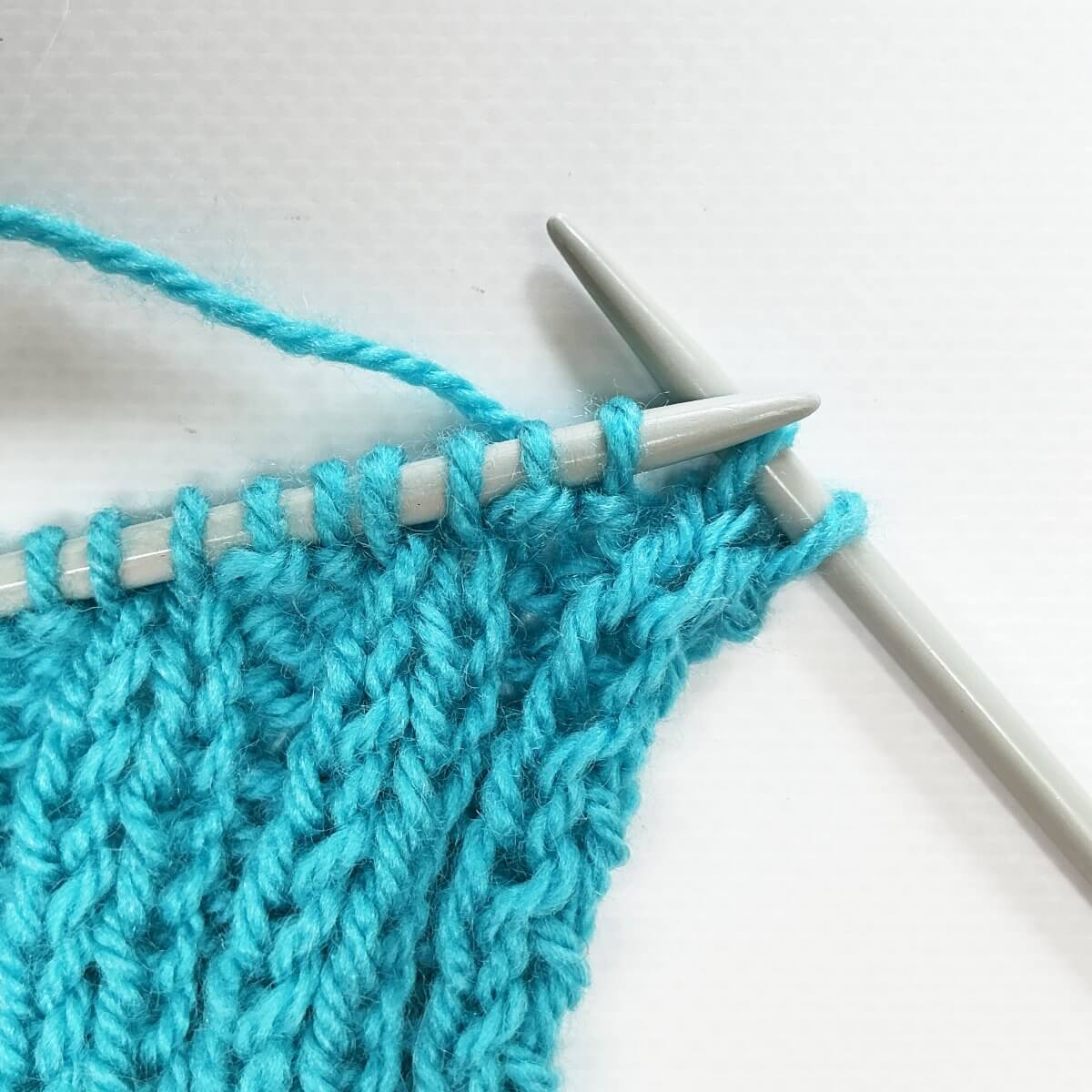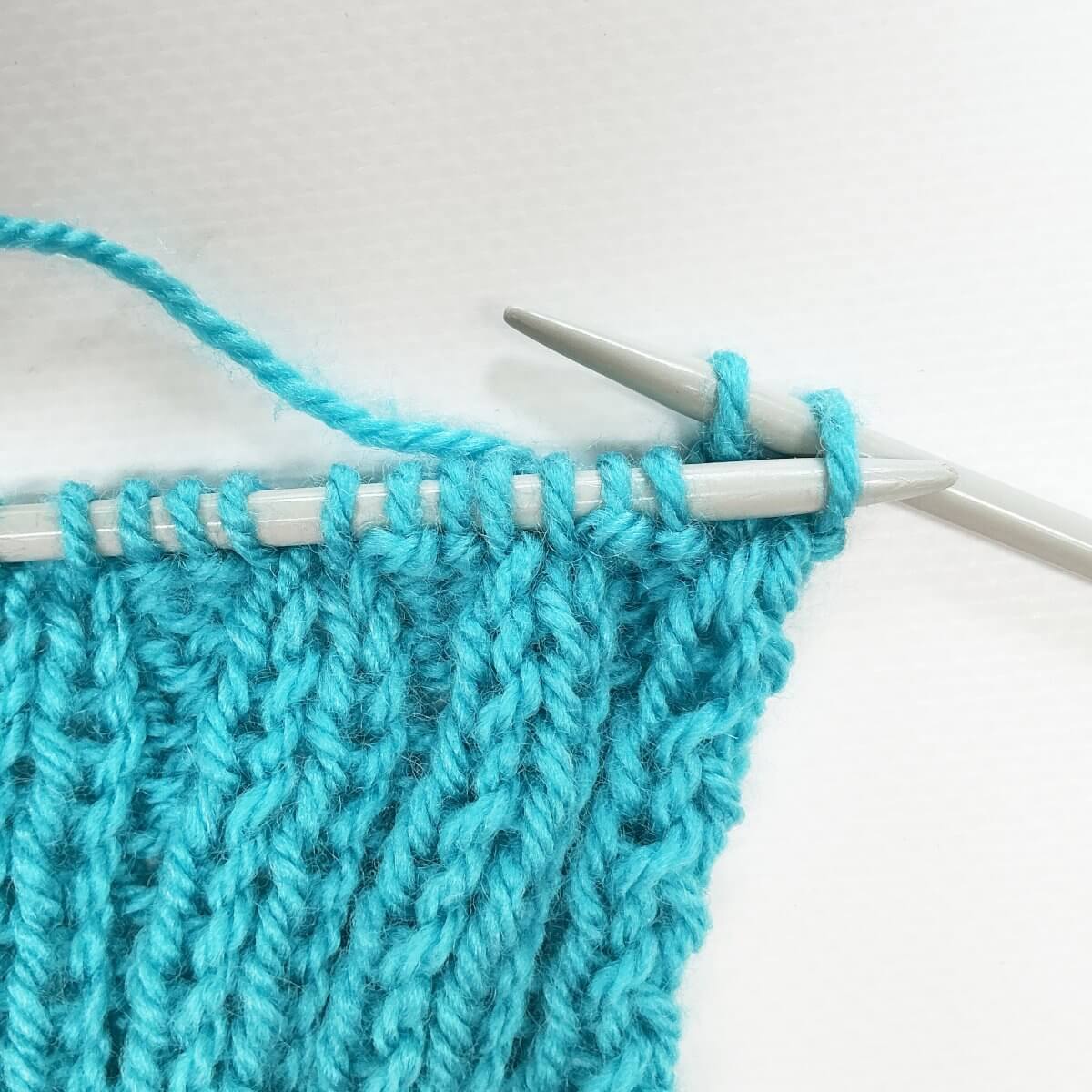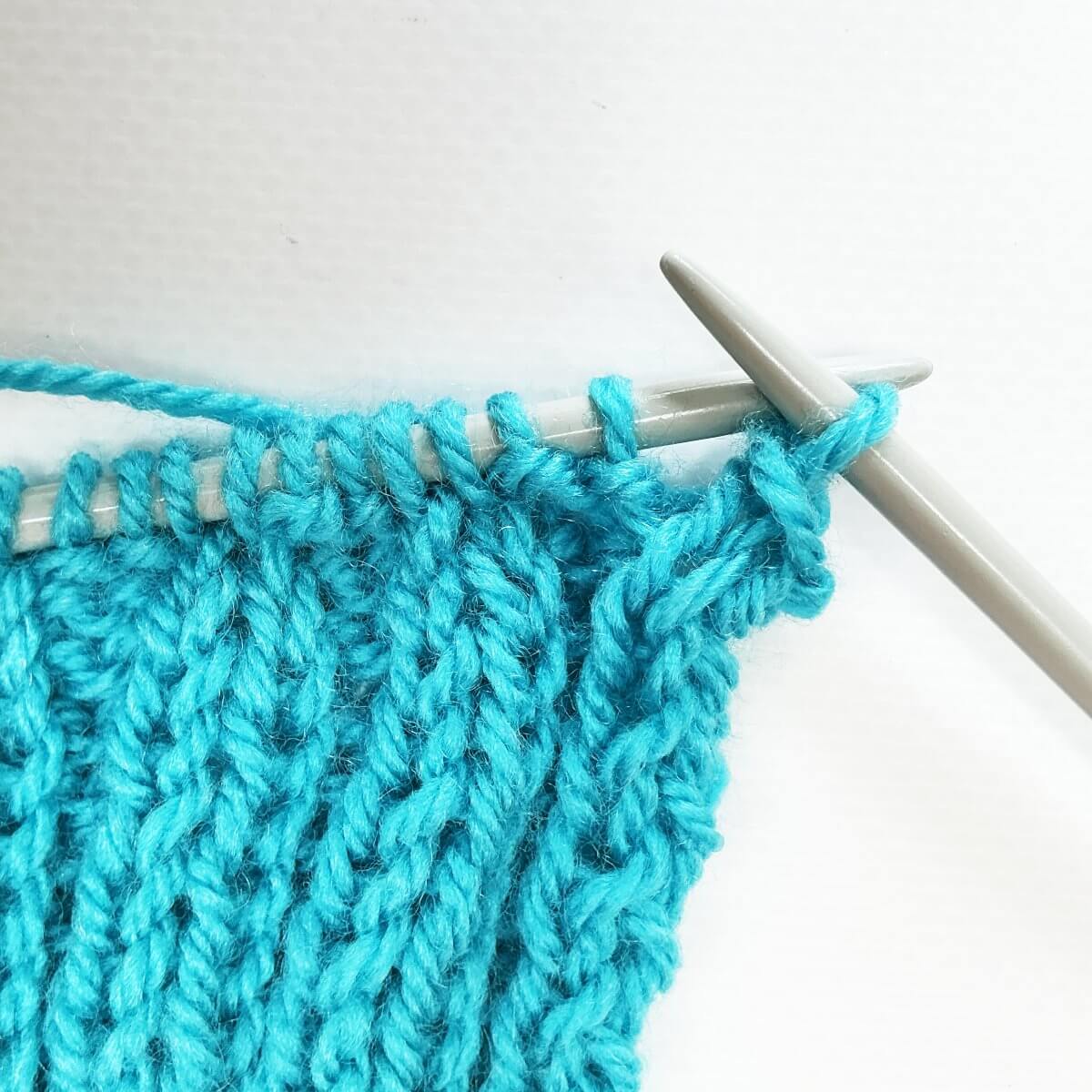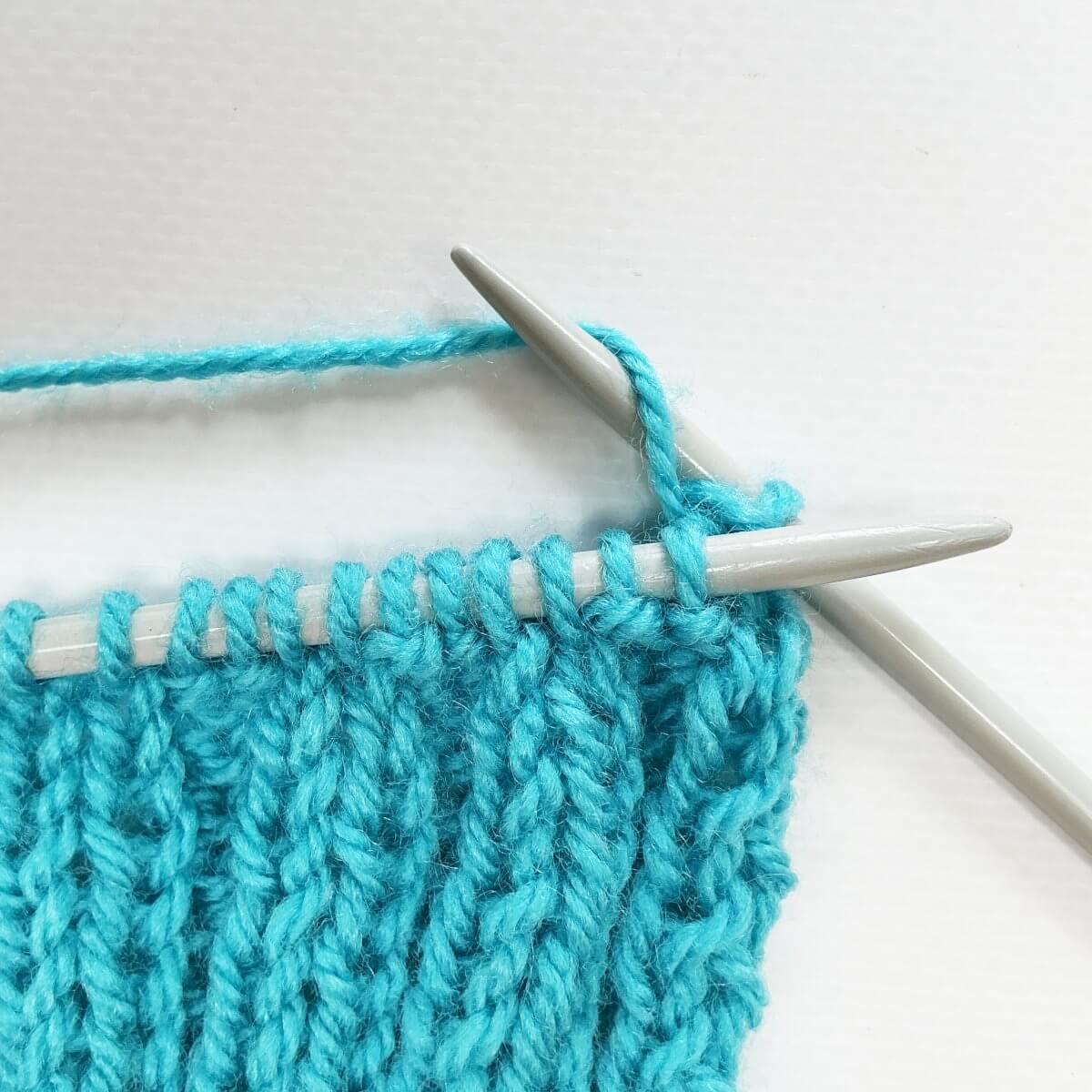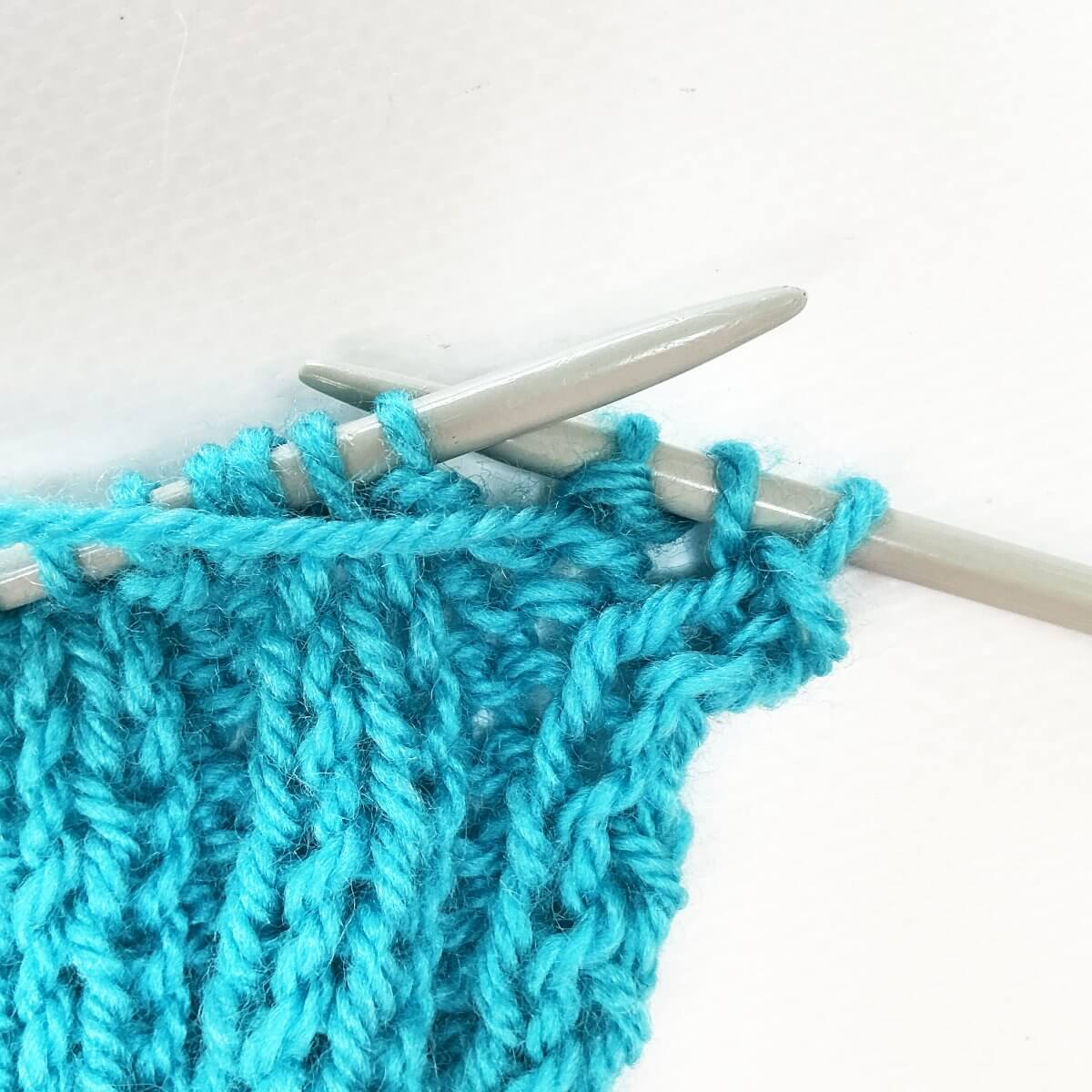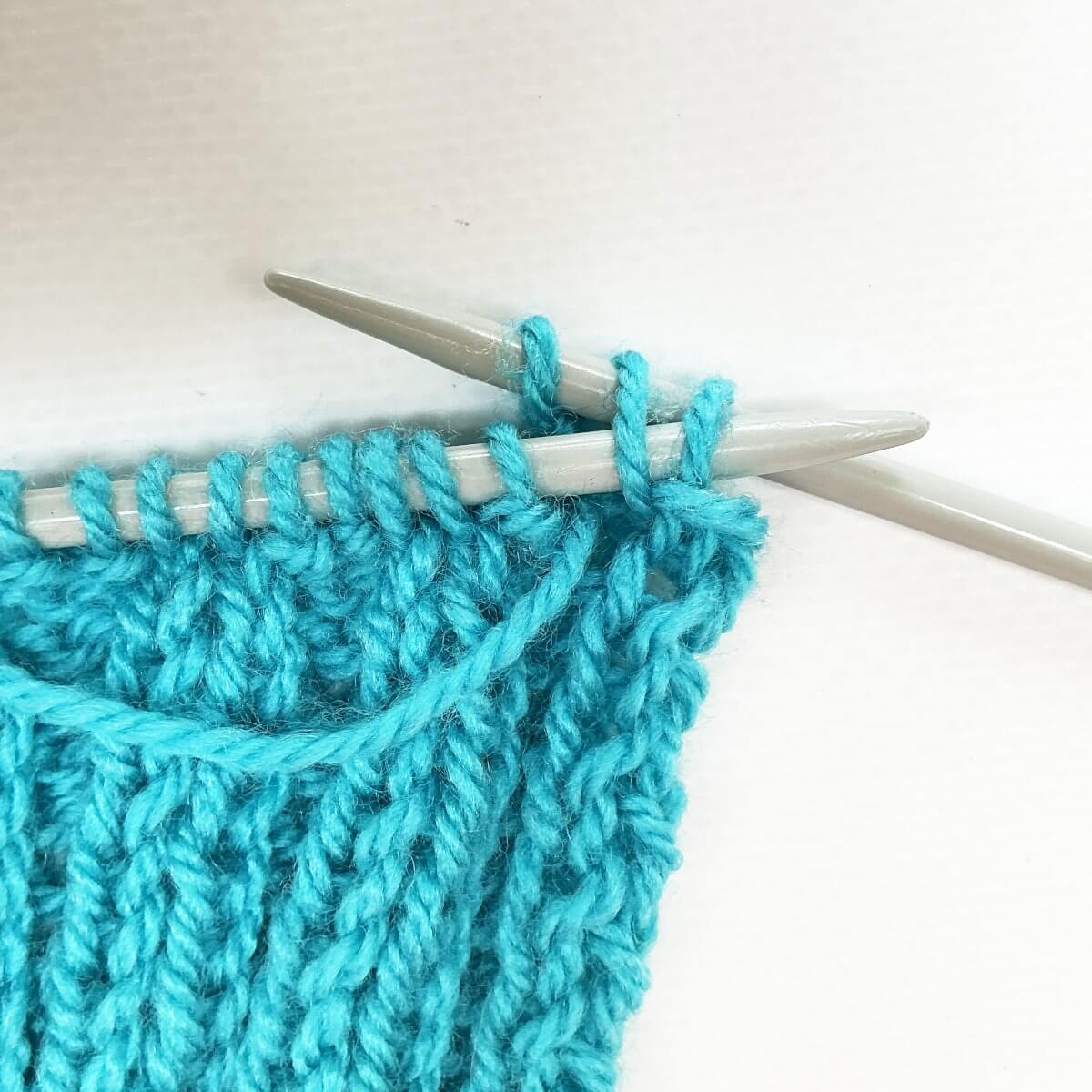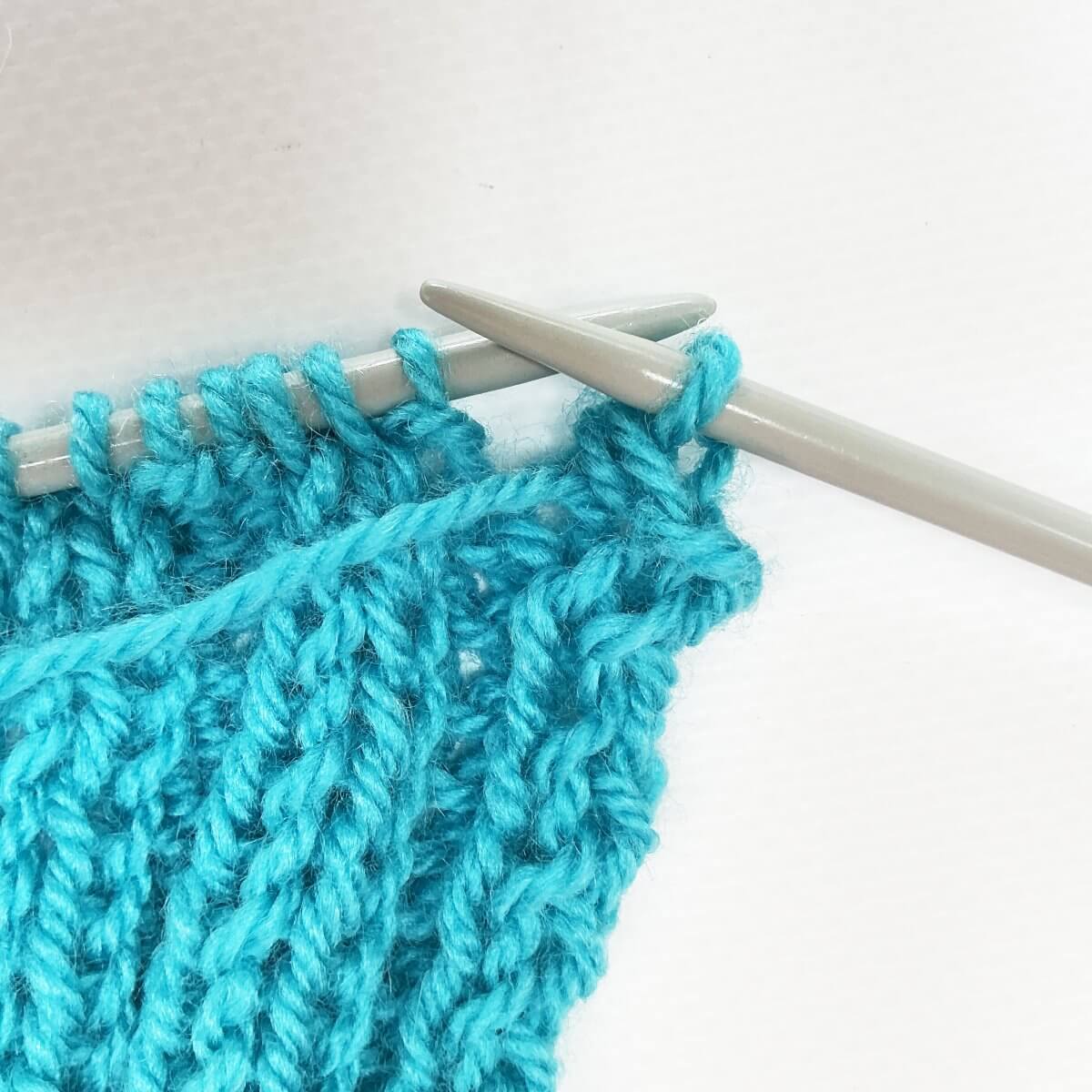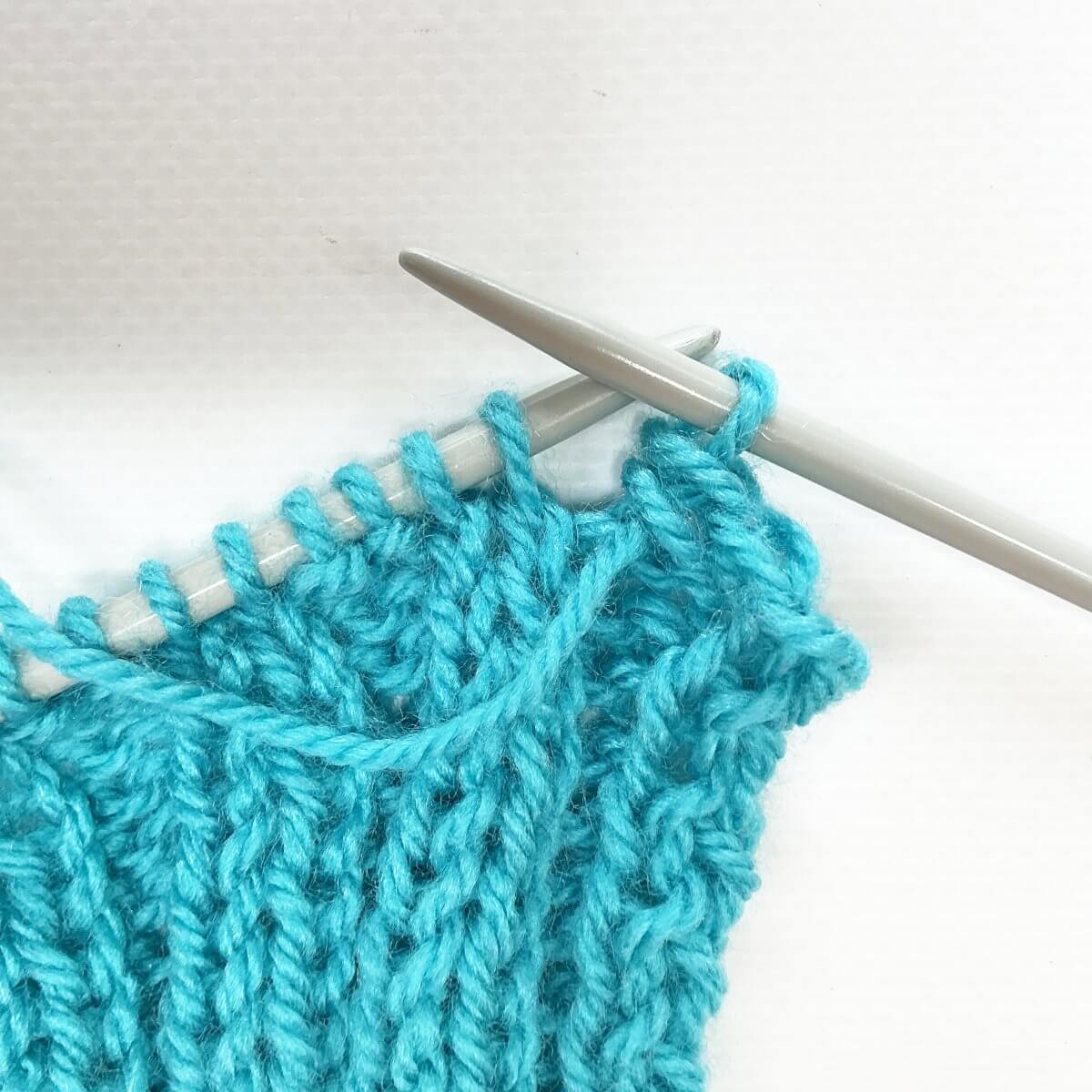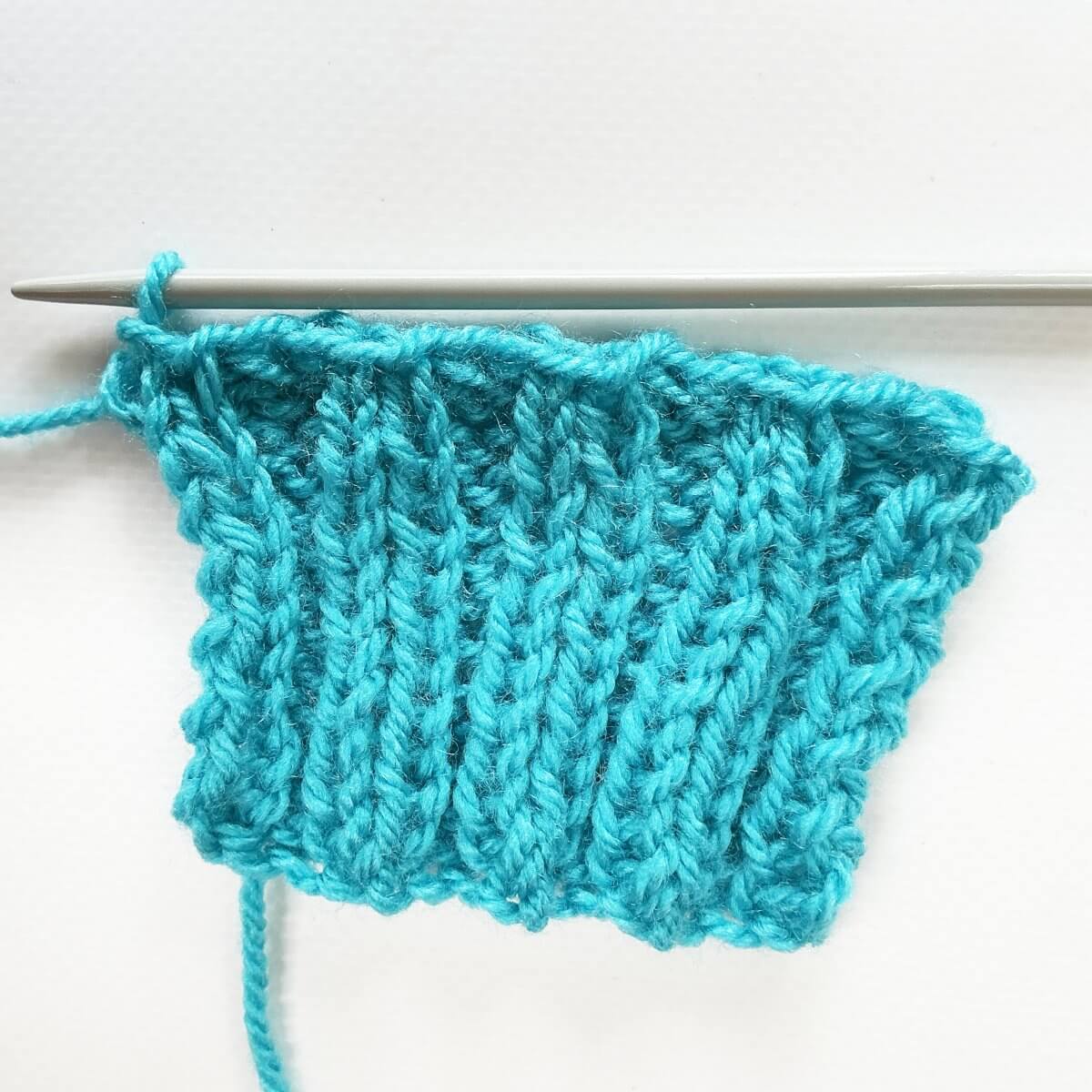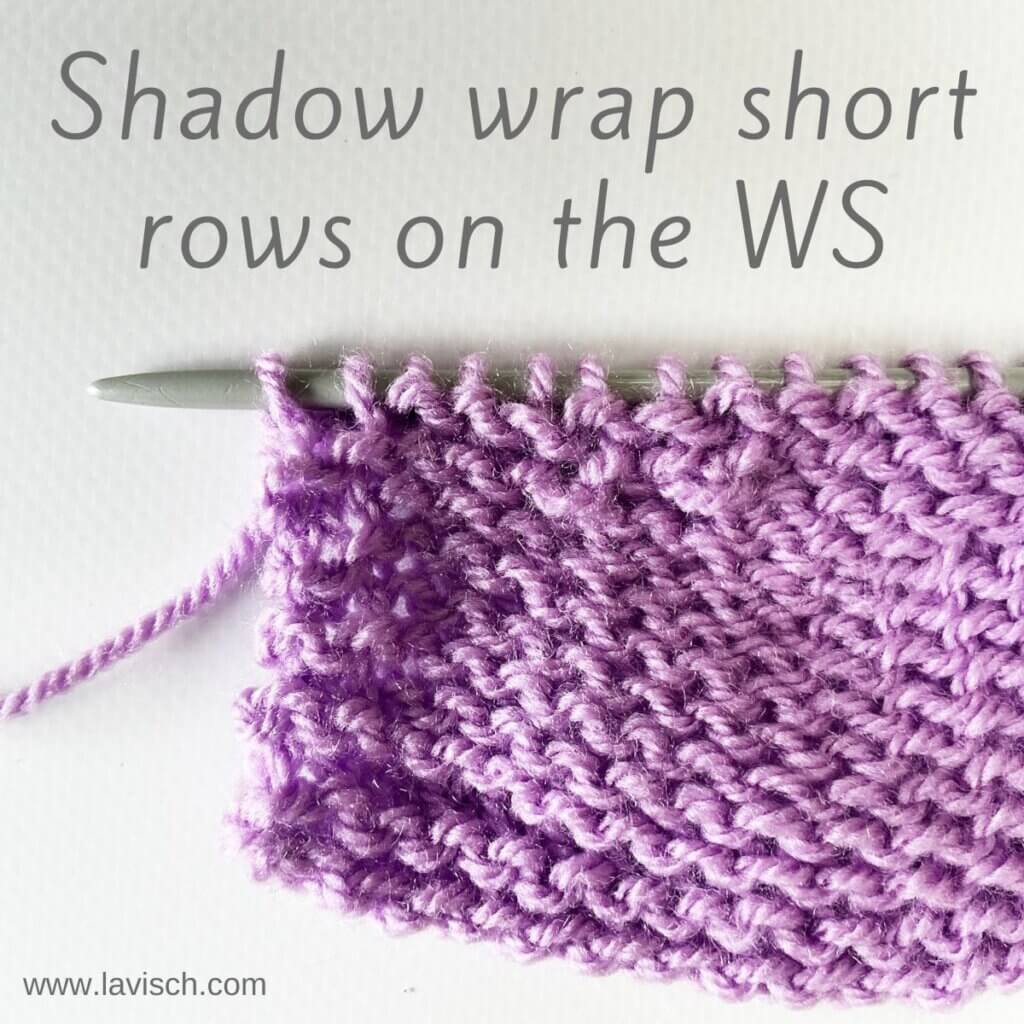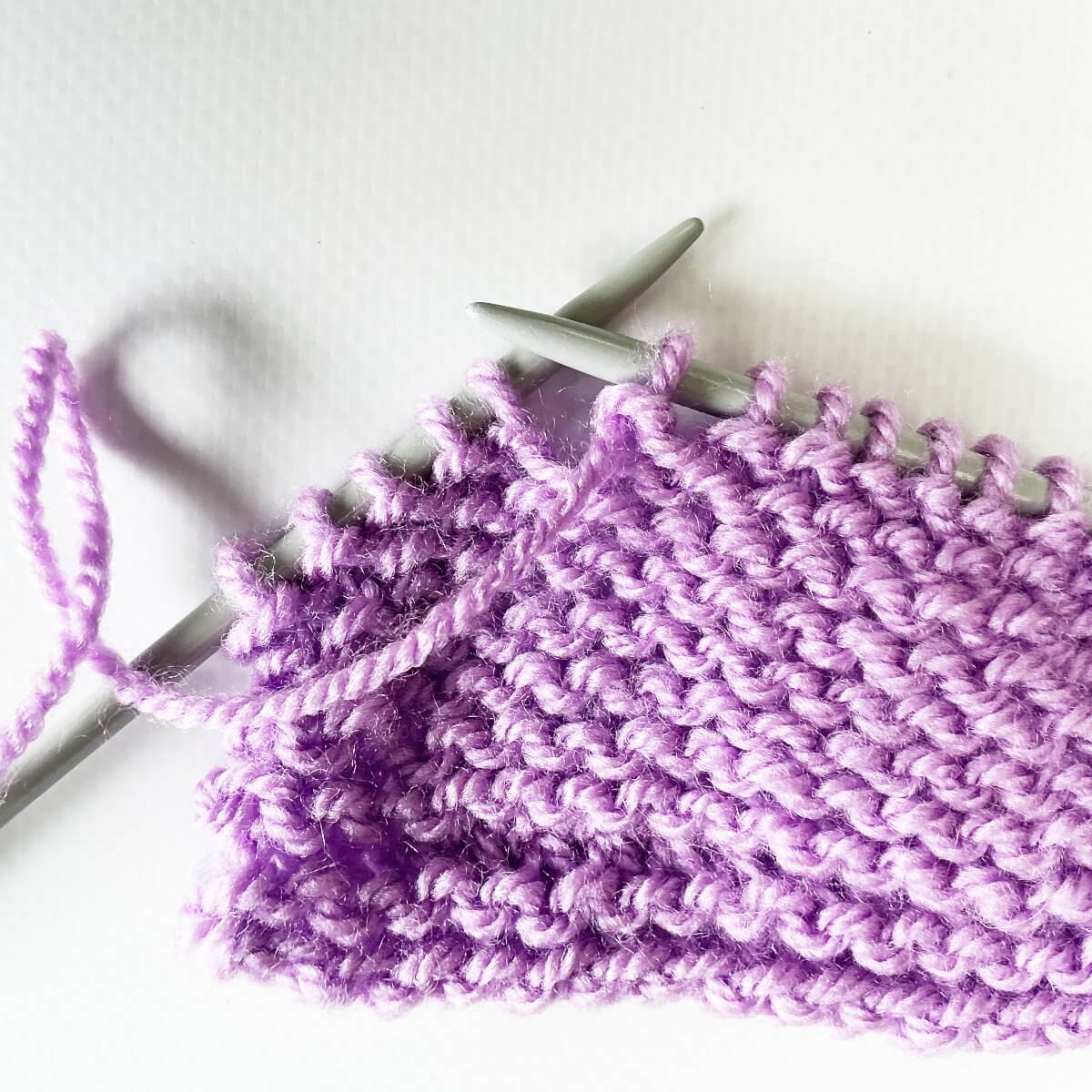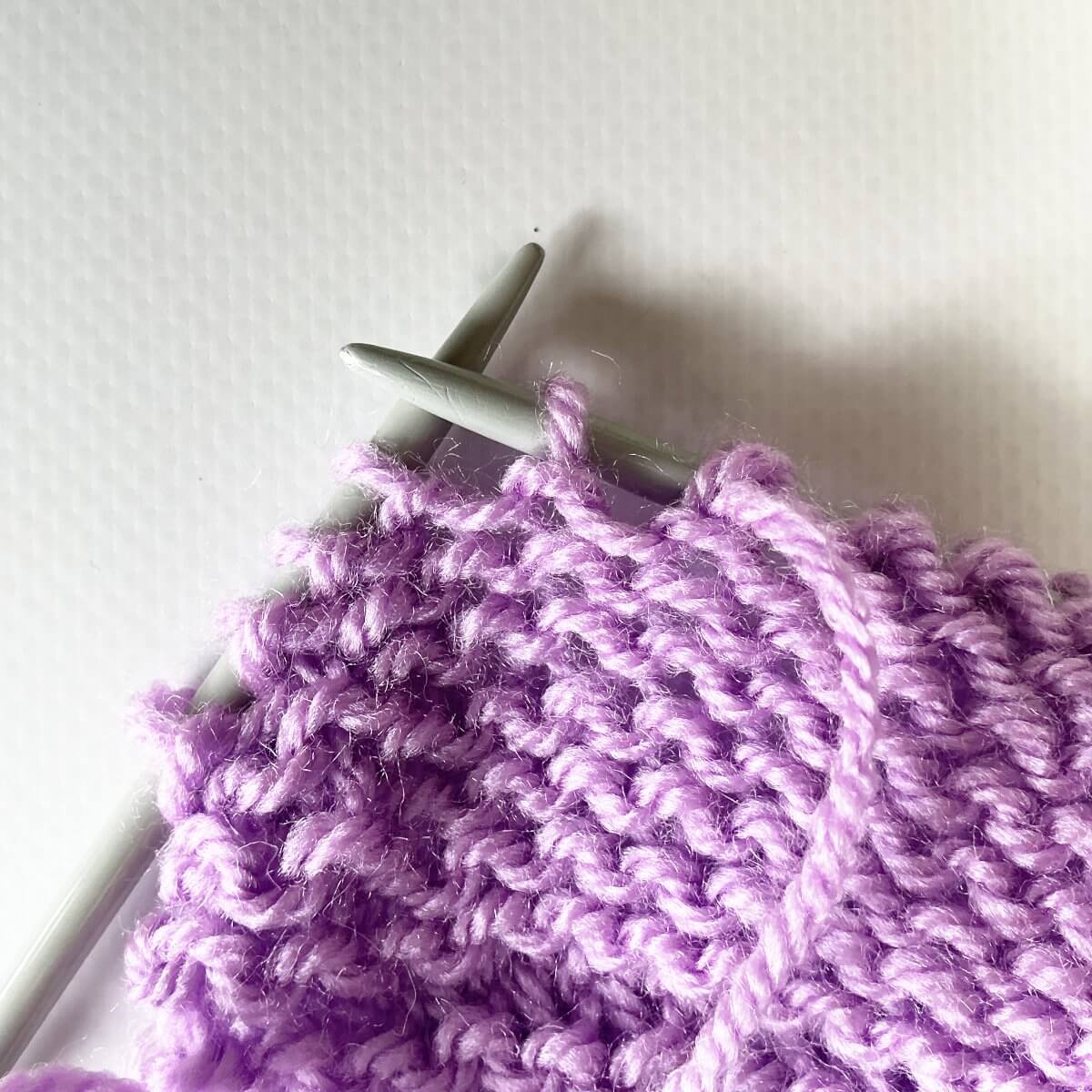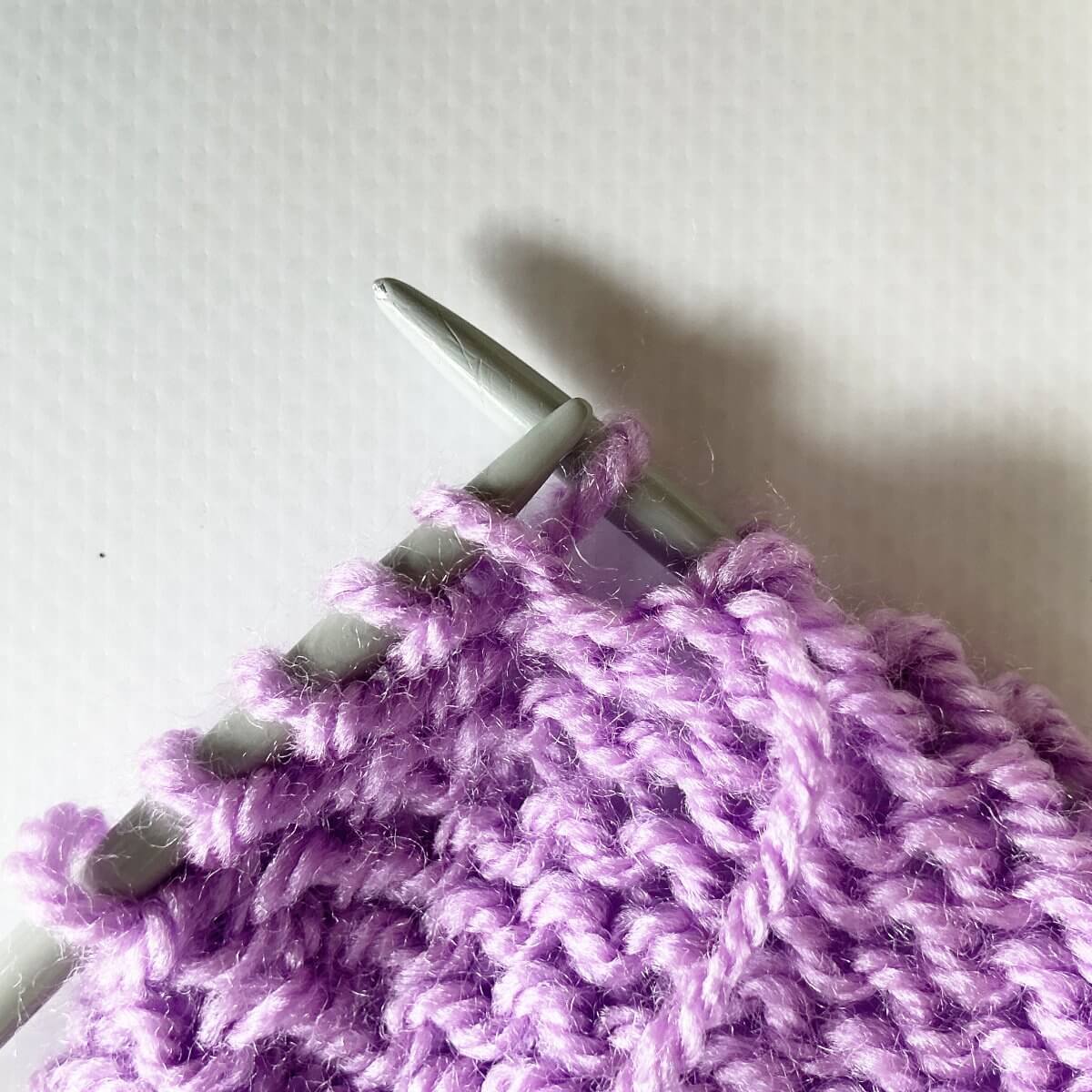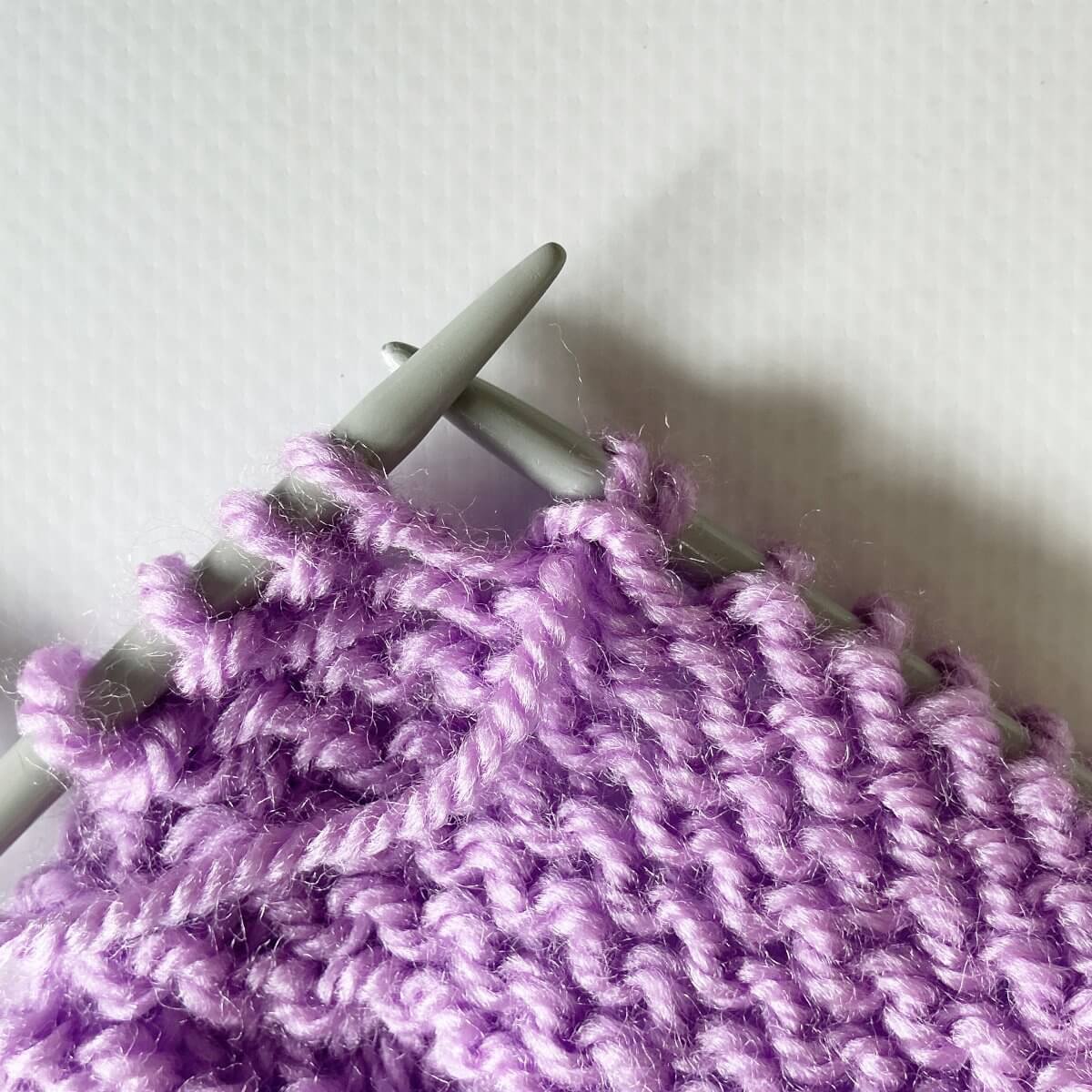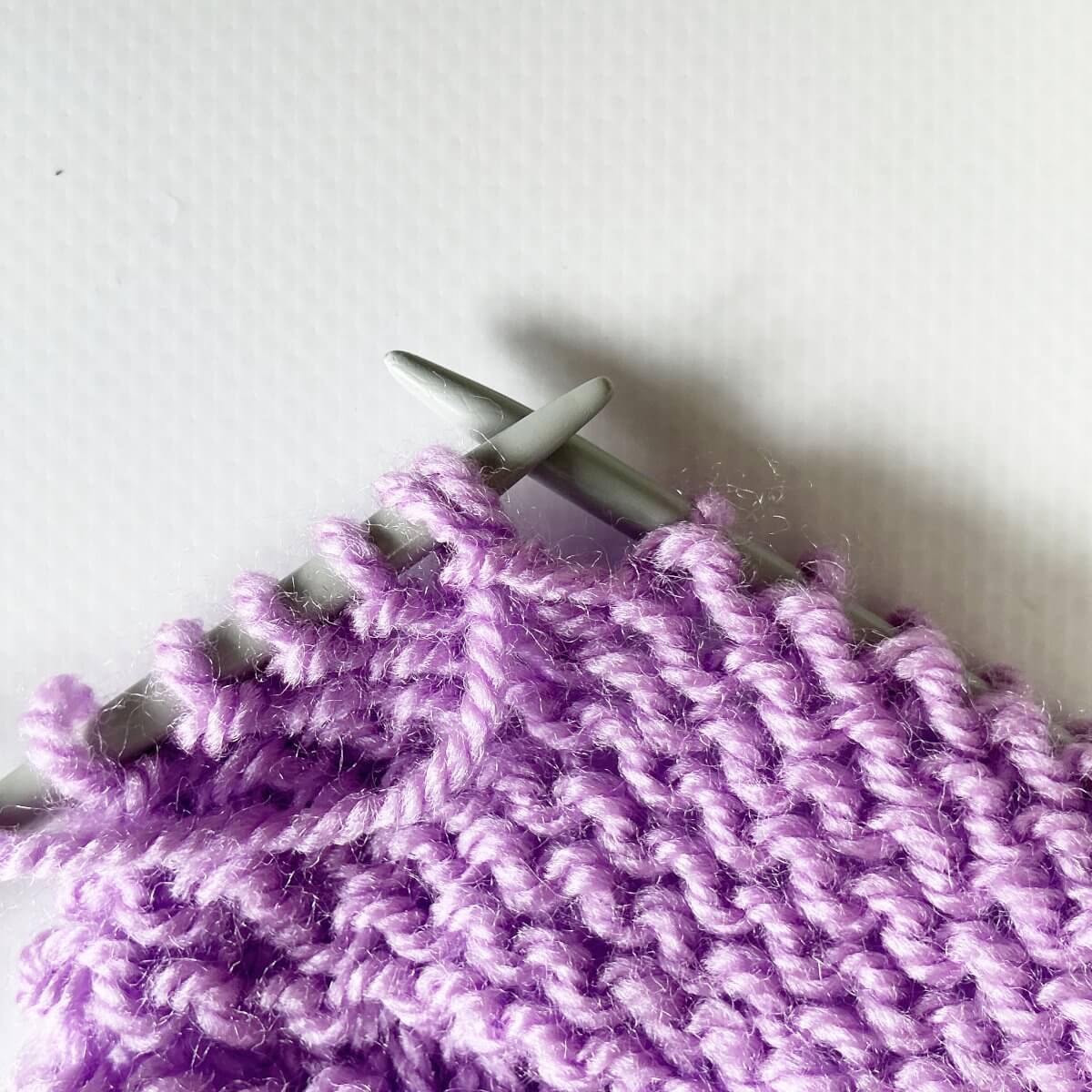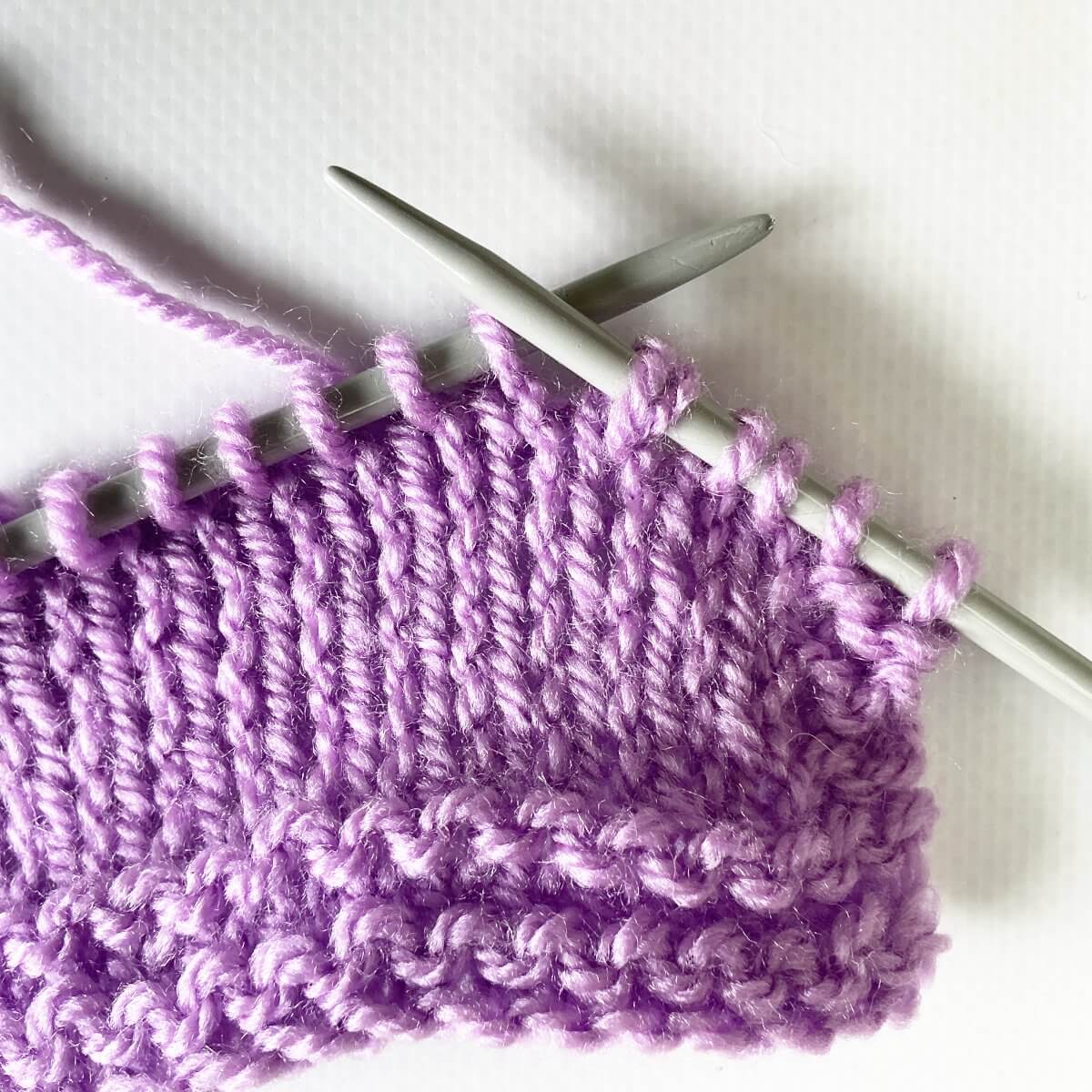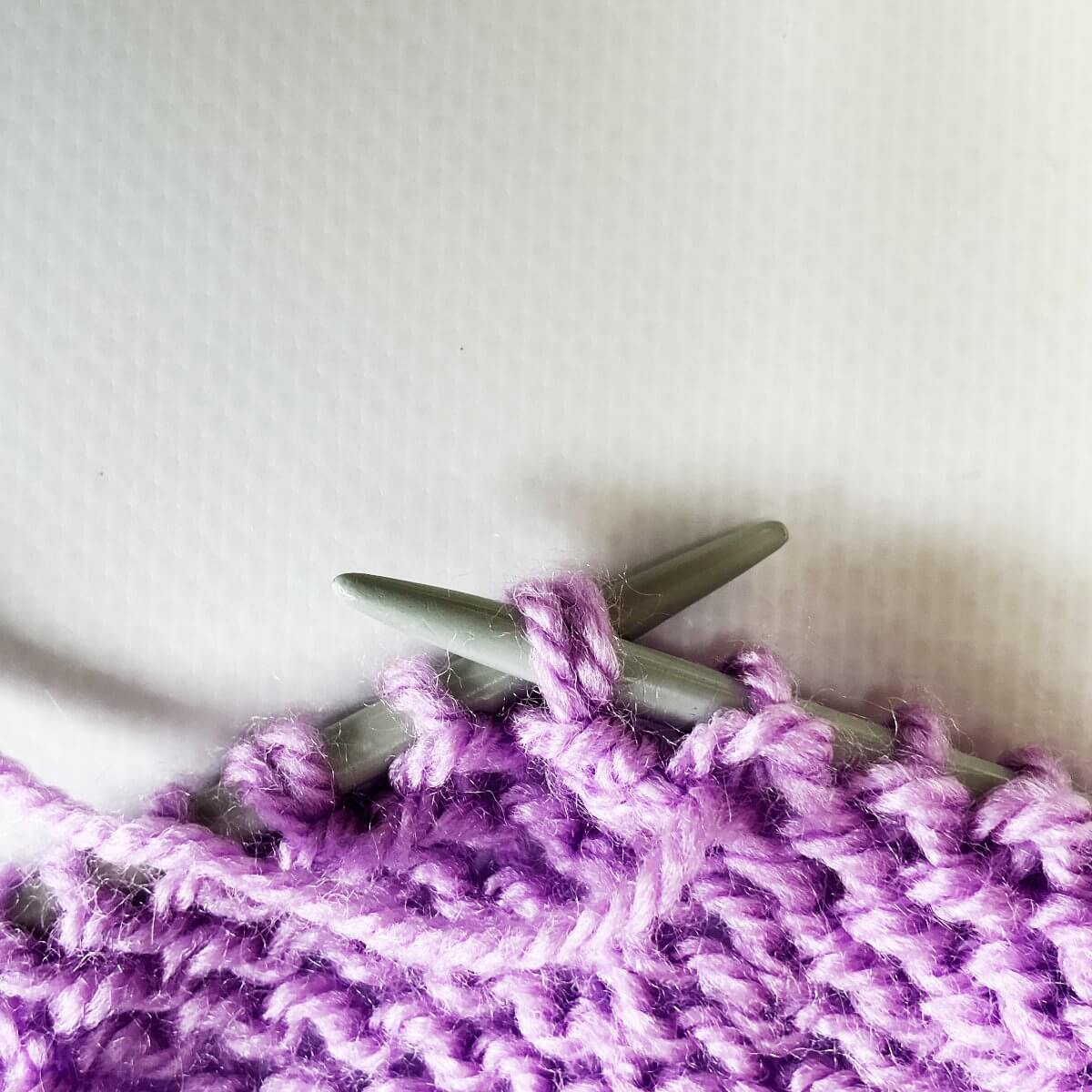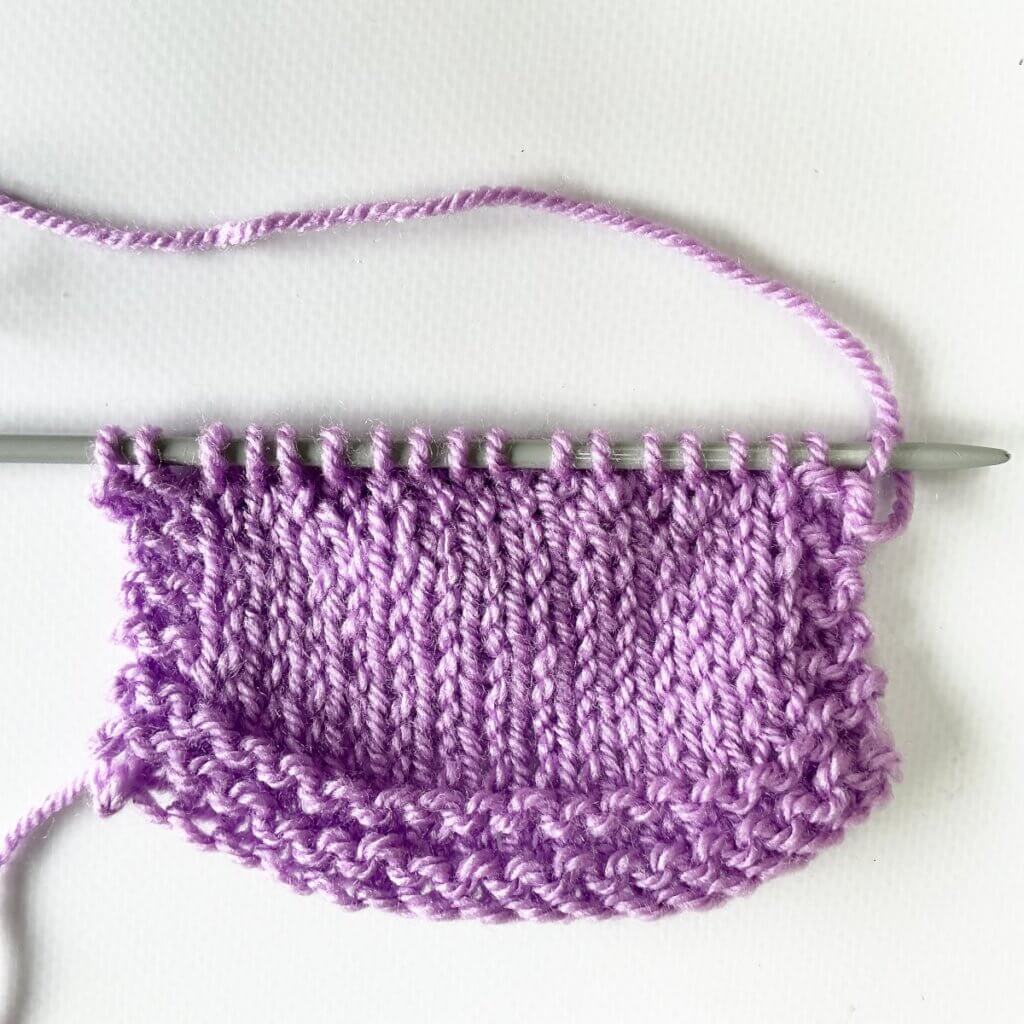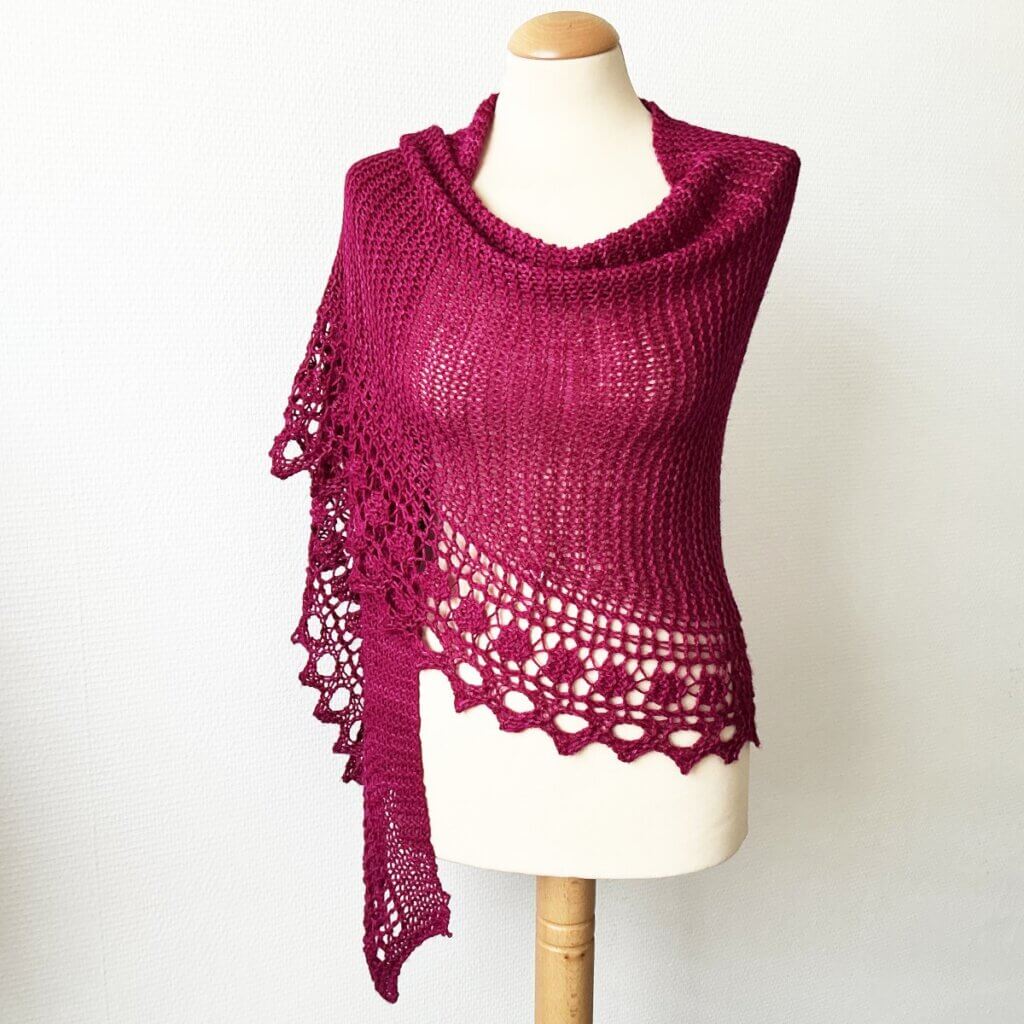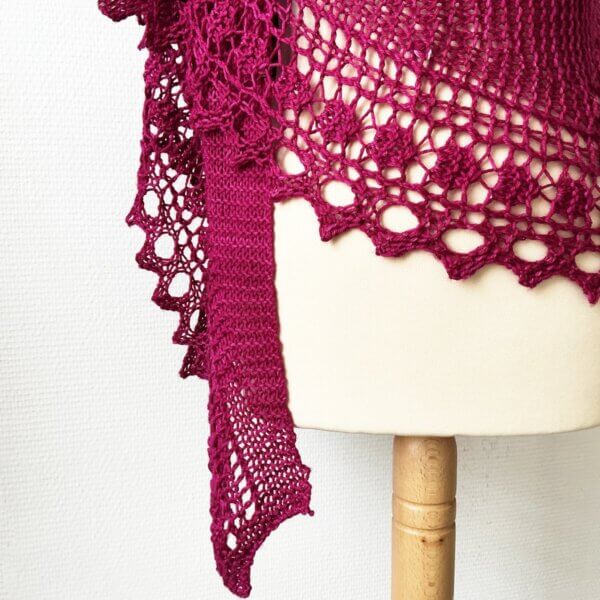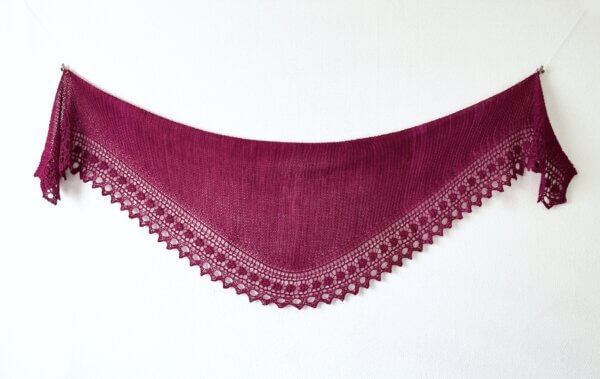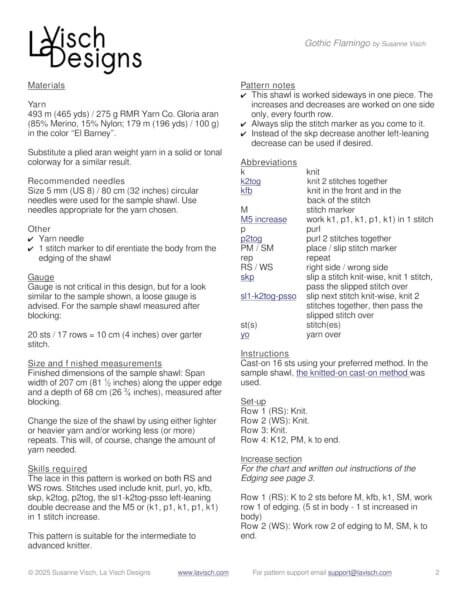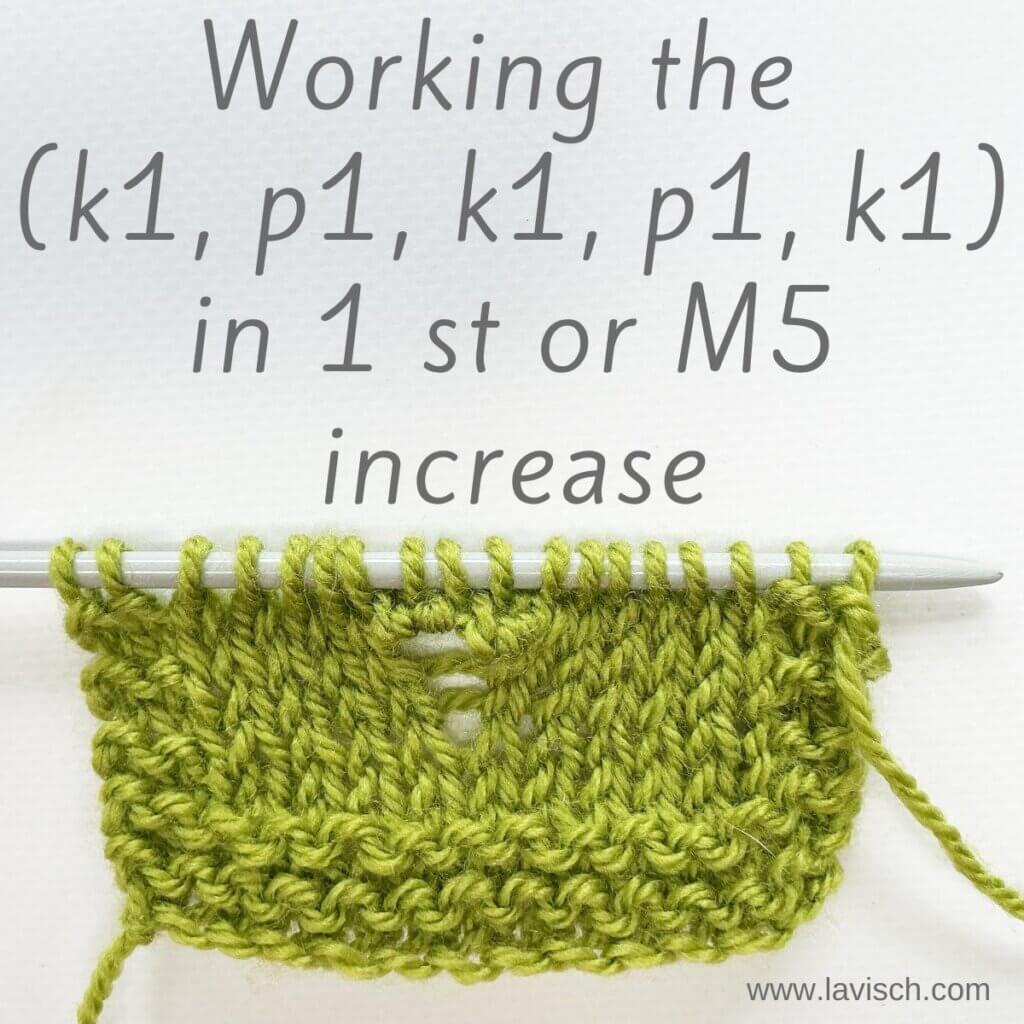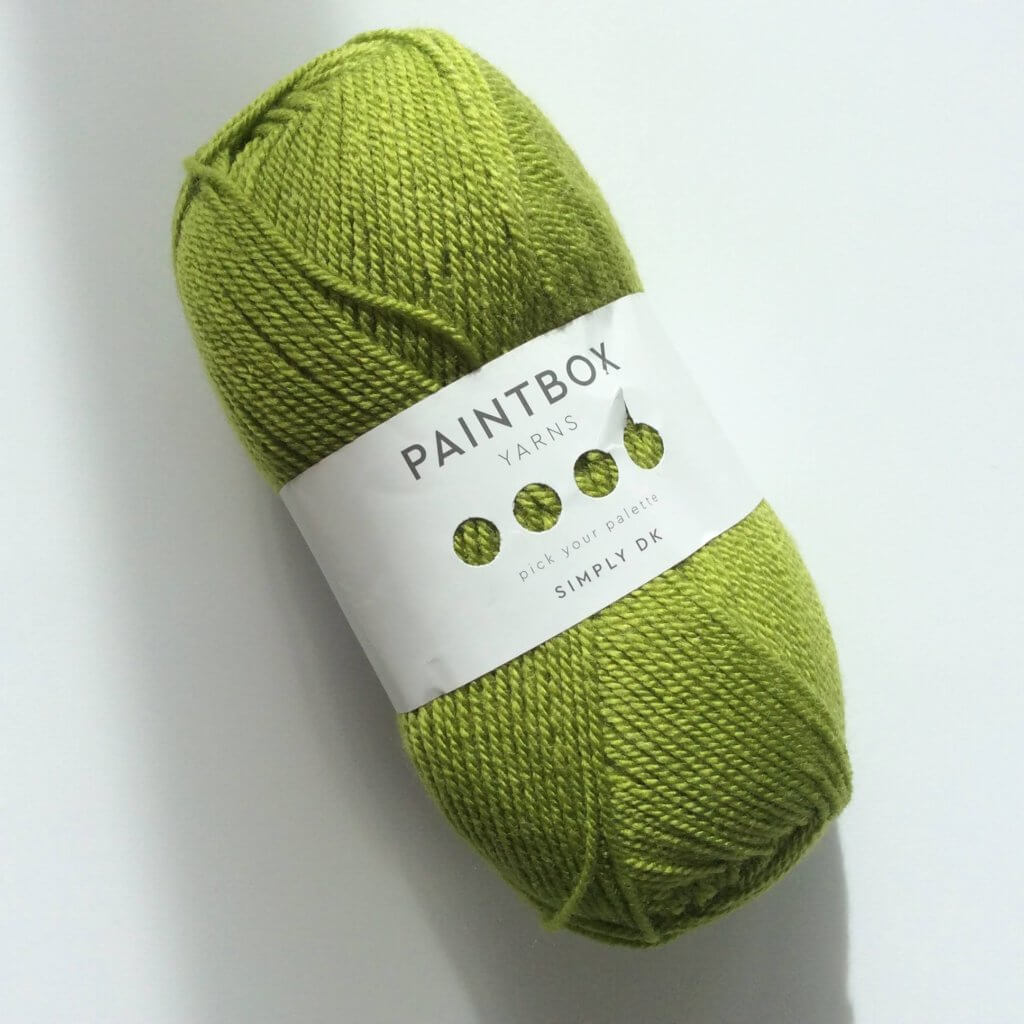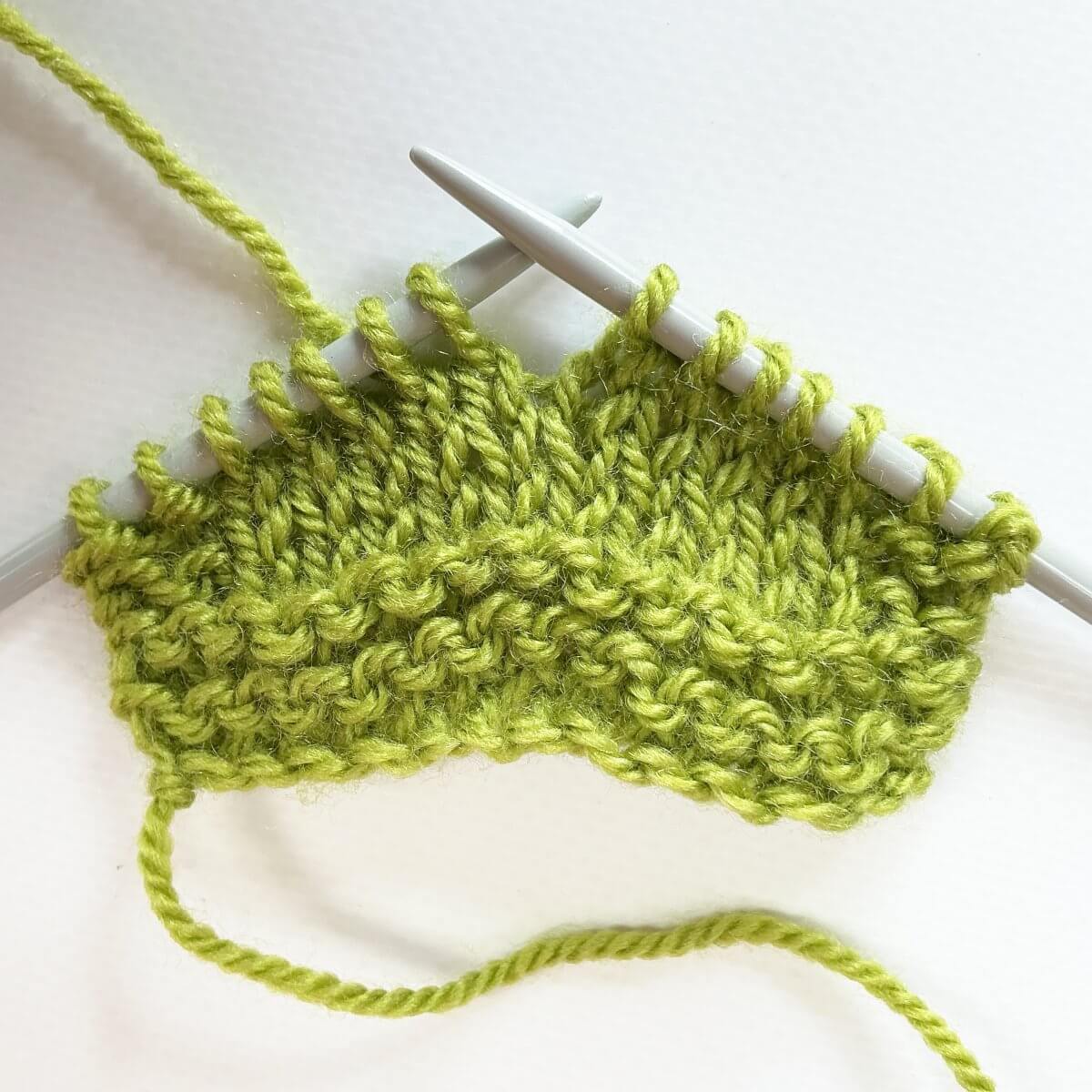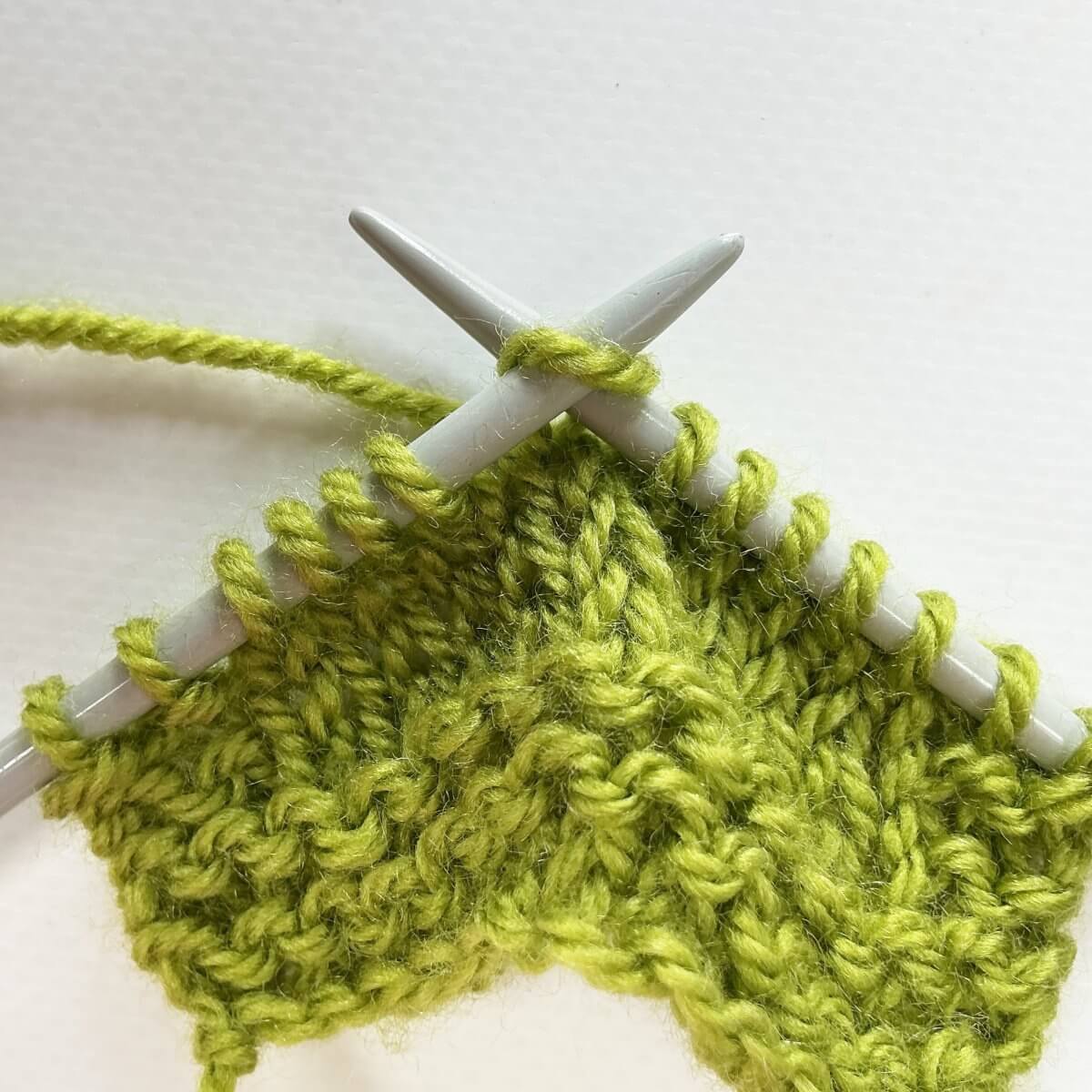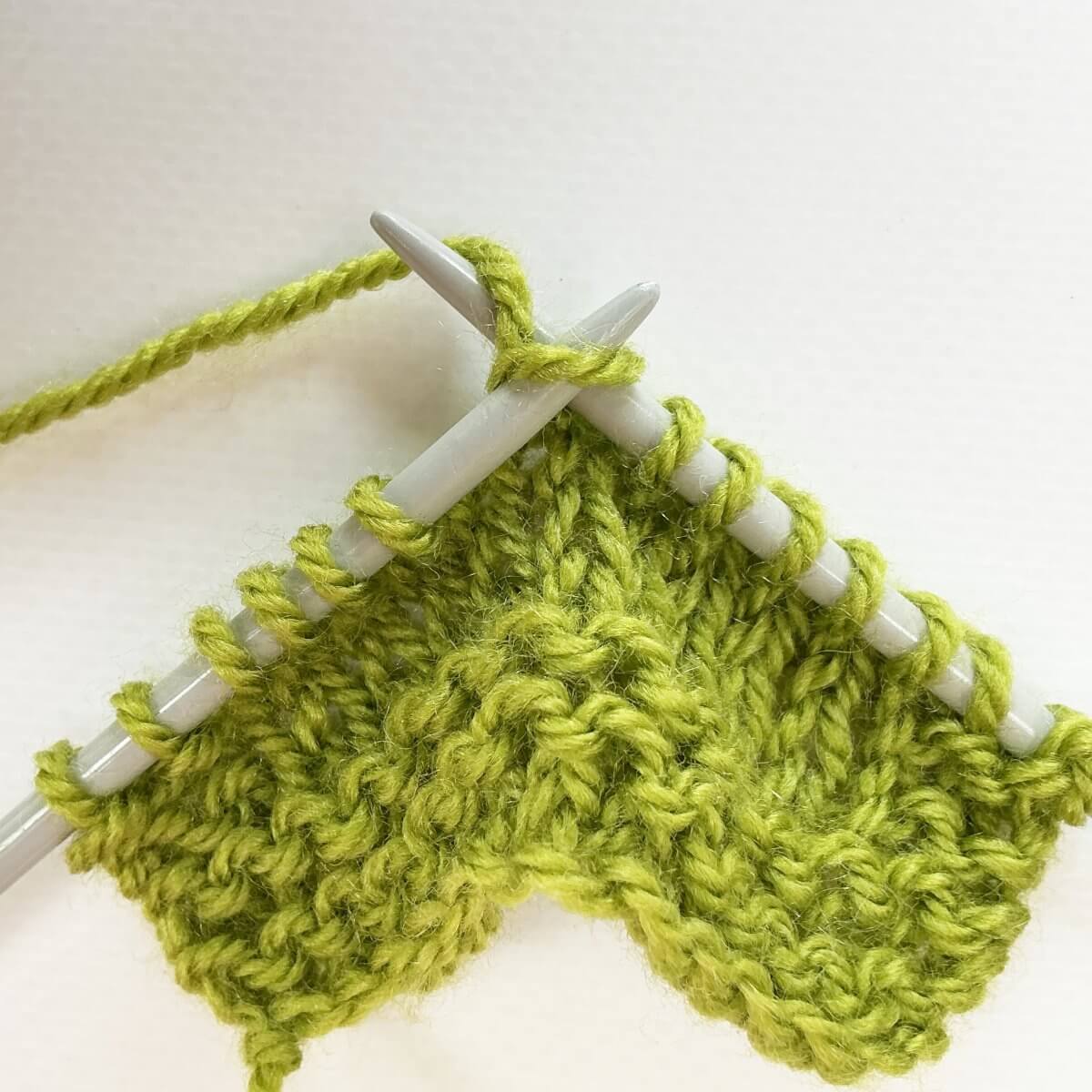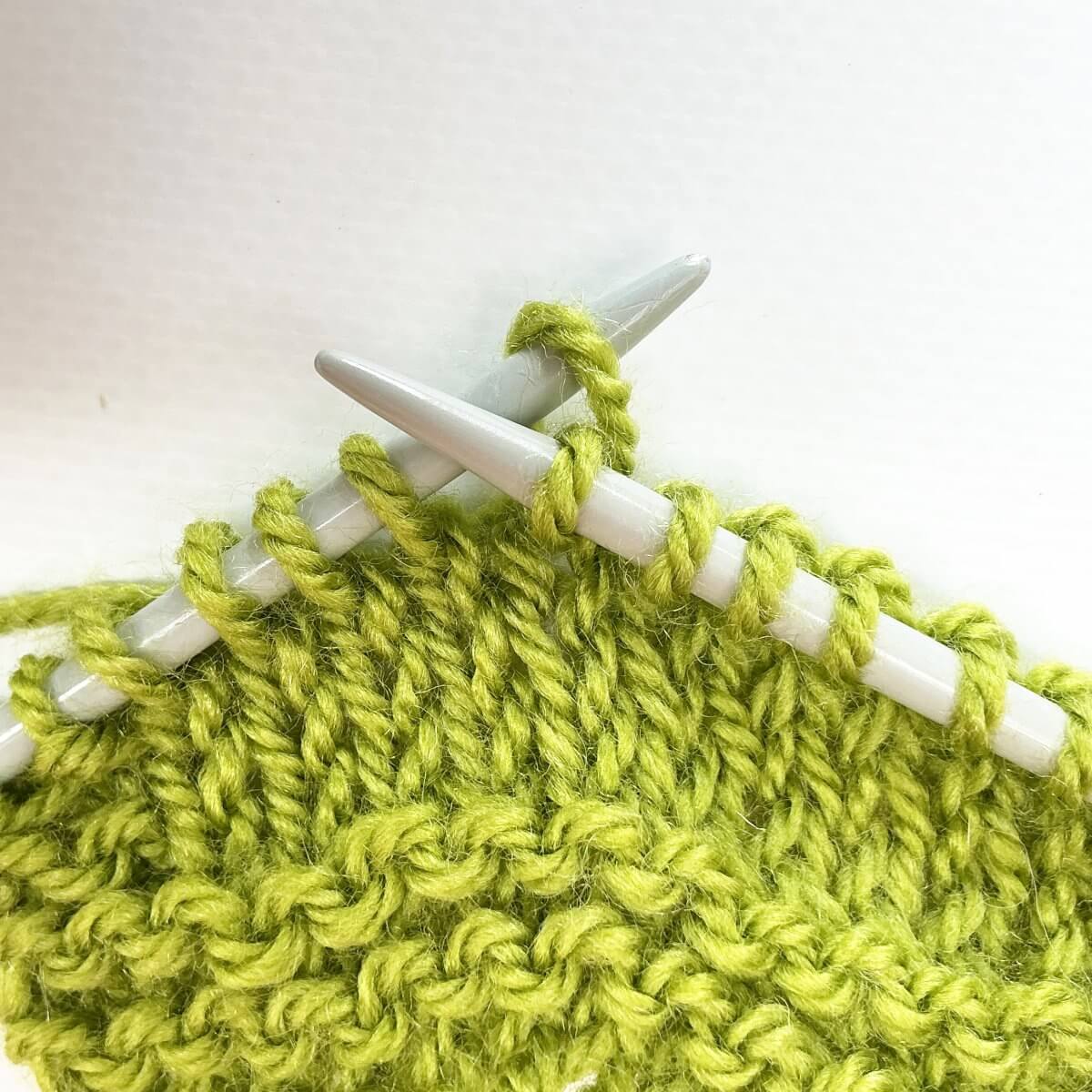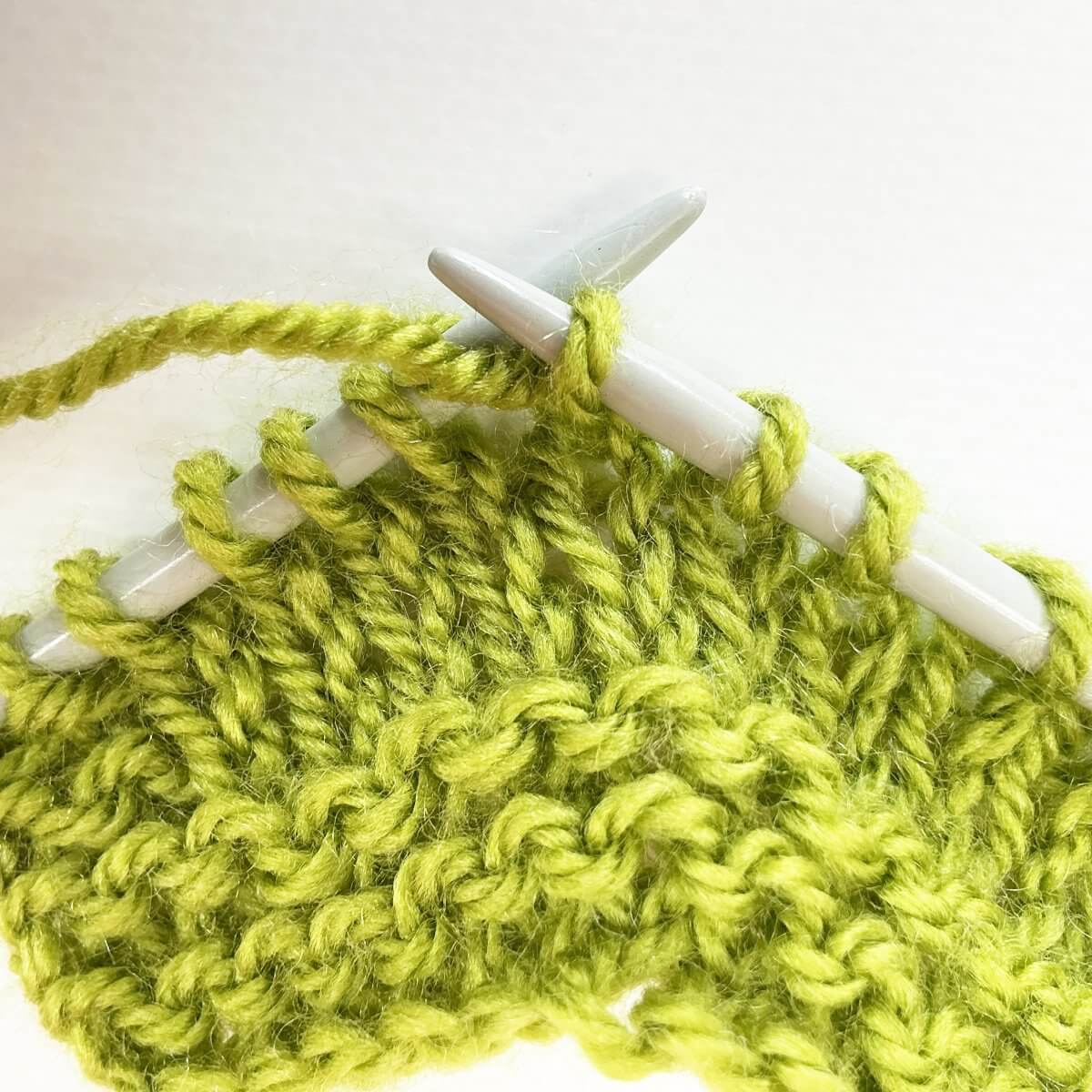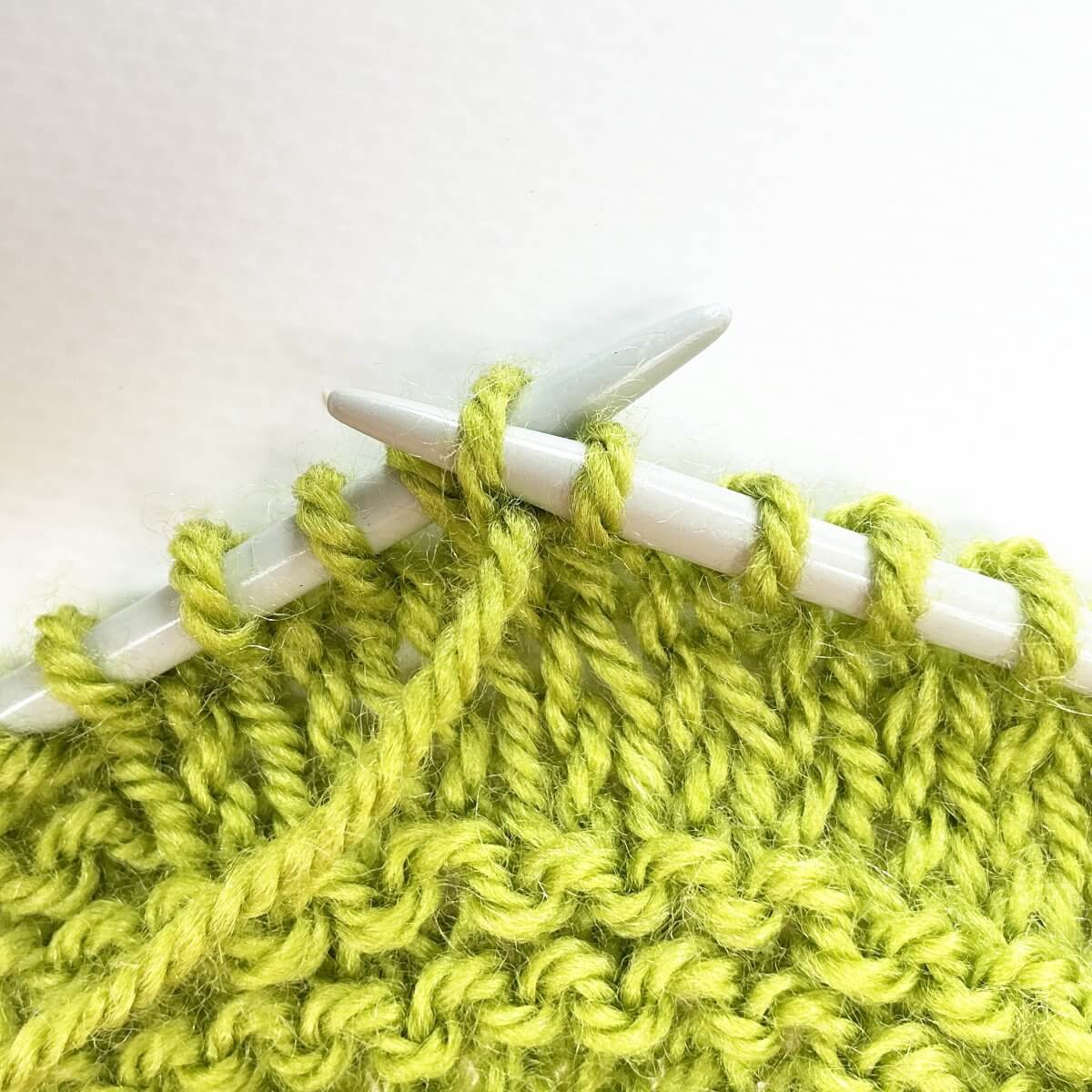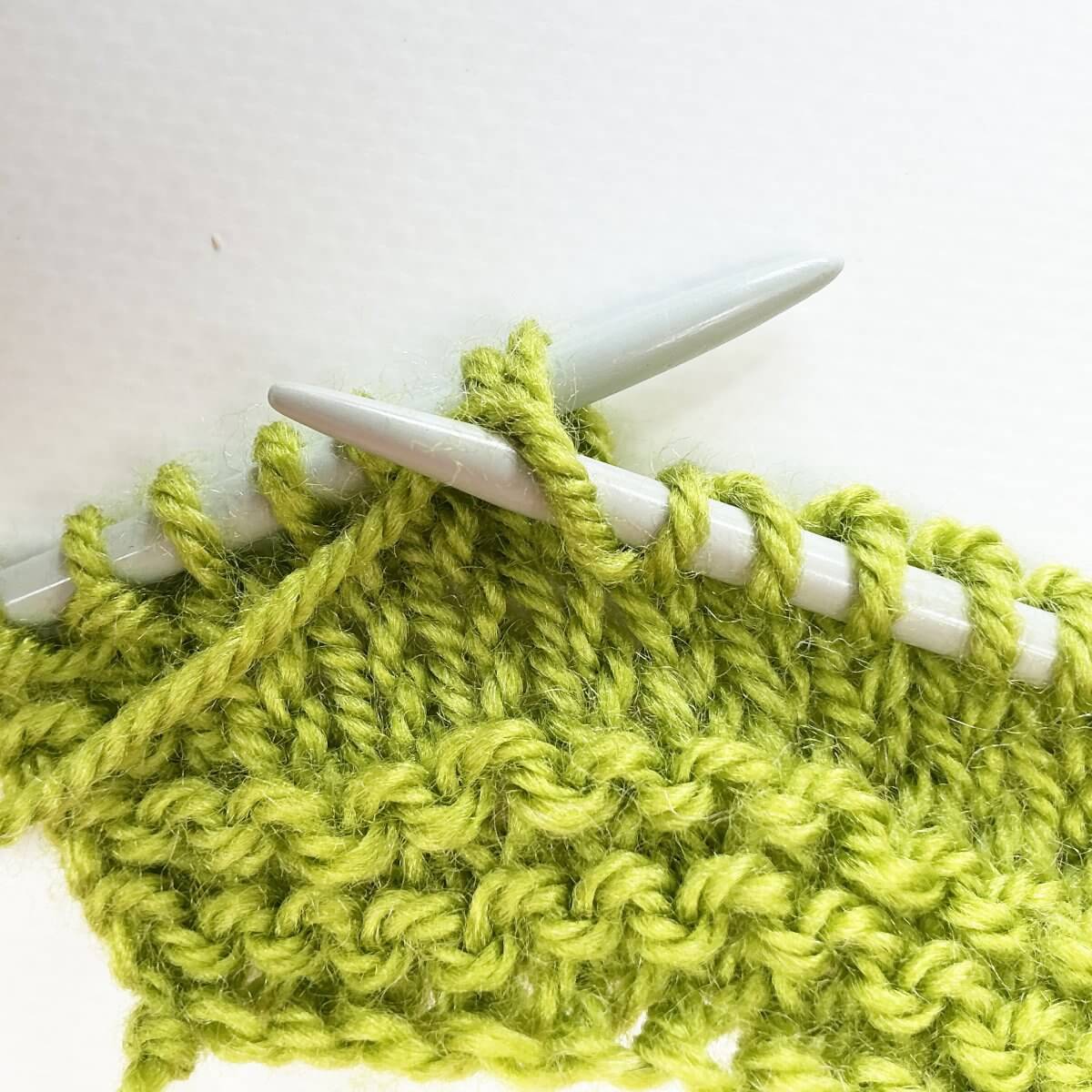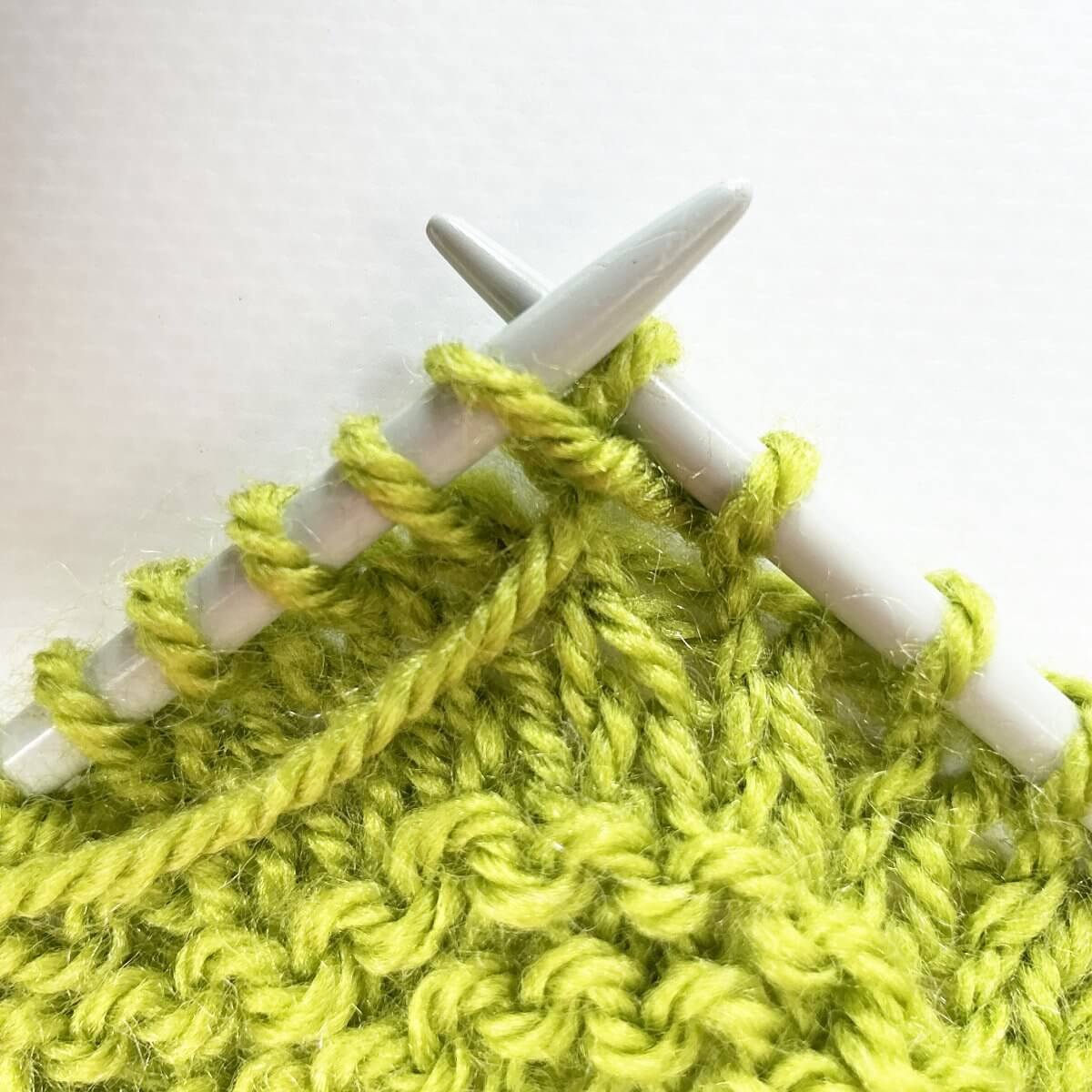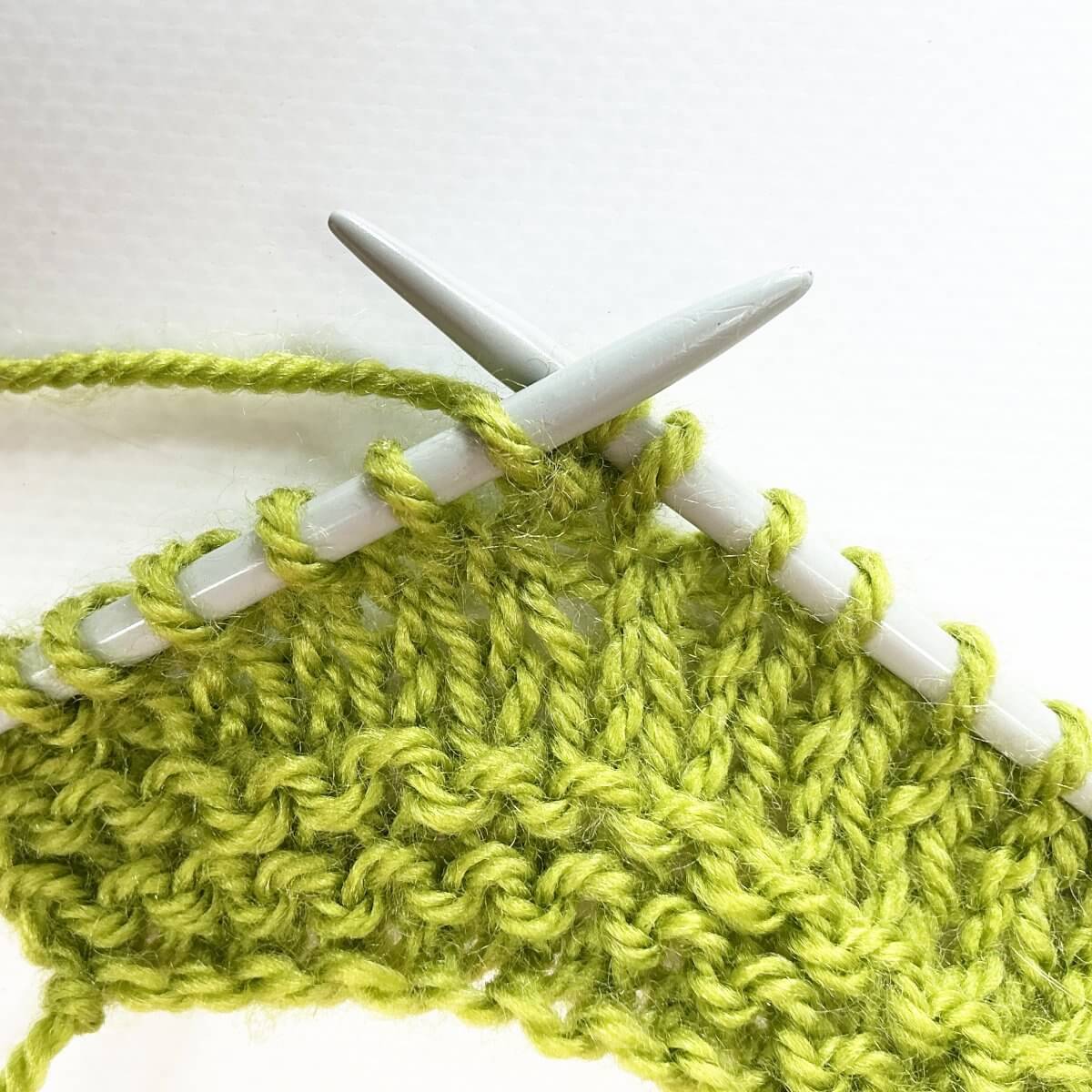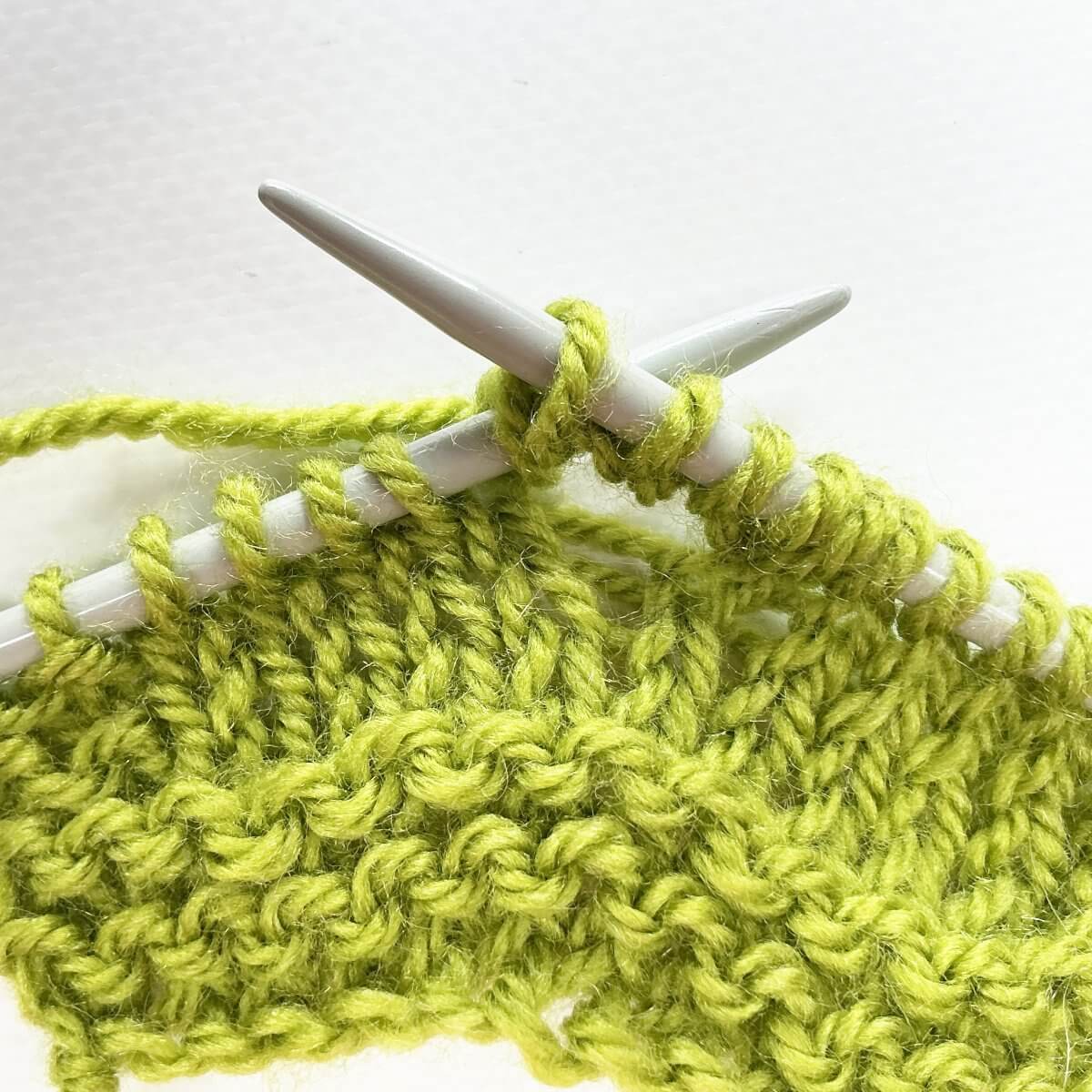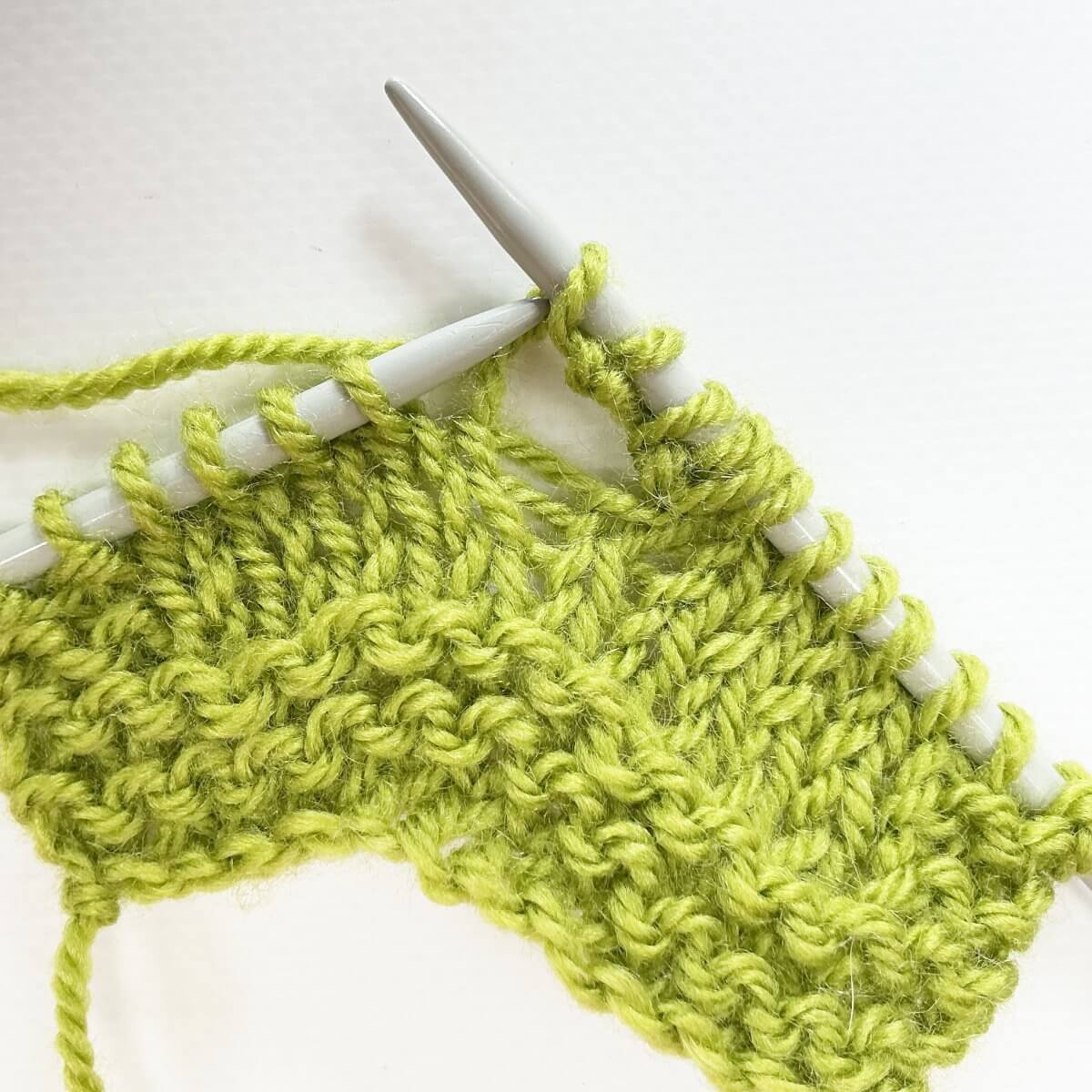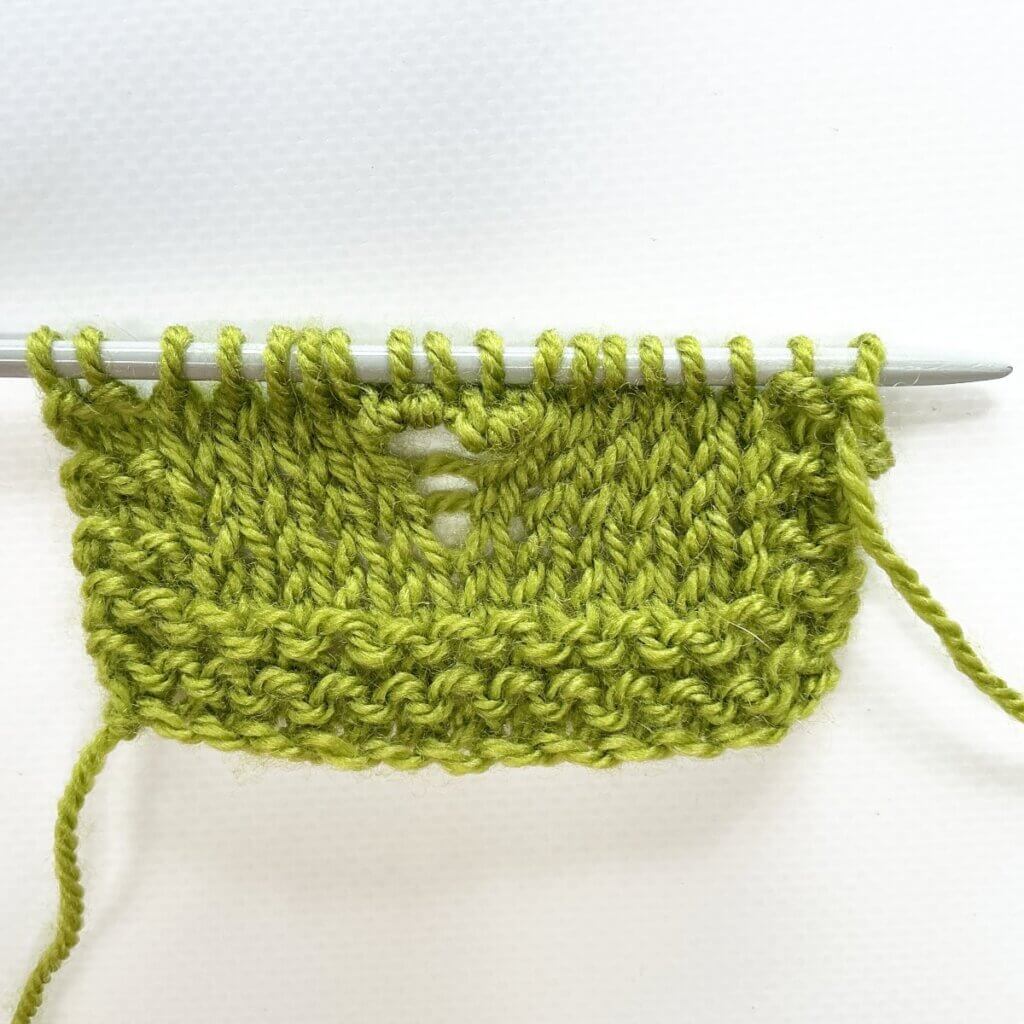tutorial – the sl2-k2tog-p2sso left-leaning centered decrease
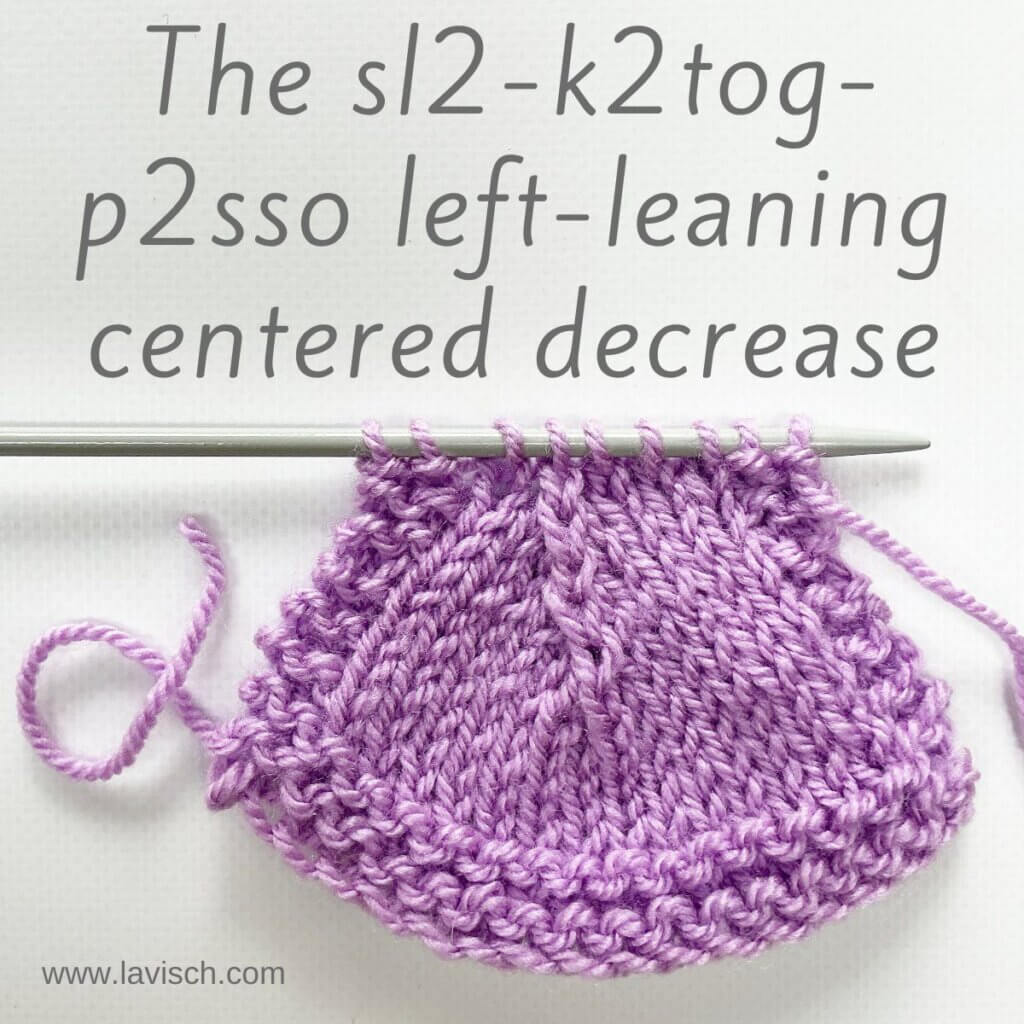
In knitting, as in life, many paths can lead to the same beautiful result. When it comes to shaping your fabric with decreases, there are often several ways to achieve a similar visual effect, each with its own subtle character. The sl2-k2tog-p2sso decrease (short for slip 2, knit 2 together, pass 2 slipped stitches over) is one of those methods that produces what’s called a centered triple decrease. Despite the “centered” label, this particular decrease leans just a touch to the left. The result is a tidy, symmetrical-looking line that subtly favors one side.
In this tutorial, we’ll walk step-by-step through how to work the sl2-k2tog-p2sso decrease. And if you find yourself preferring a version that leans ever so slightly to the right; don’t worry! A companion tutorial for that variation will be coming soon. Ready? Let’s pick up our needles and see how this decrease works its magic.
Materials
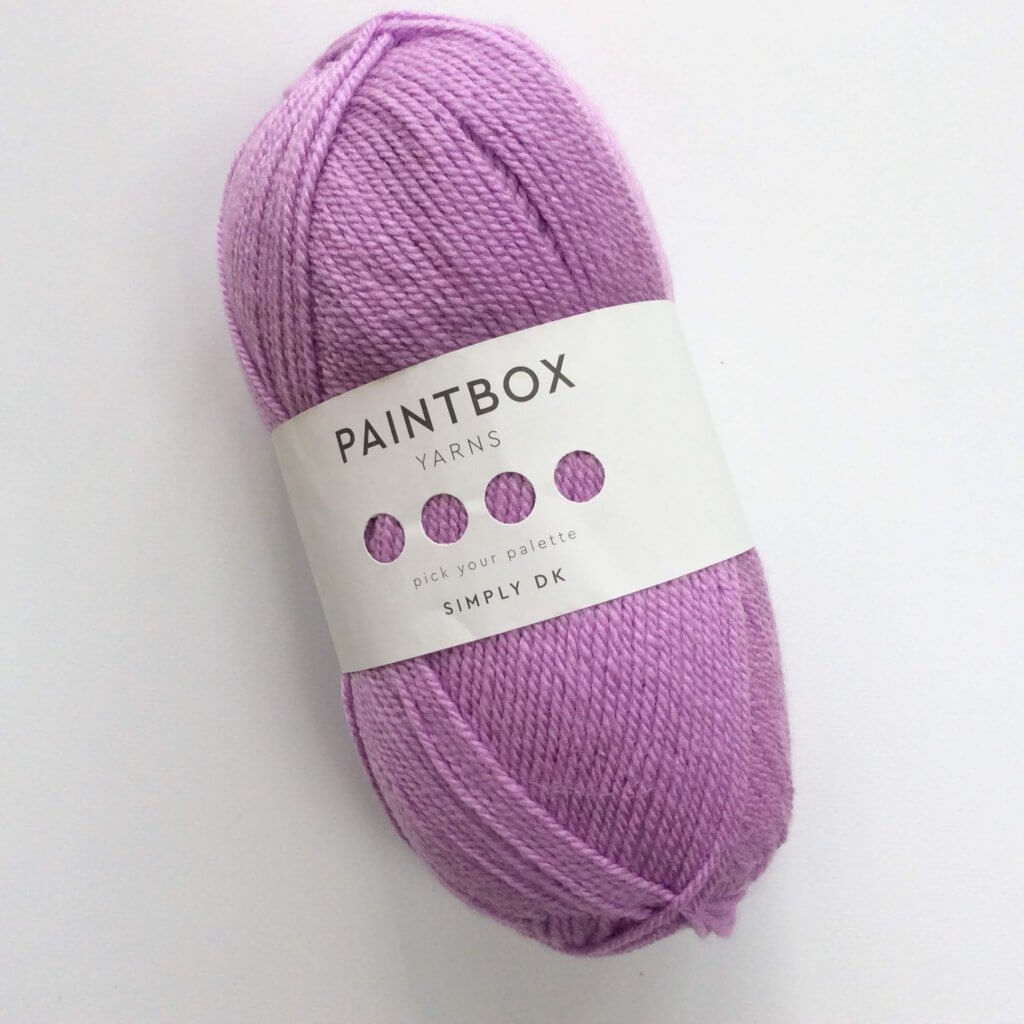
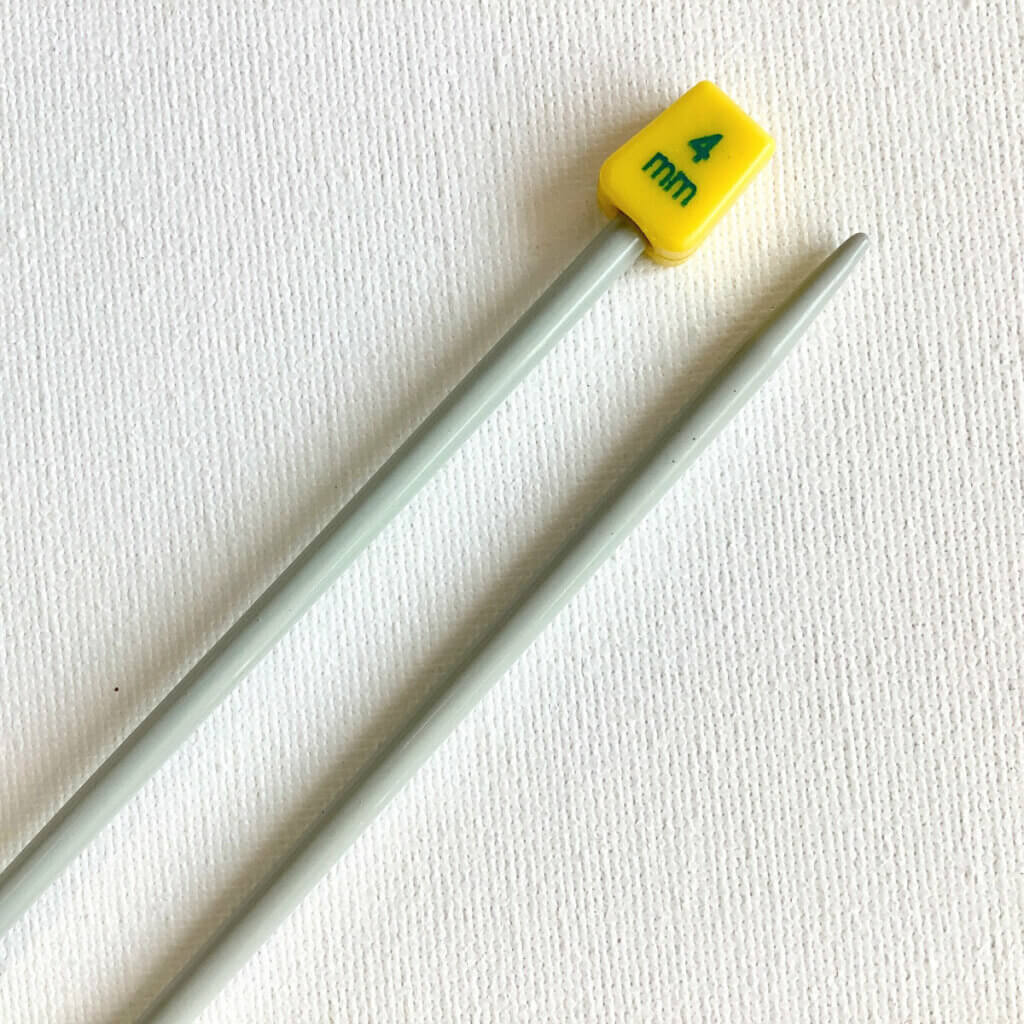
Yarn: Paintbox Yarns Simply DK, a good value, good quality 100% acrylic yarn, here in the color Tea Rose.
Knitting needles: This is a pair of straights that I picked up at the second-hand store when I started knitting, brand unknown.
Working a sl2-k2tog-p2sso step by step
- First, work your way across the row until you’ve reached the point where you want to make the decrease. In this case, I want to work the triple decrease 7 stitches in after the garter stitch edge.
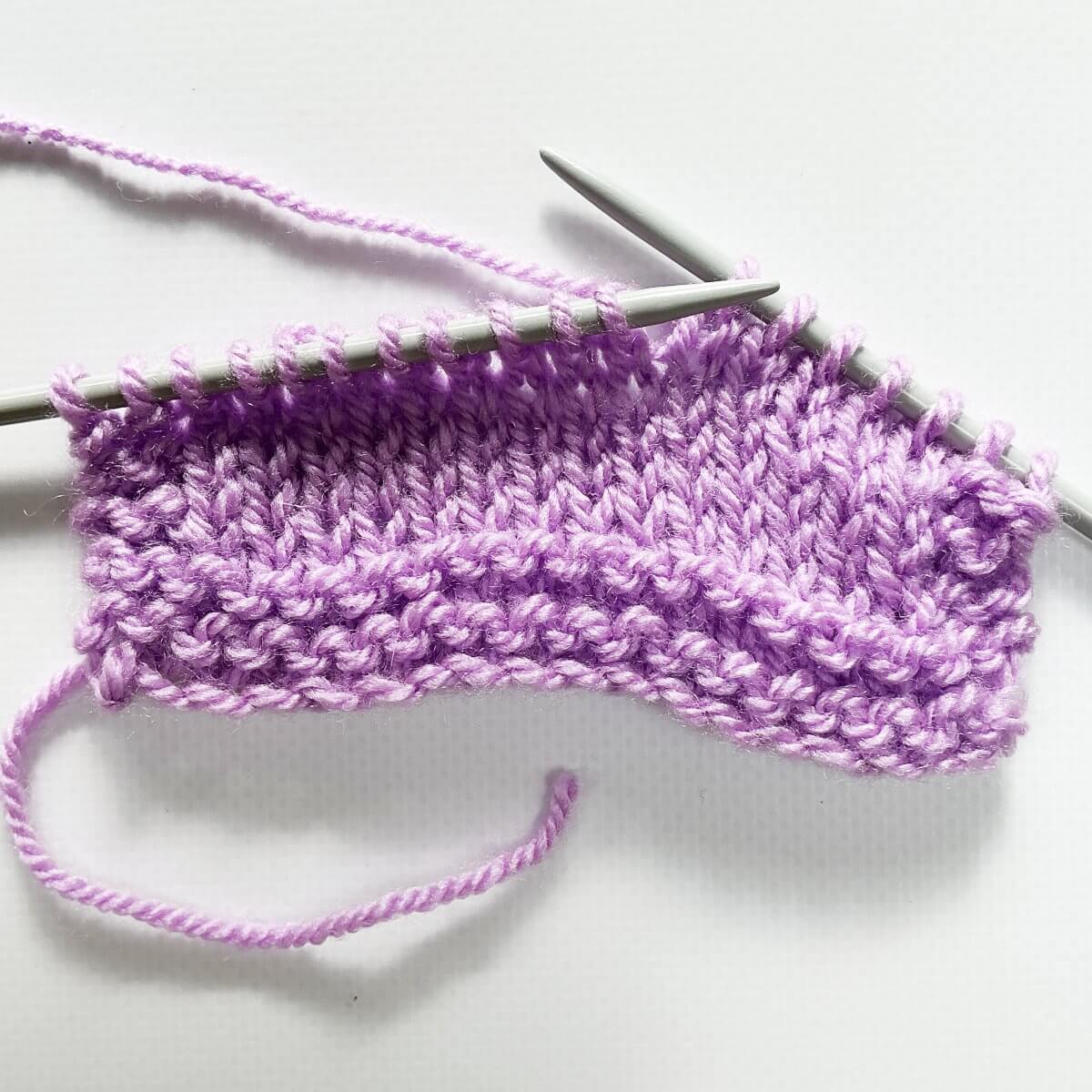
- Next, insert the tip of the right-hand needle into the first 2 stitches at the same time as if to knit.
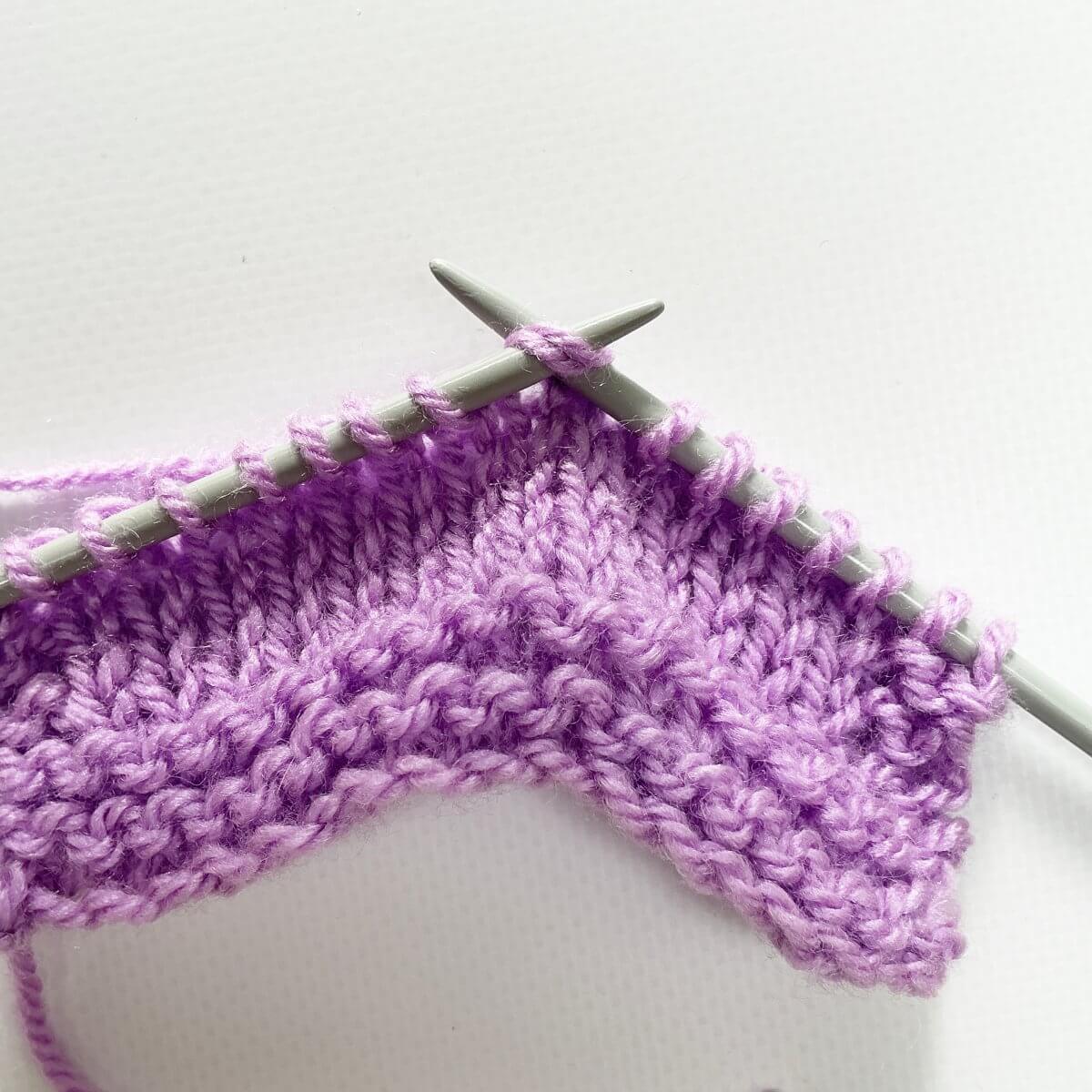
- Pass these stitches to the right-hand needle.
This step changes the orientation of the stitches, influencing how they appear when the decrease has been finished.
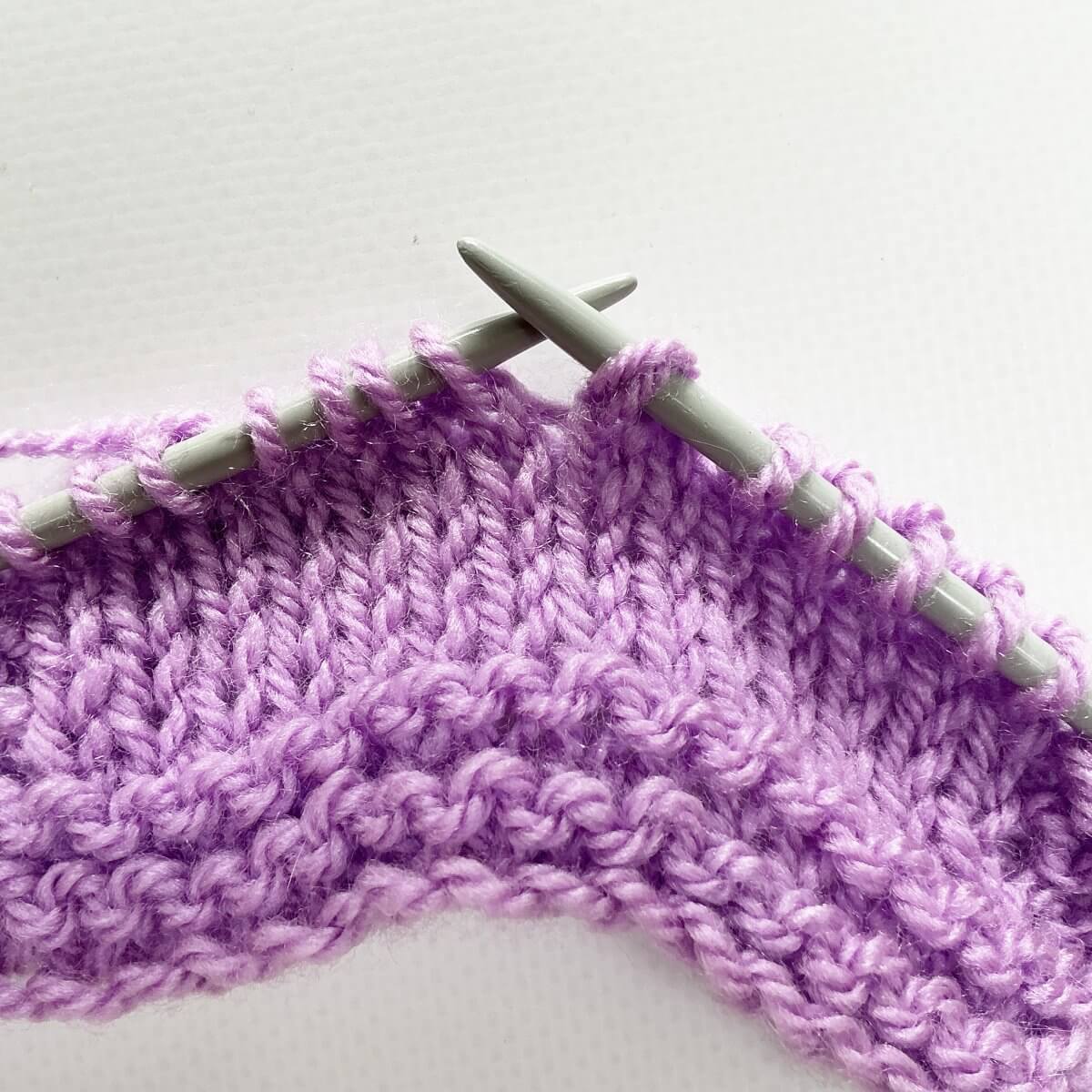
- Over the next 2 stitches, we will be working a k2tog decrease. To do so, we first insert the right-hand needle into the 2 stitches as if to knit.
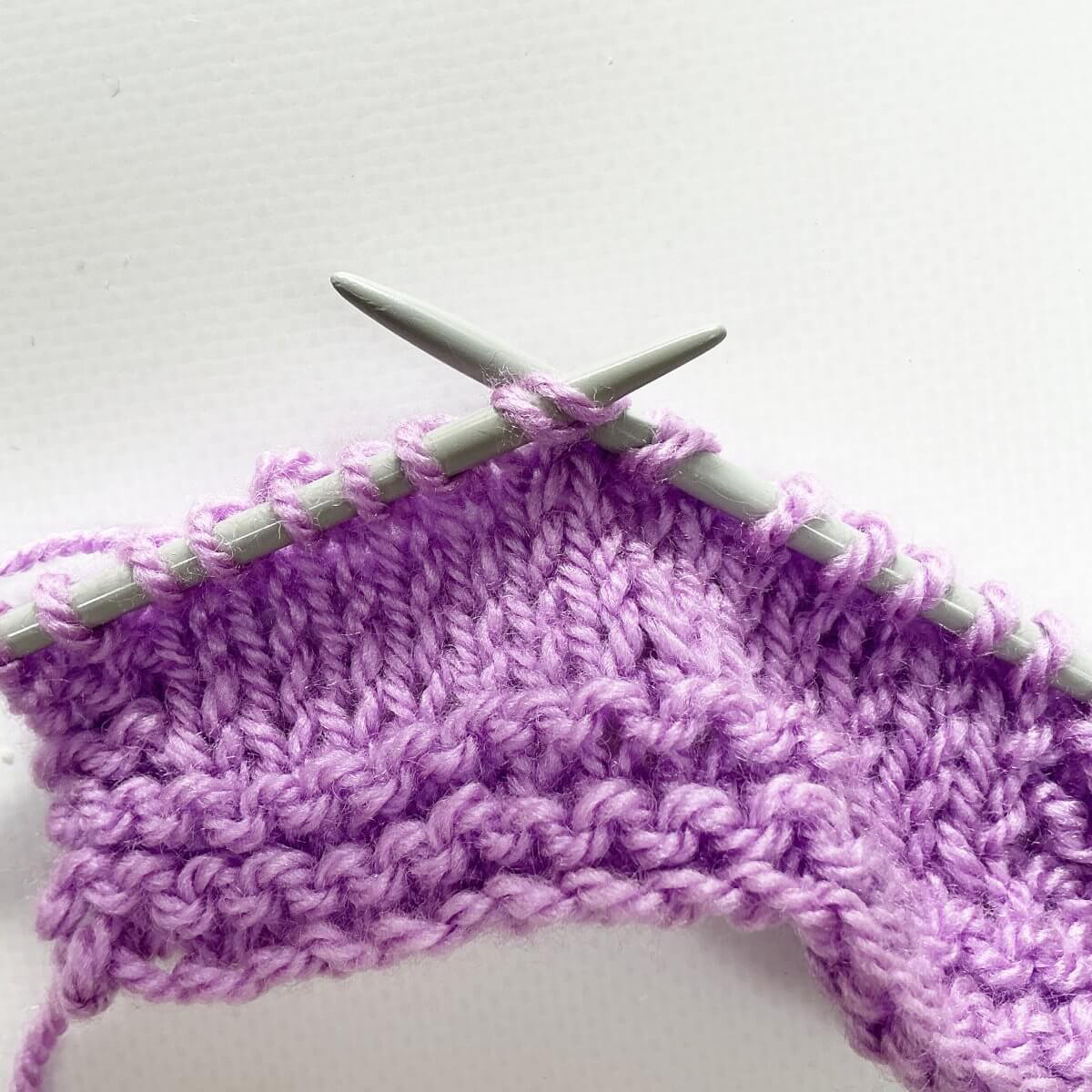
- Wrap the yarn around the needle…
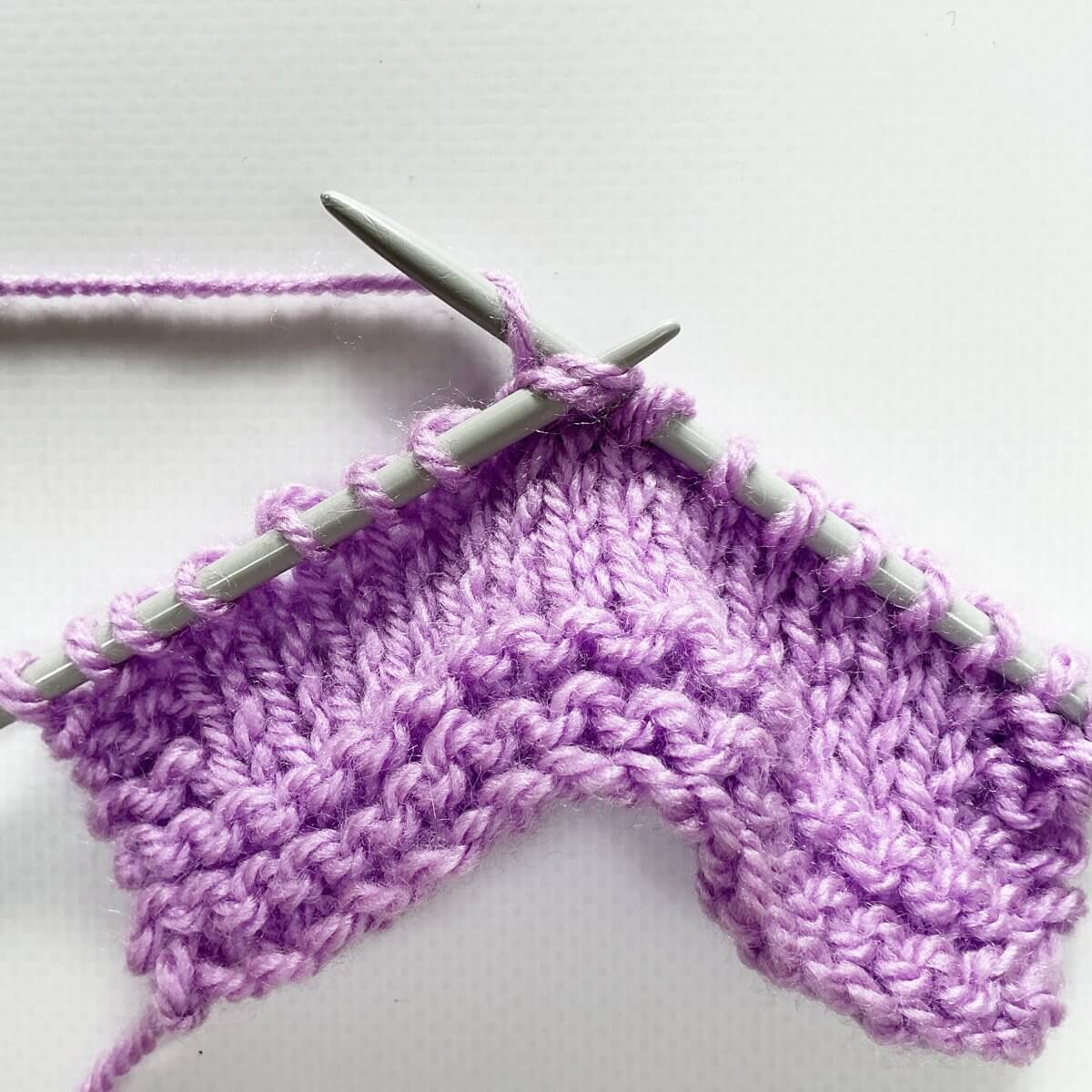
- …and pull it through the stitches.
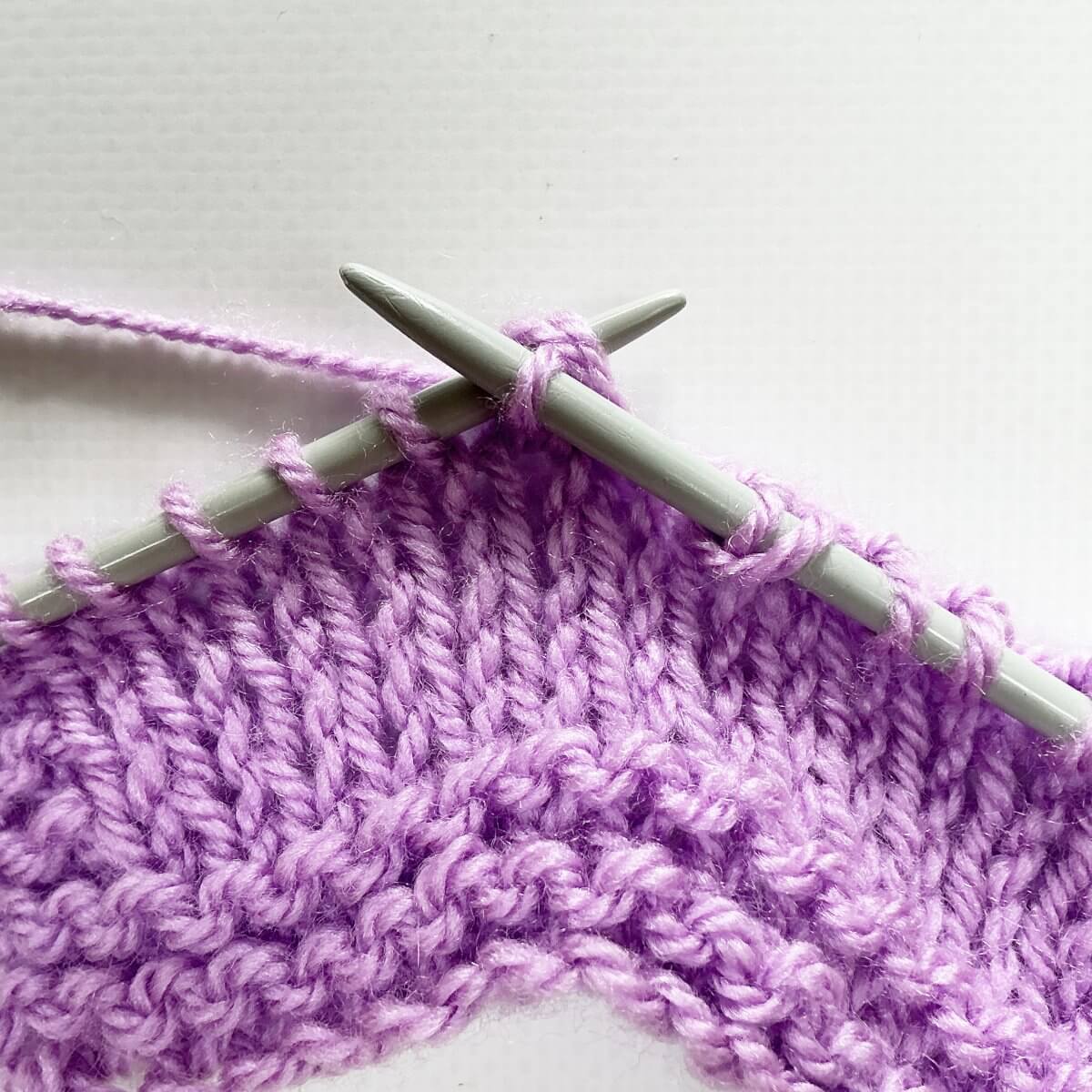
- To finish the k2tog decrease, slip the original stitches off the left-hand needle.
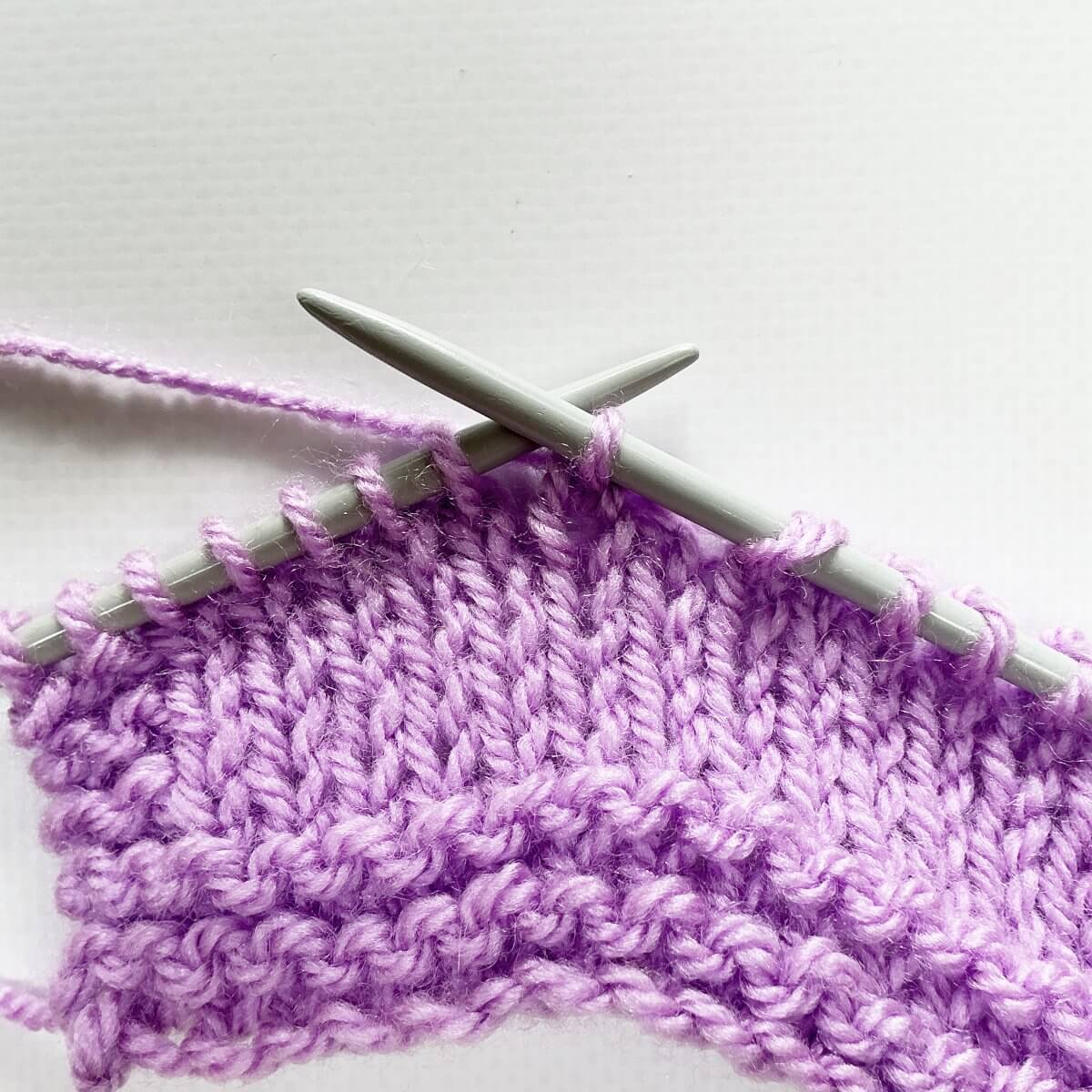
- To finish the triple decrease, we will be passing the initially slipped stitches over the stitch that was left after working the k2tog. First, insert the left-hand needle into those 2 stitches….
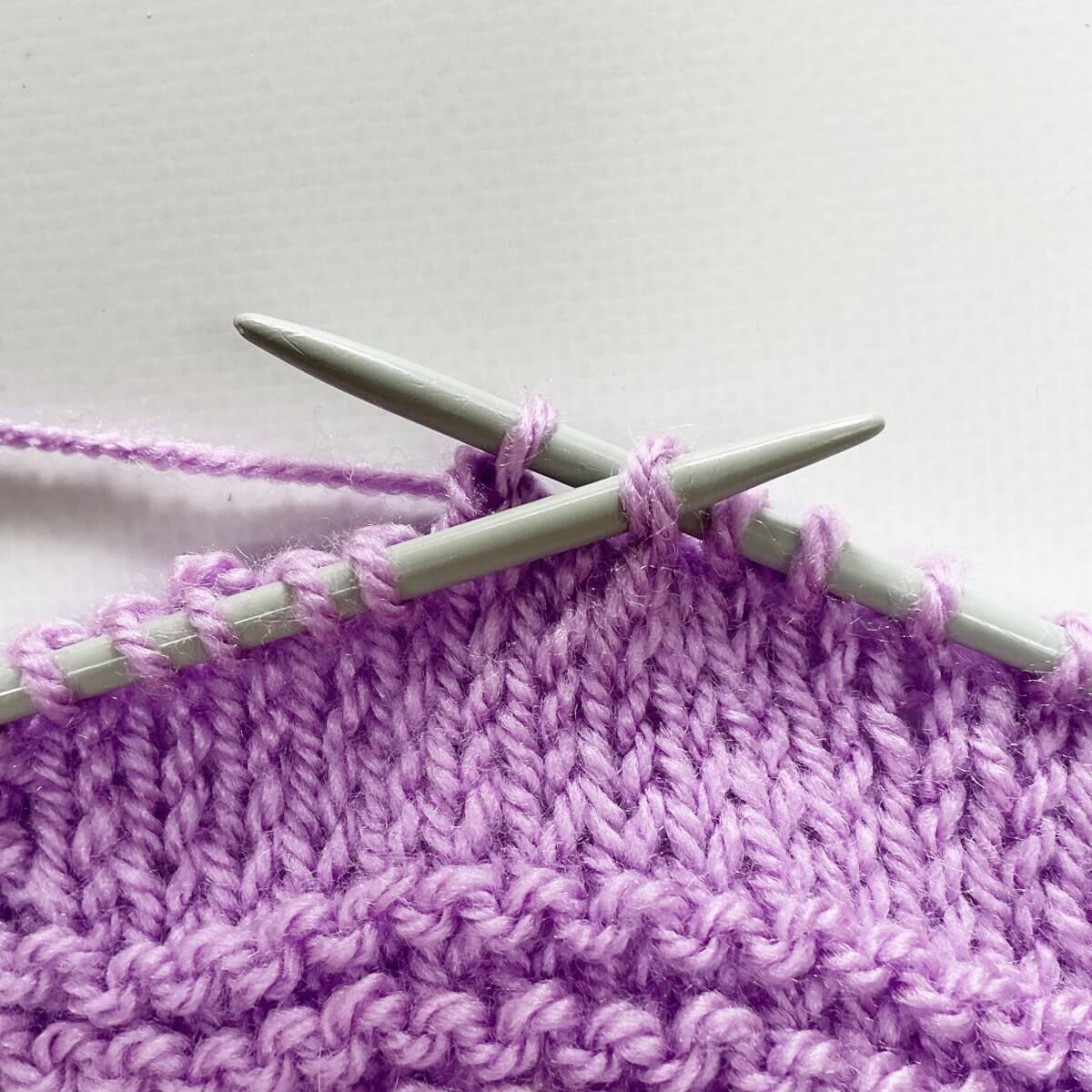
- …. then pass them over the other stitch.
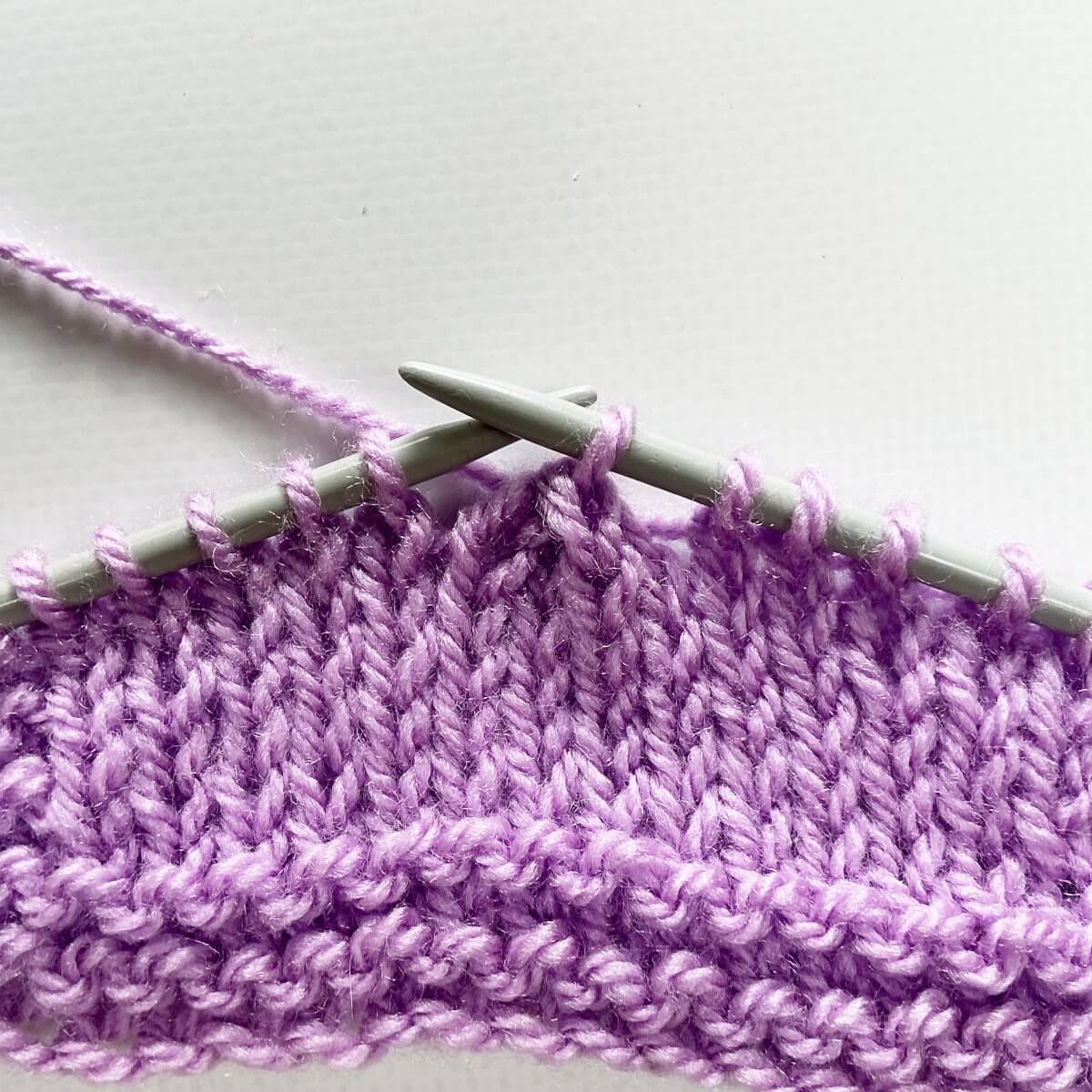
The result
The below pictures show how it looks after 2 more decrease rows have been worked. First from the right side, then from the wrong side of the fabric. Please note that in order to have any subsequent decreases line up correctly, any new decrease has to be started 1 stitch before the stitch on top of the resulting one from the previous decrease. And that’s all there is to it!
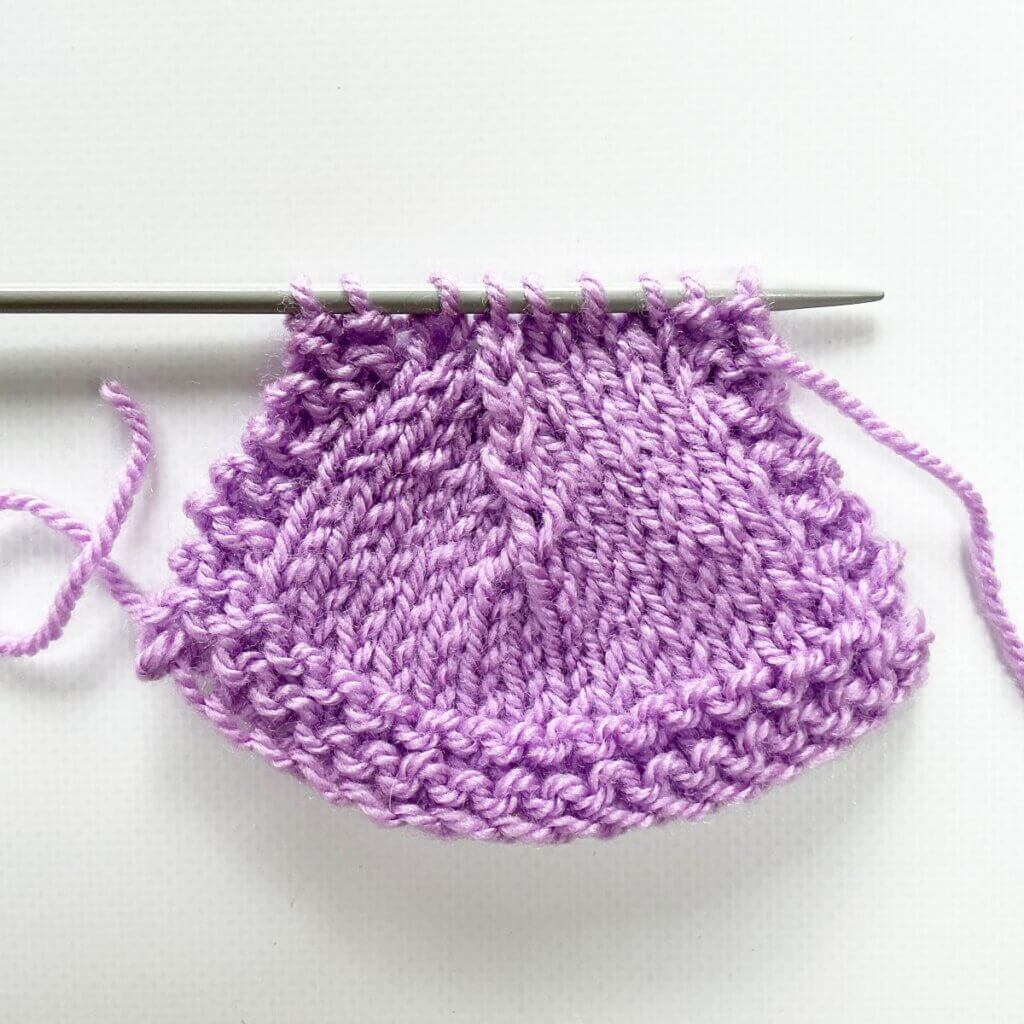
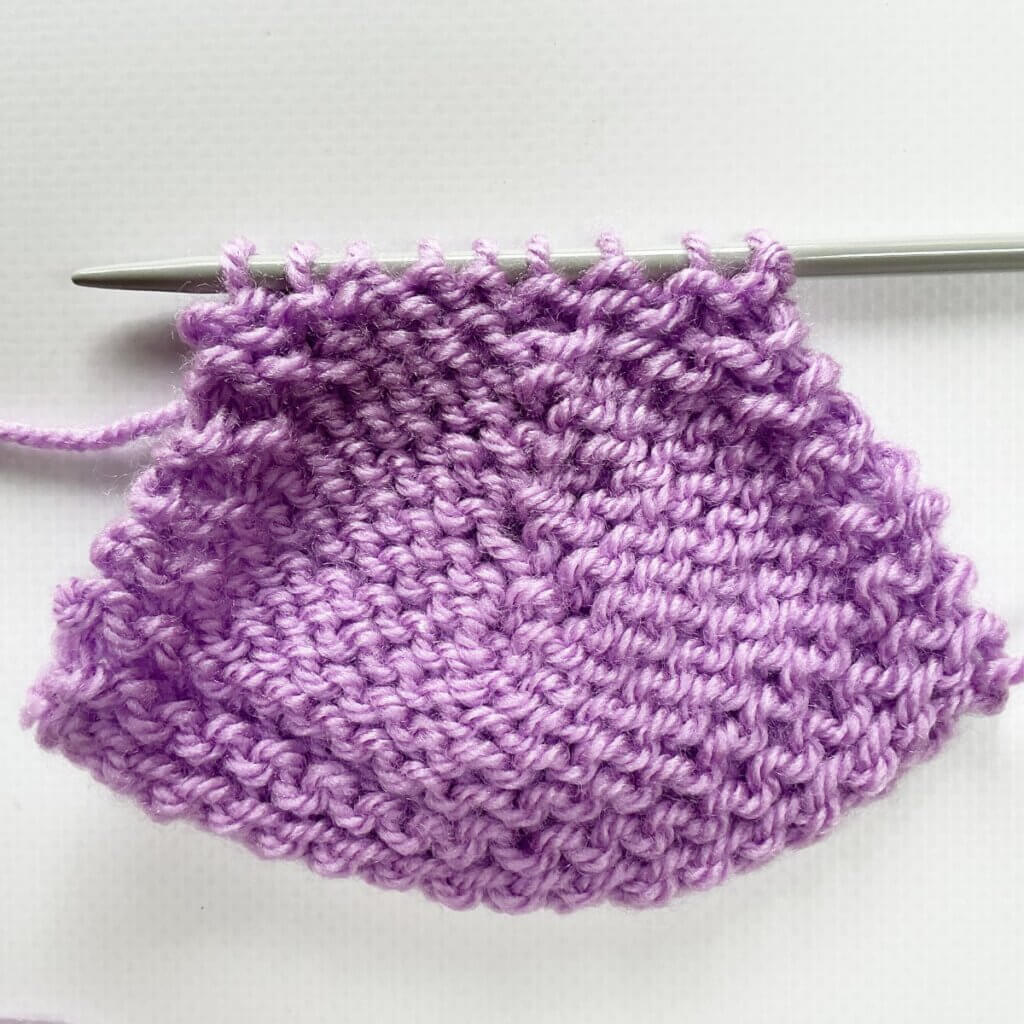

Thanks to my Patreon supporters for bringing you this freebie! Creating quality patterns and tutorials is a lot of work and resource-intensive. However, I find it important to give you free content like this tutorial. Thanks to the generous support of my Patreon supporters, I can make it happen. Thank you, patrons! Click here to join, or click here to read more about La Visch Designs on Patreon.
tutorial – the sl2-k2tog-p2sso left-leaning centered decrease Read More »

